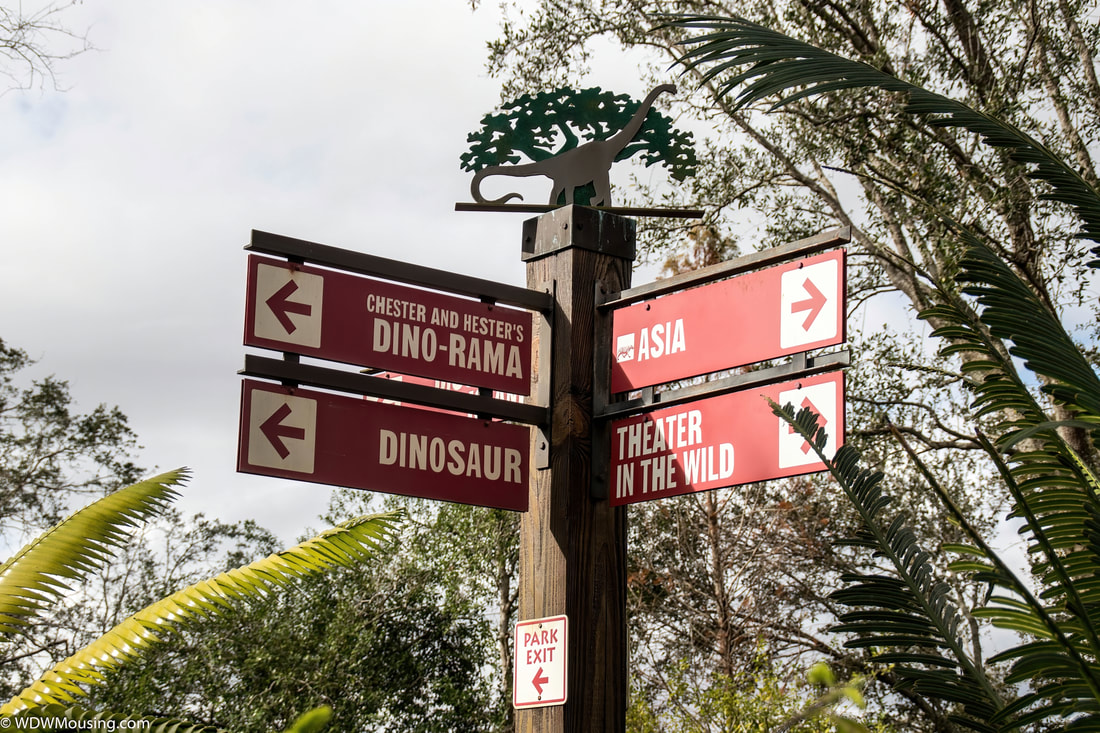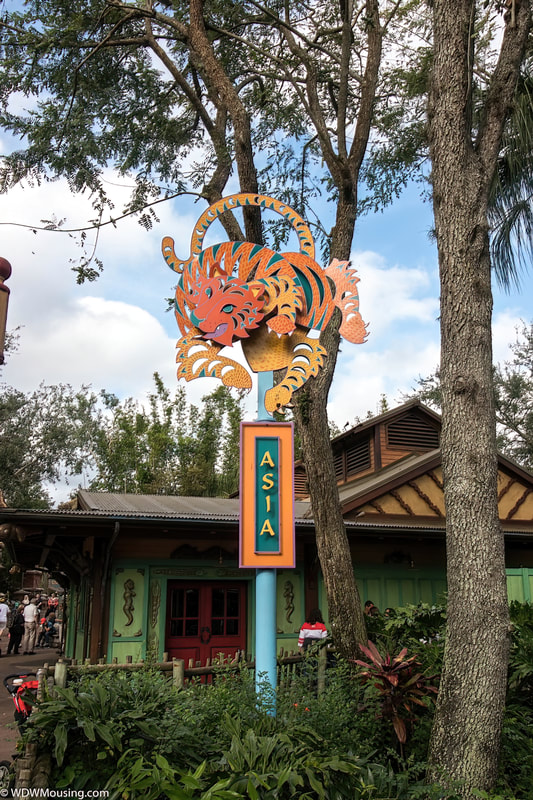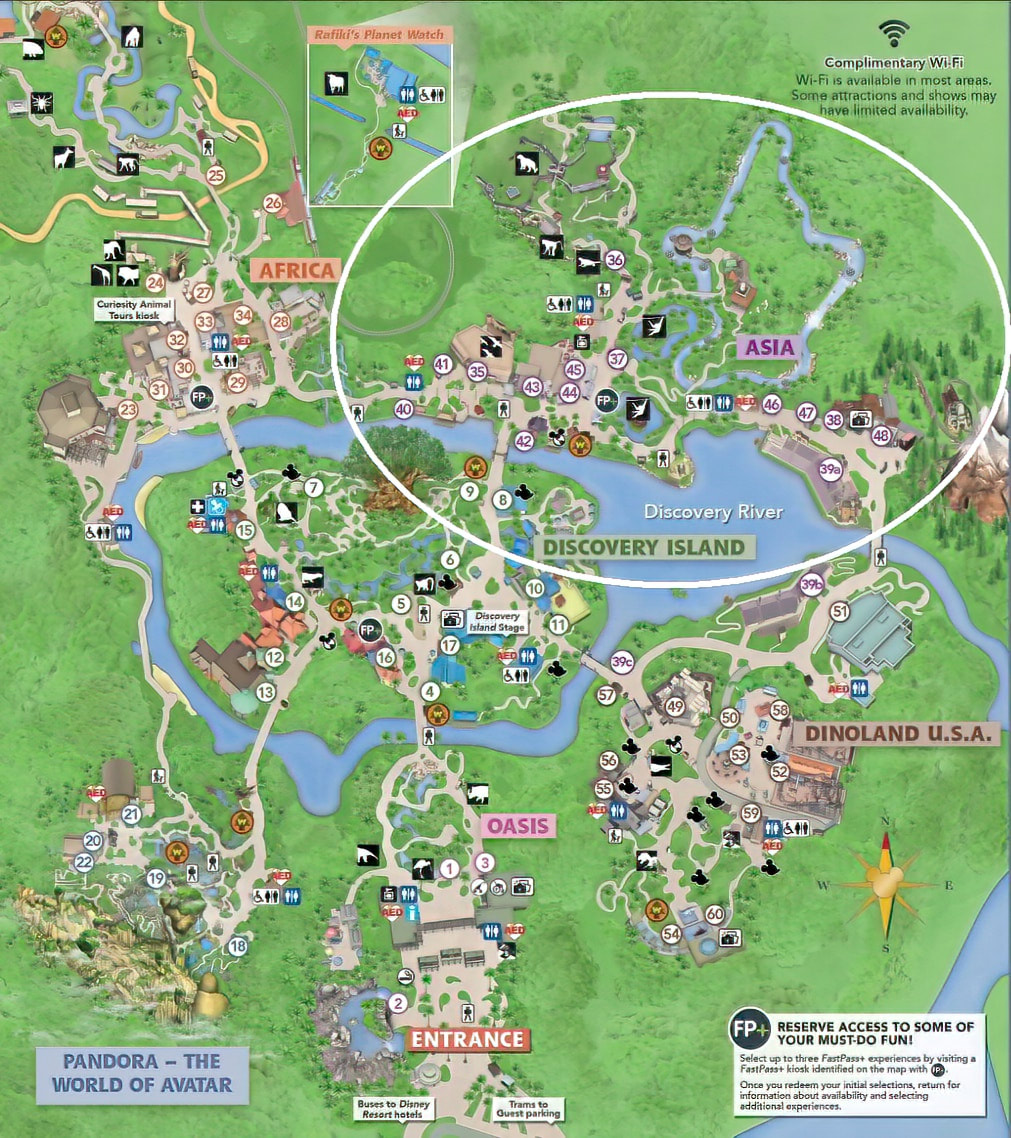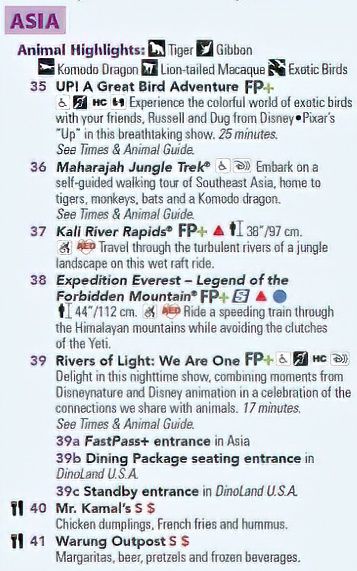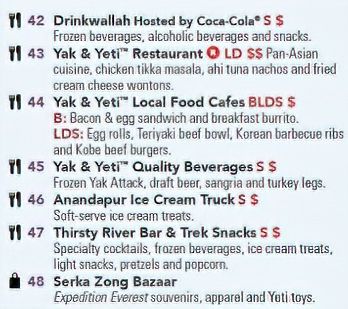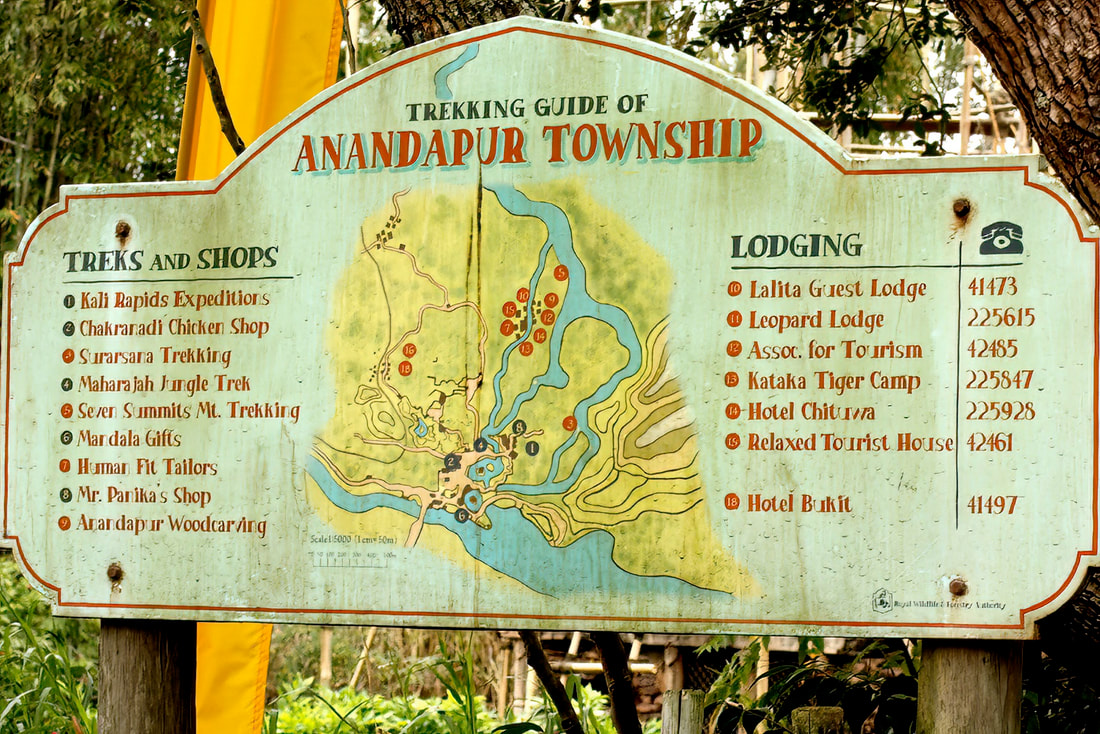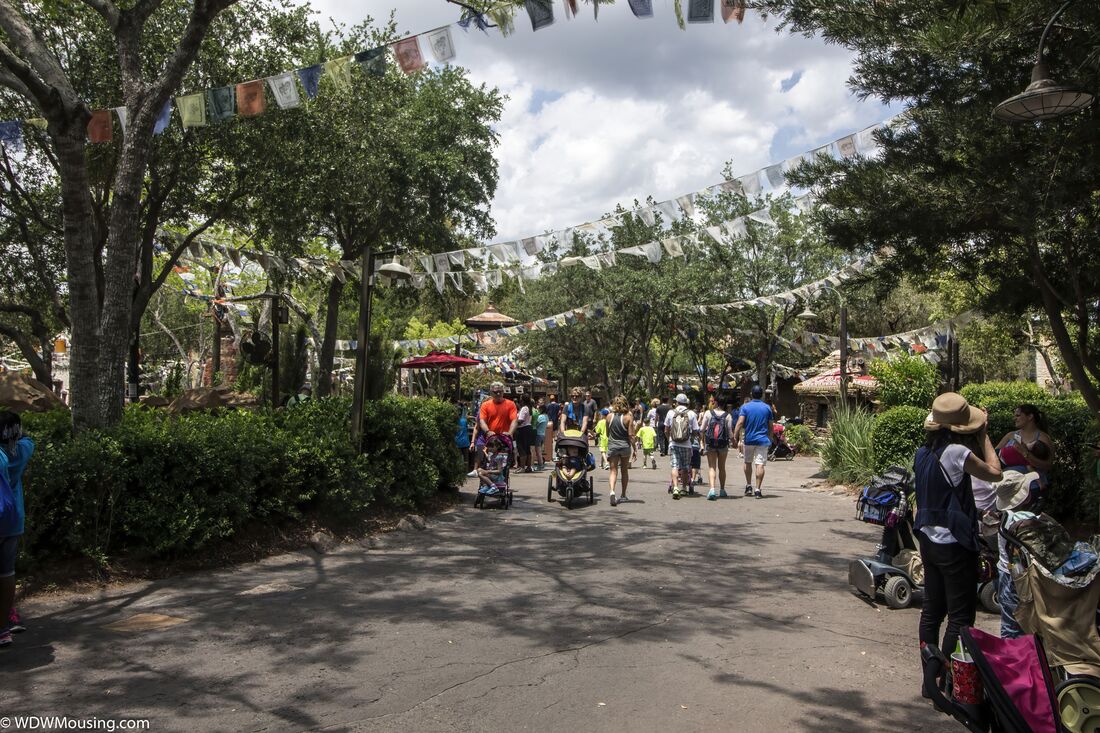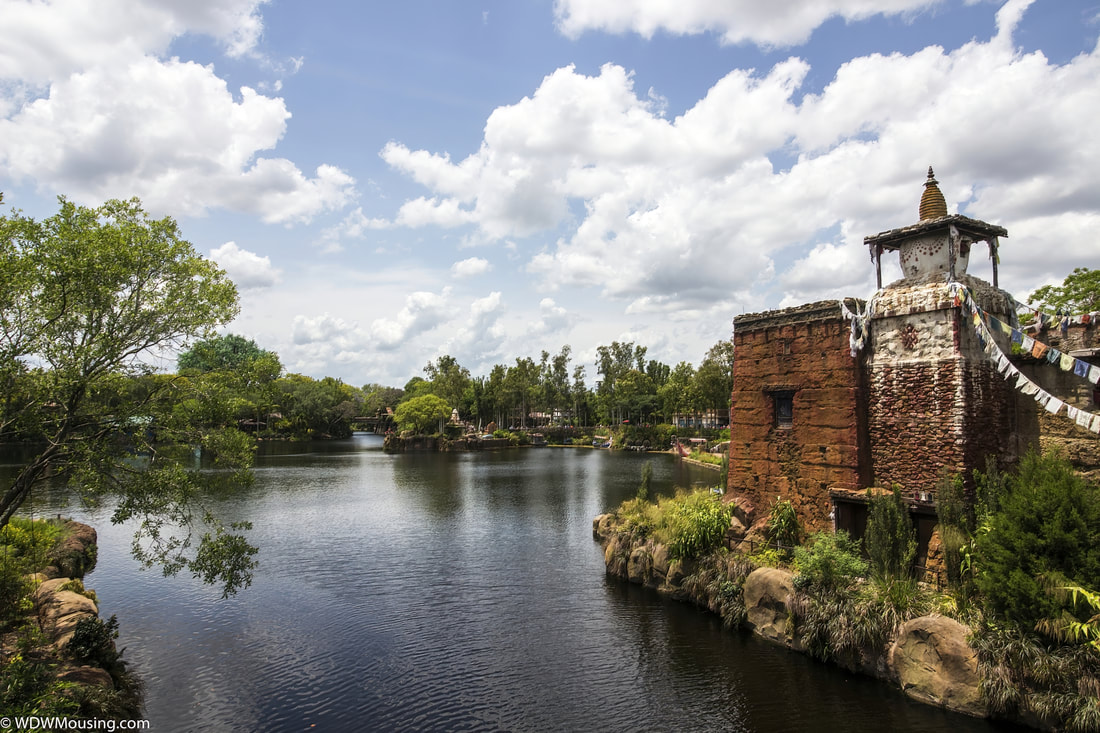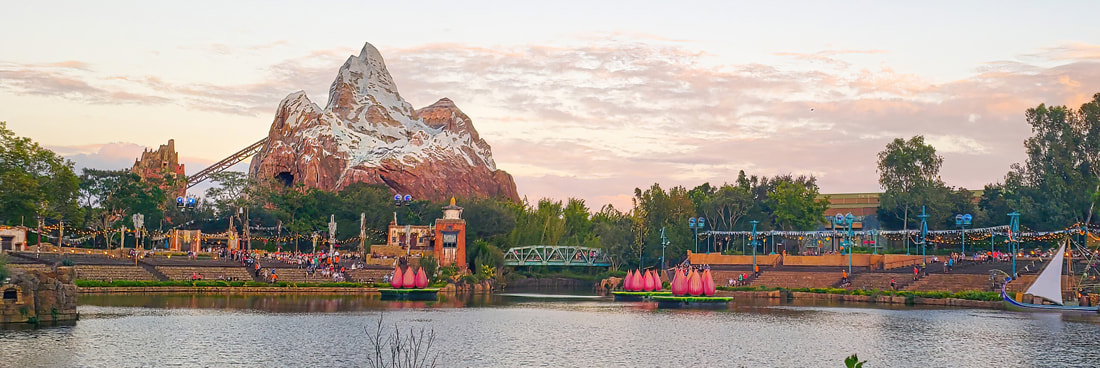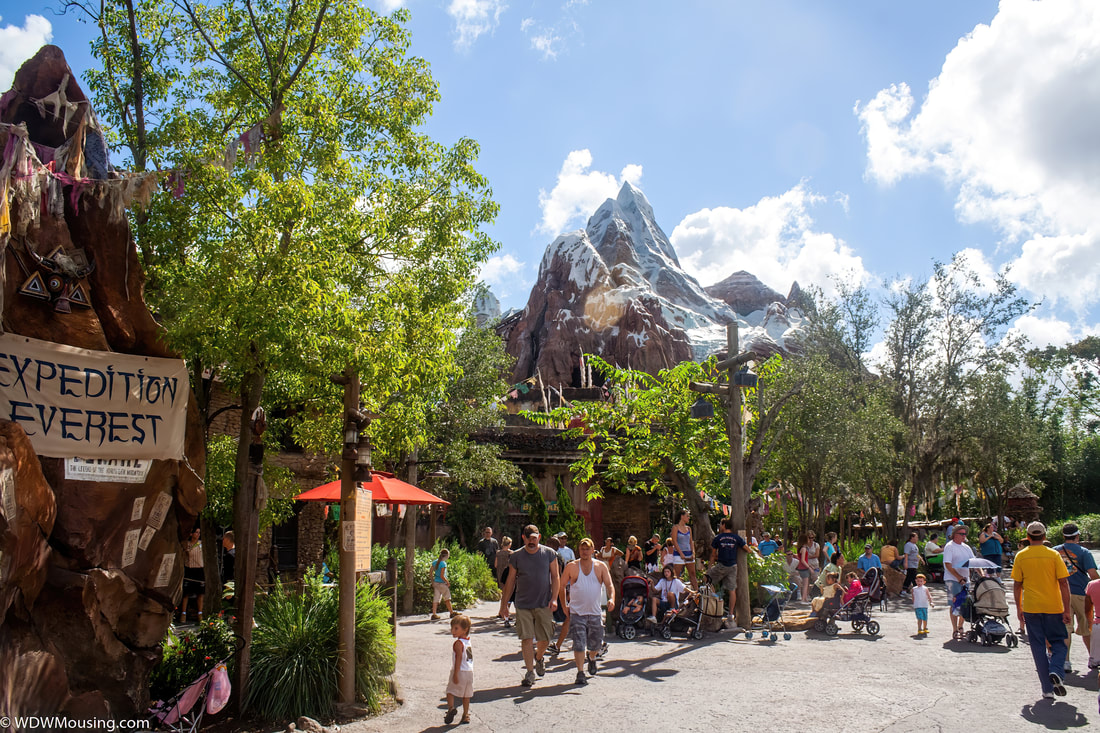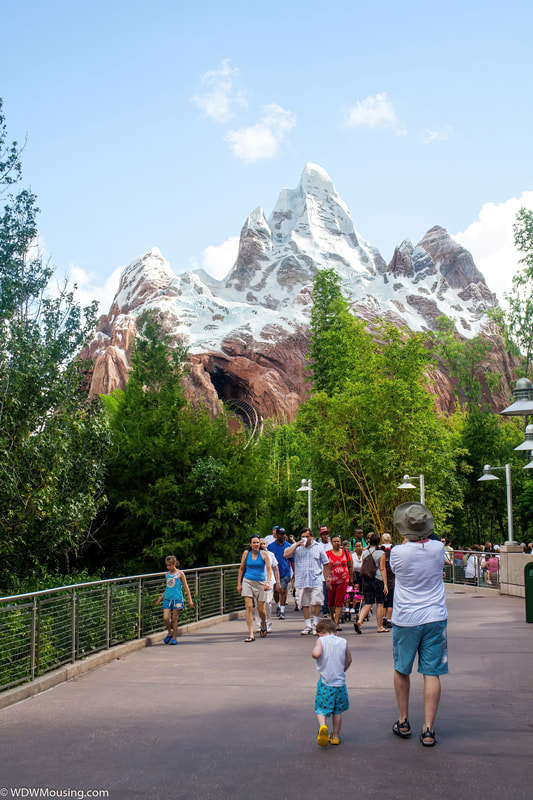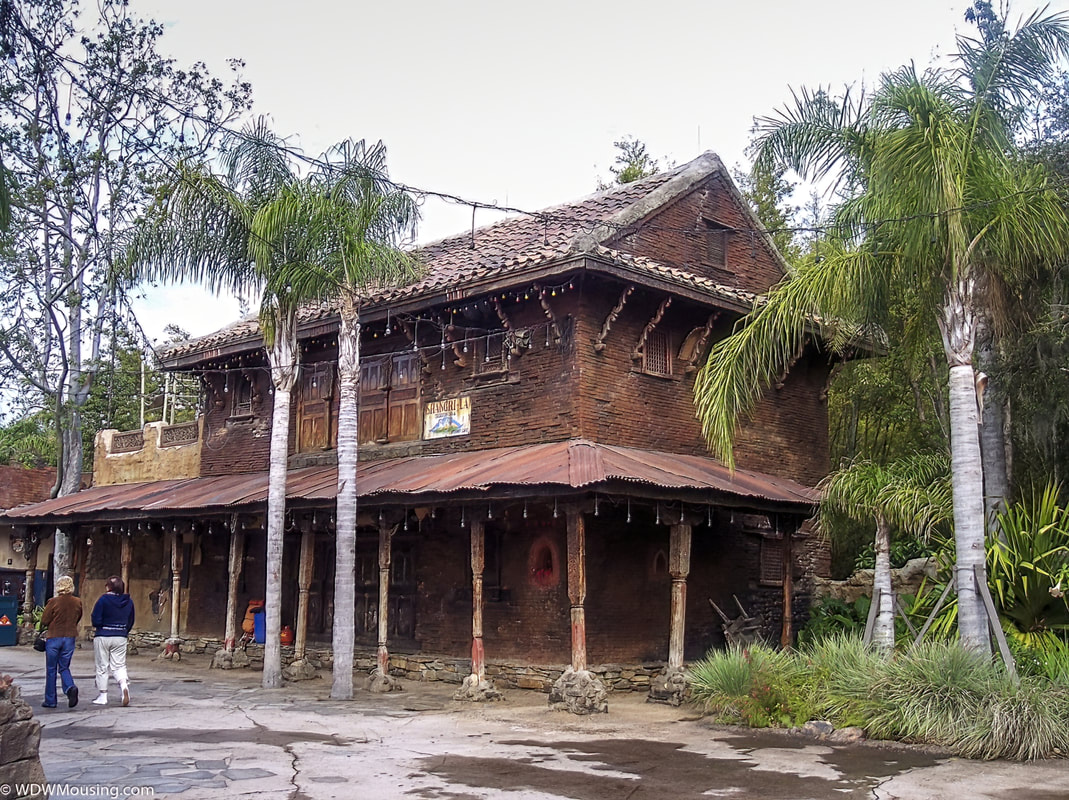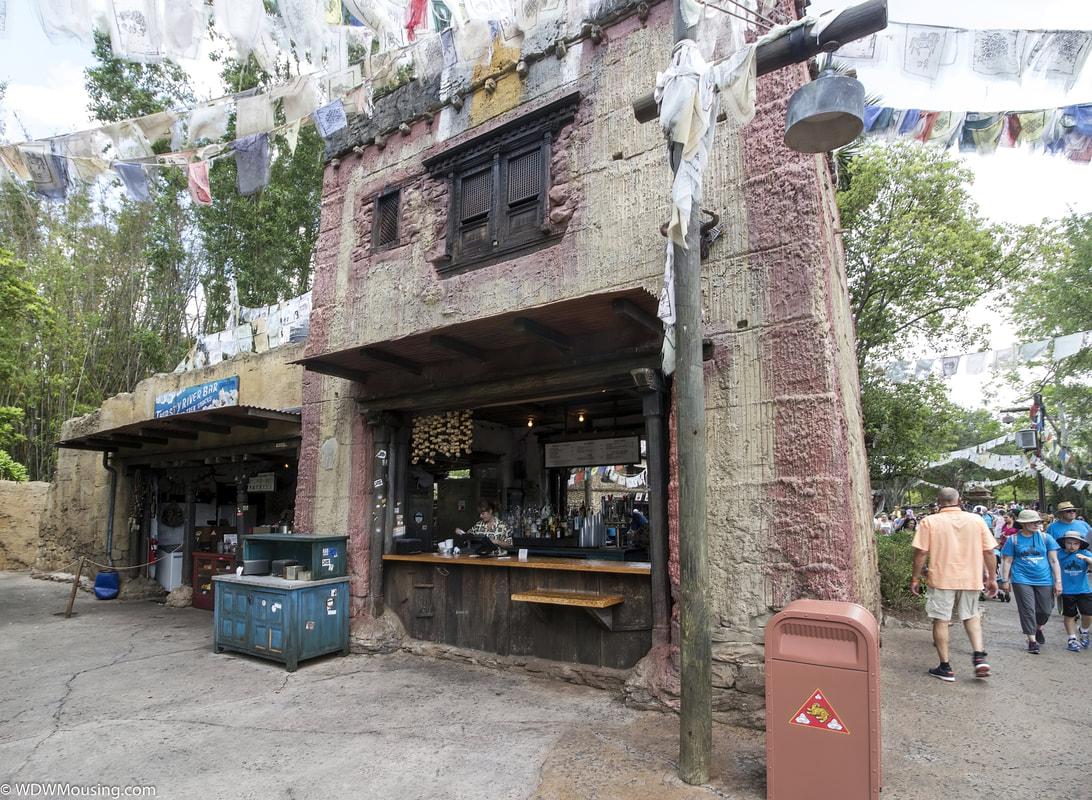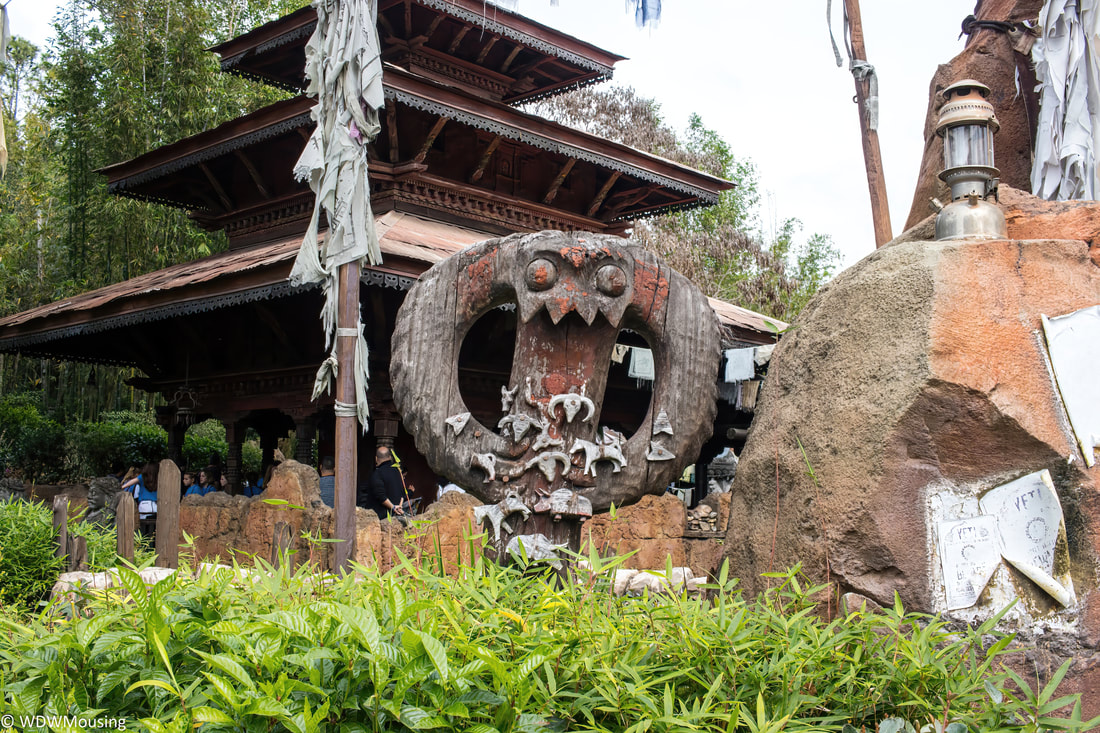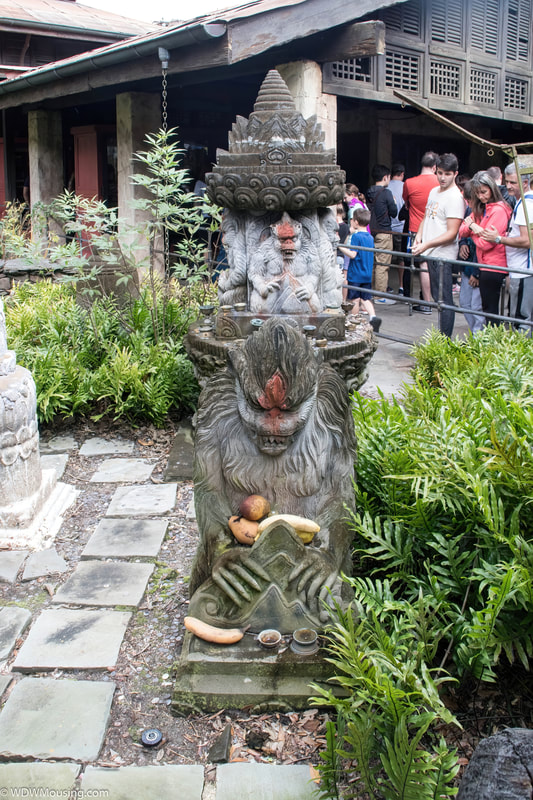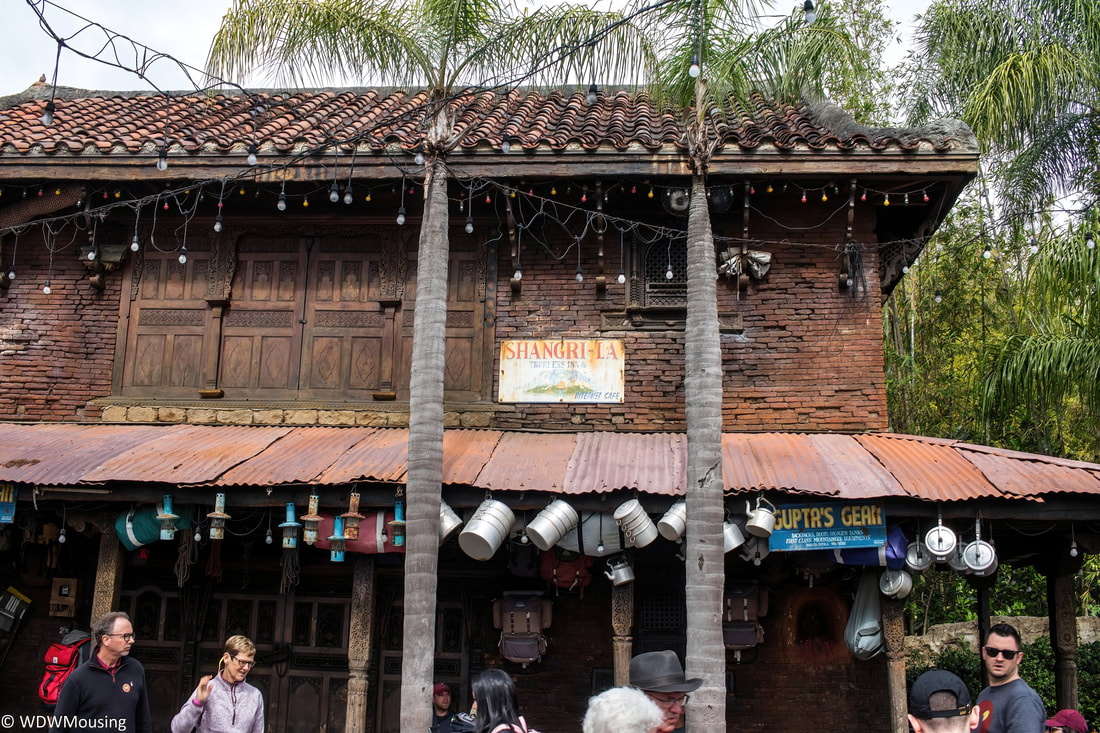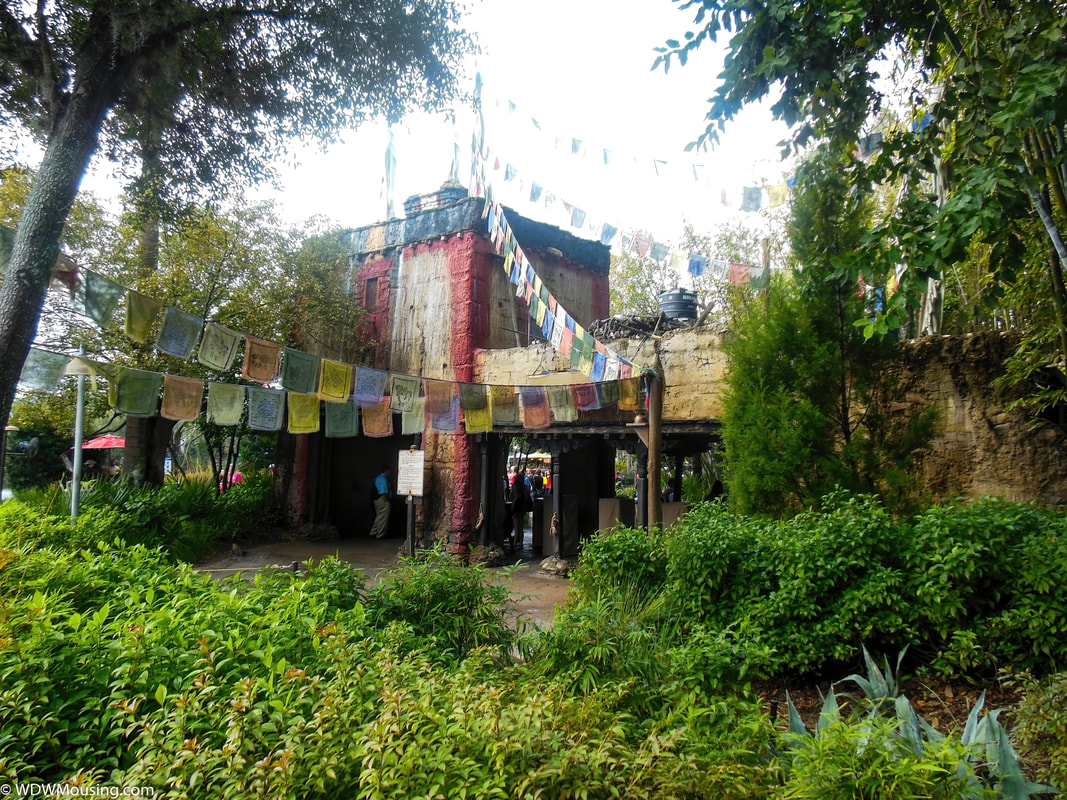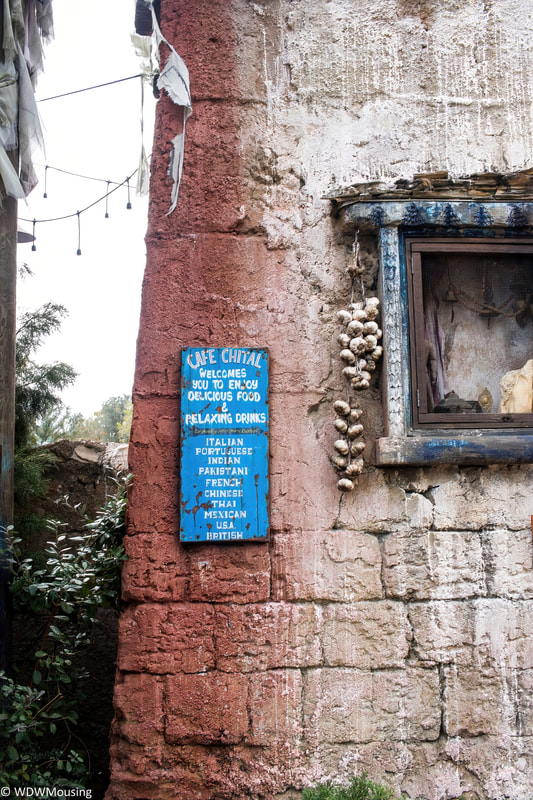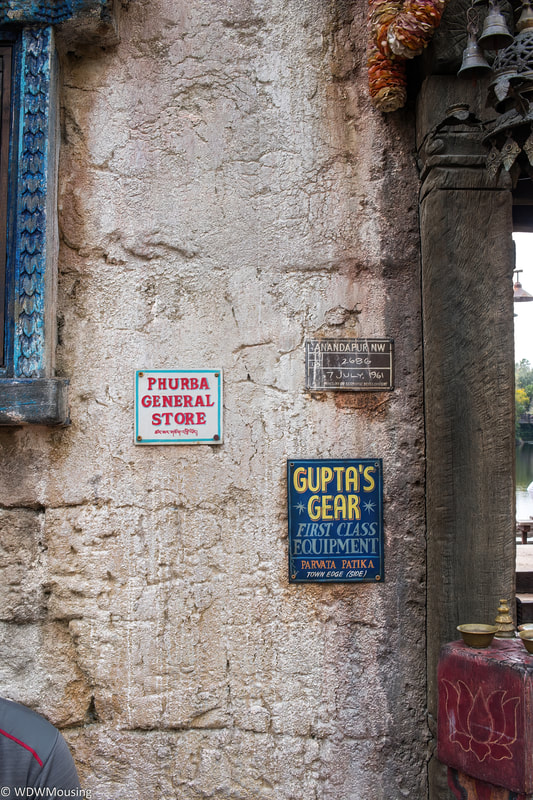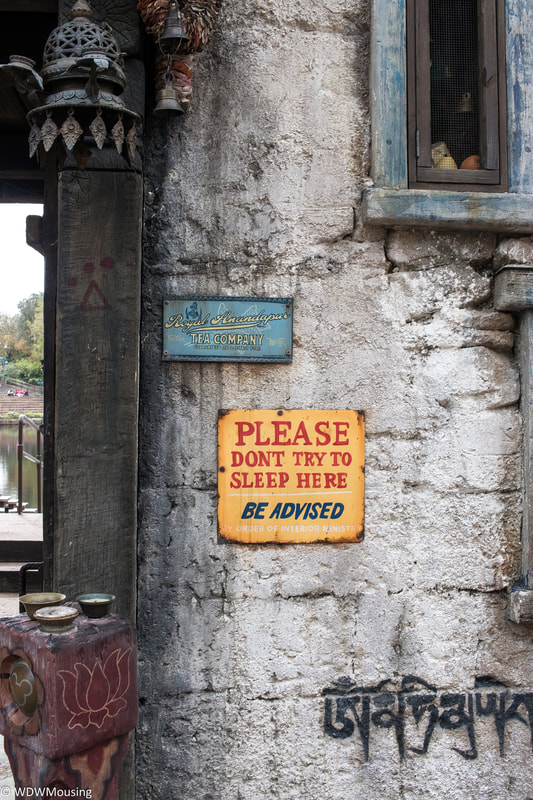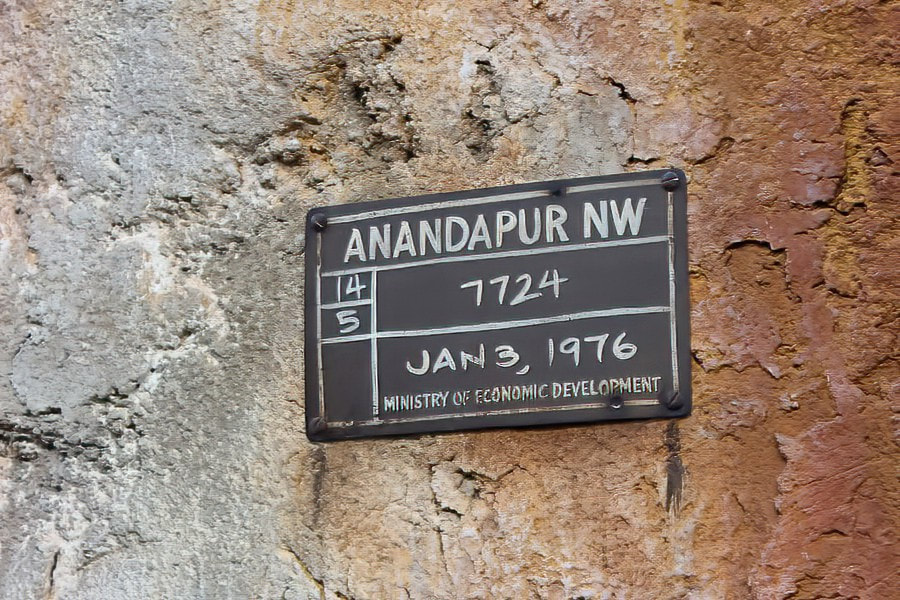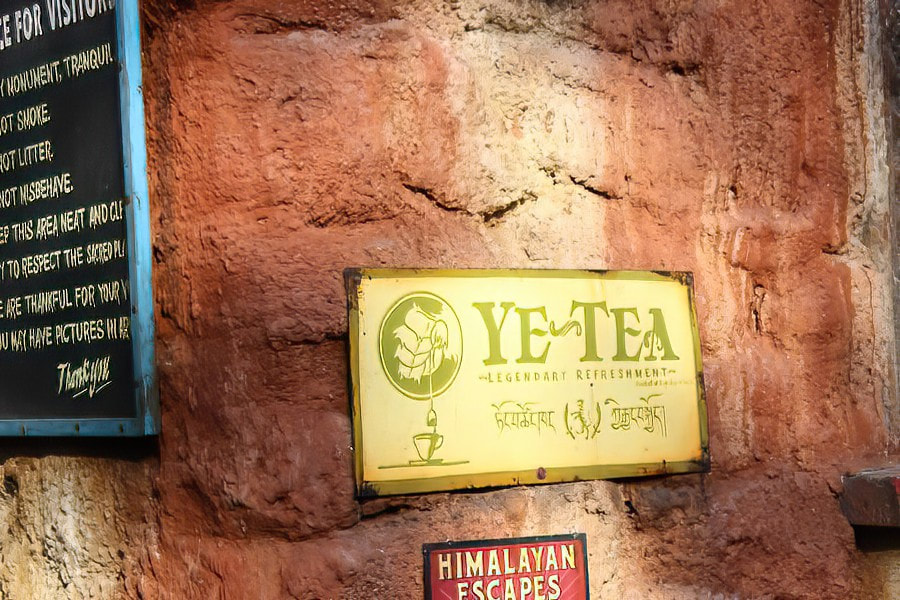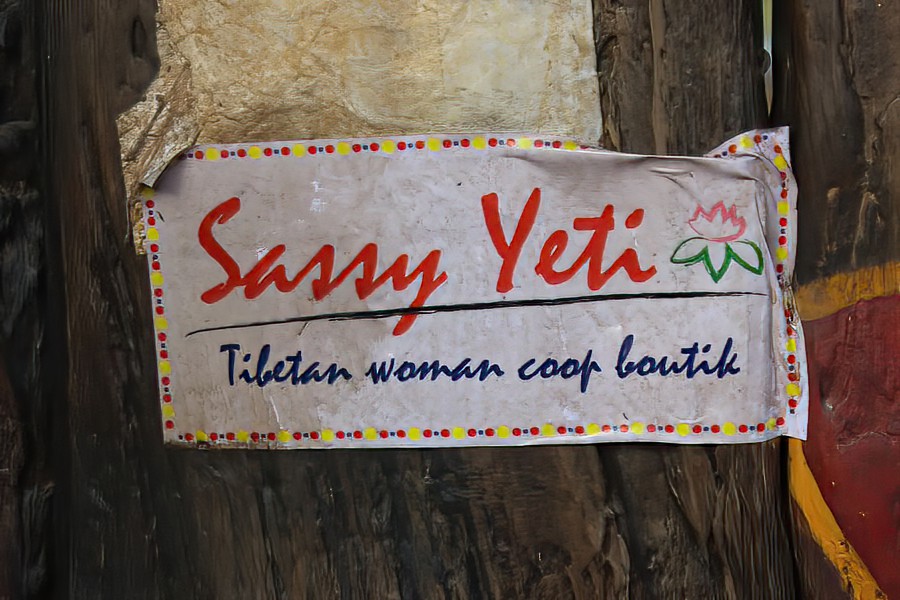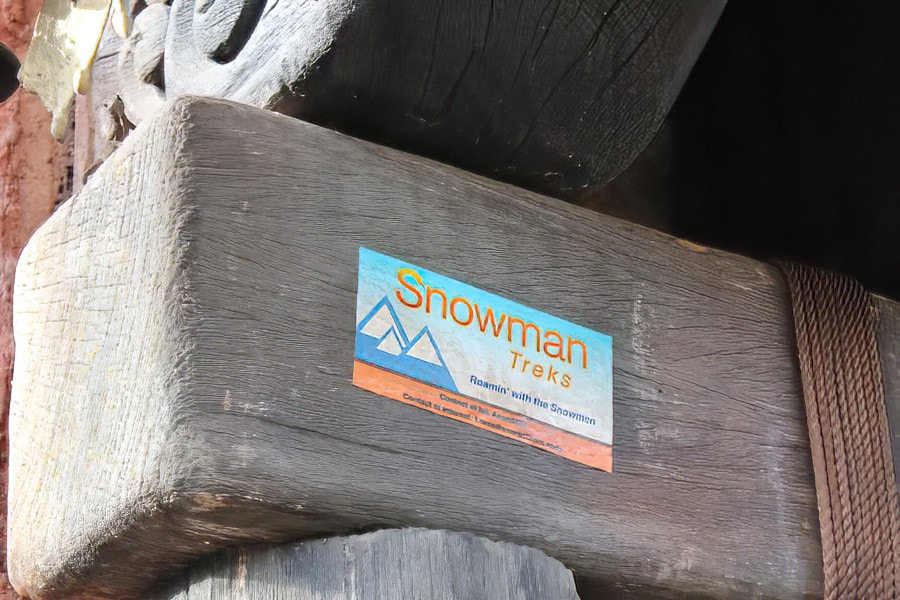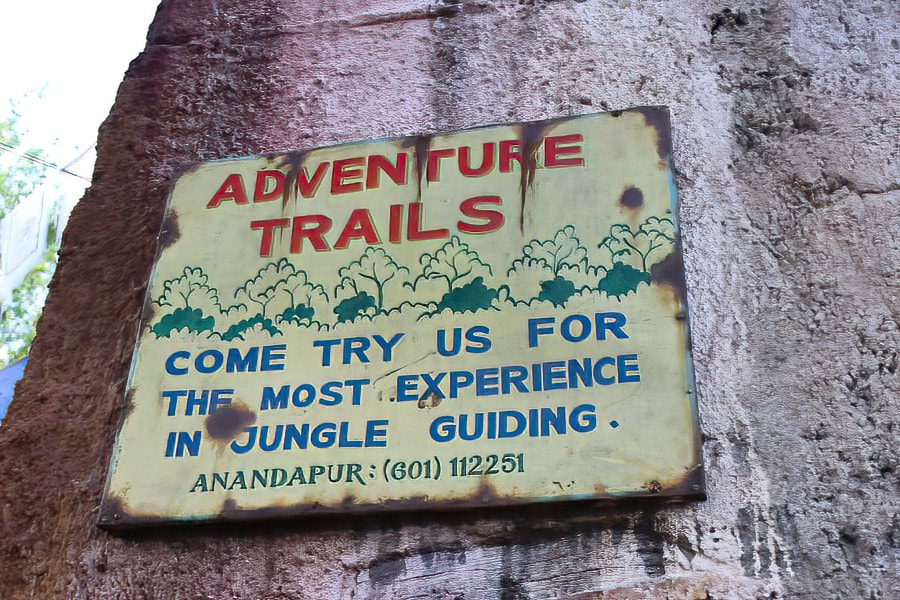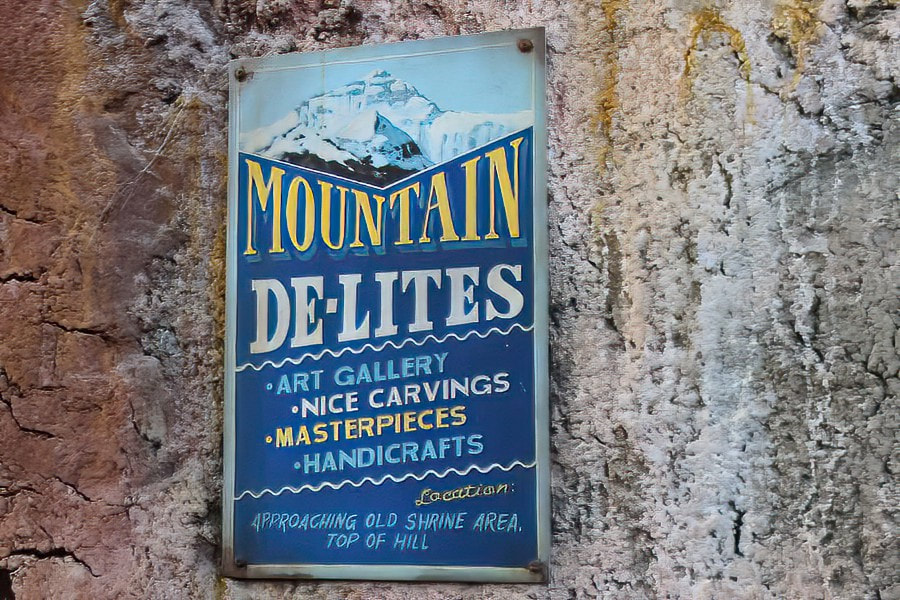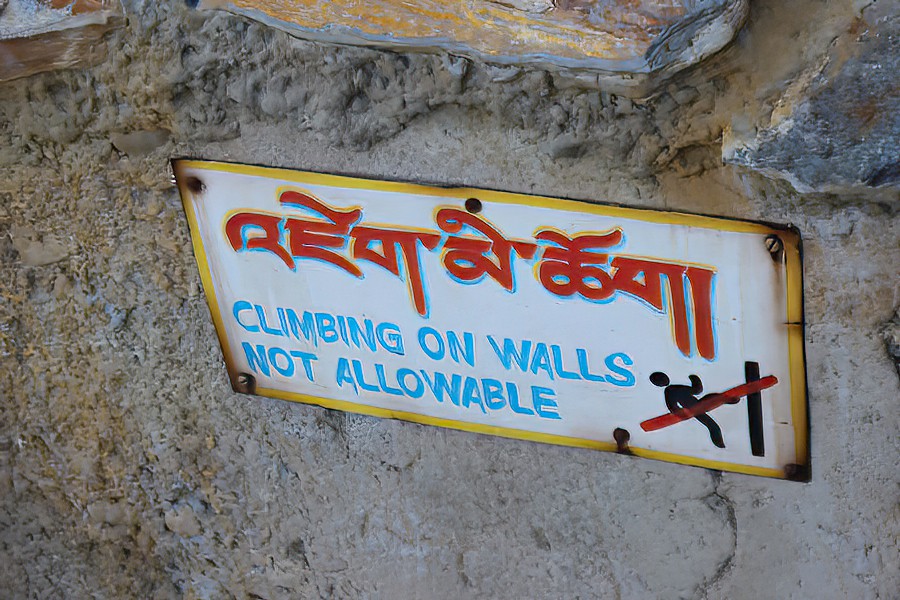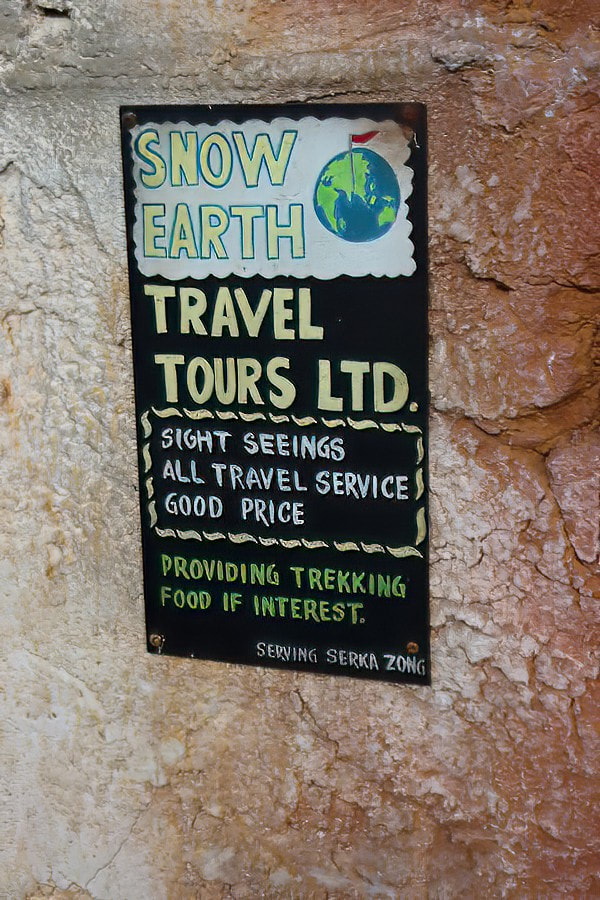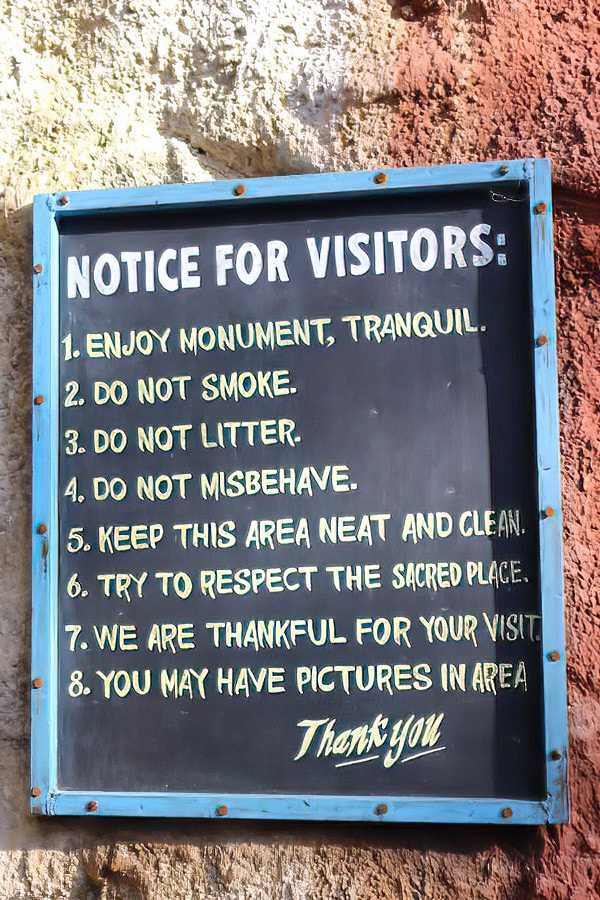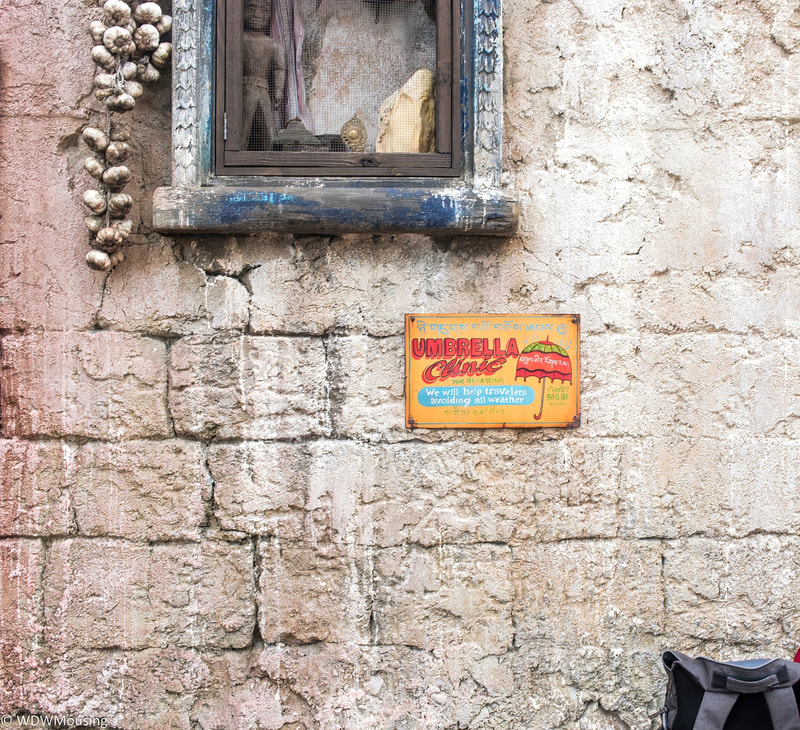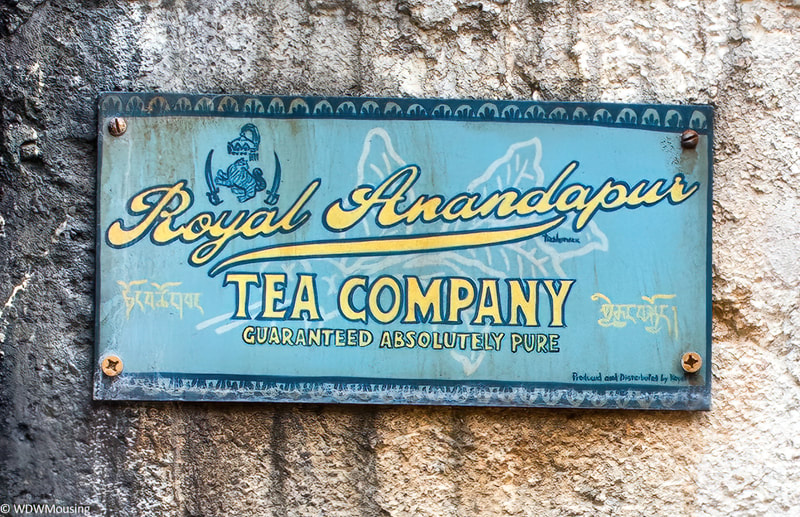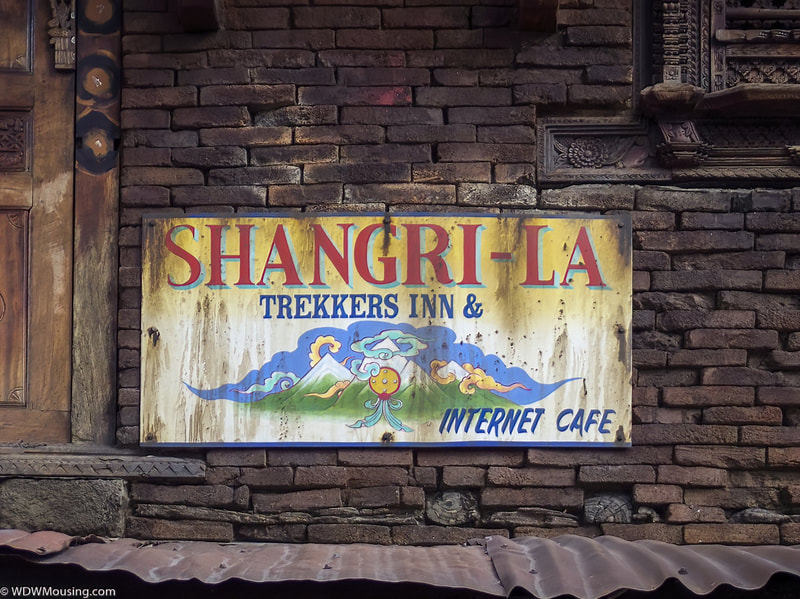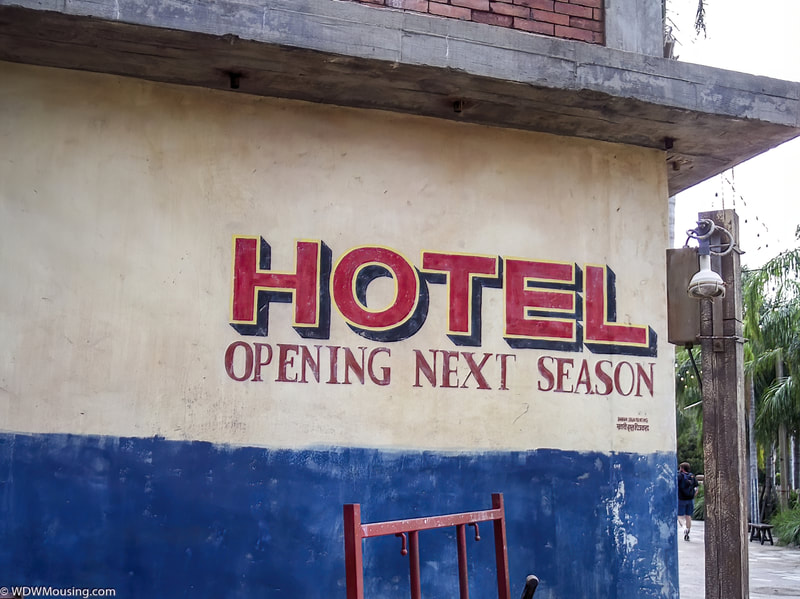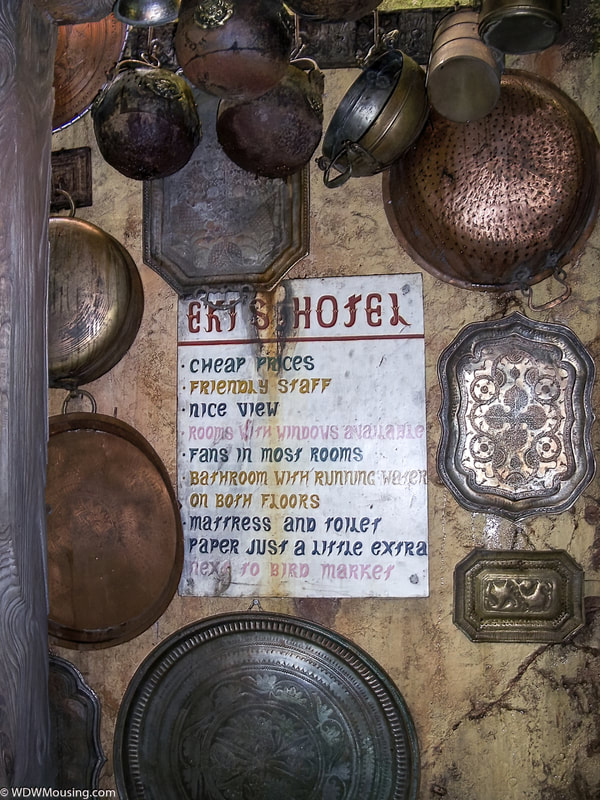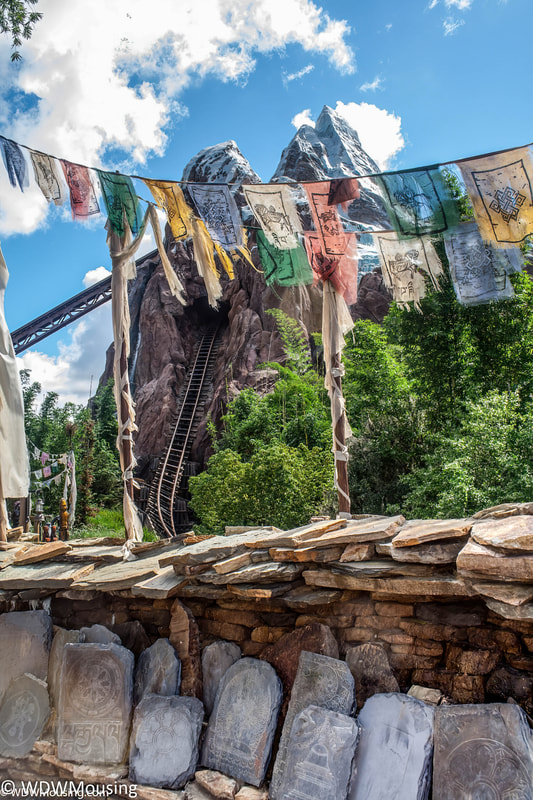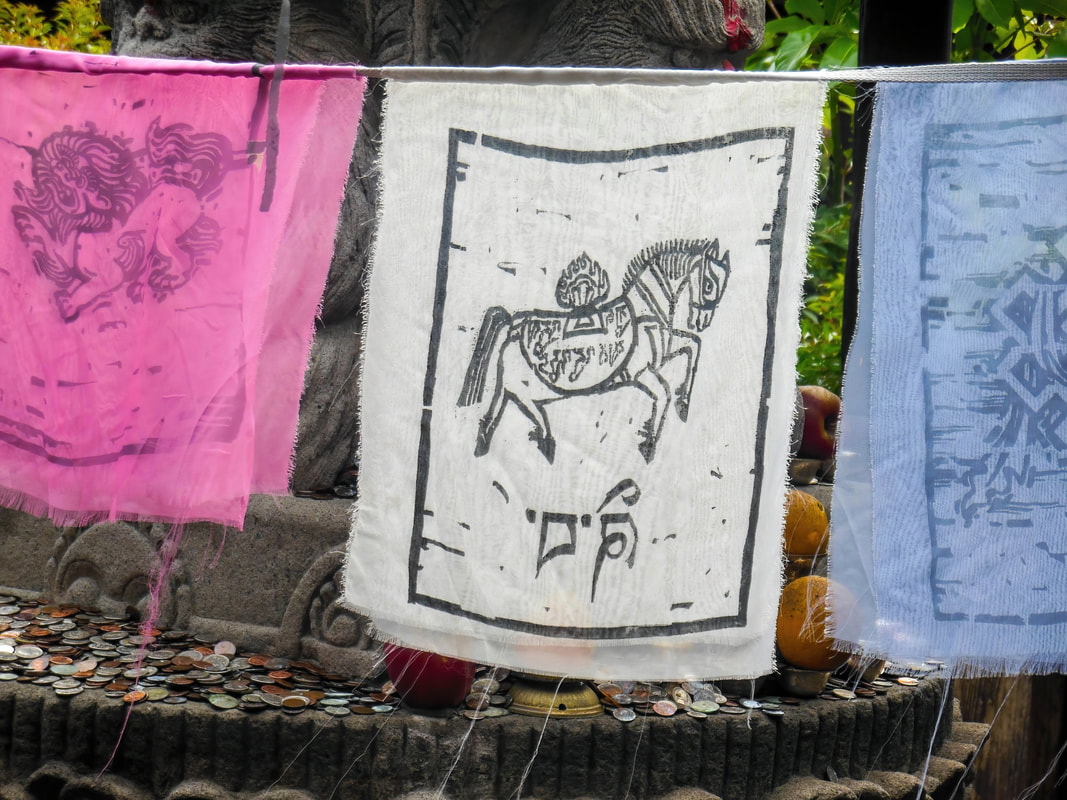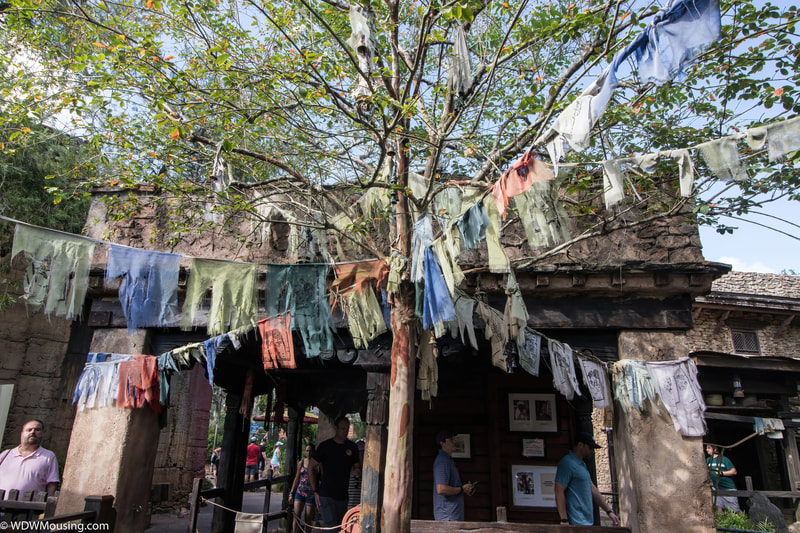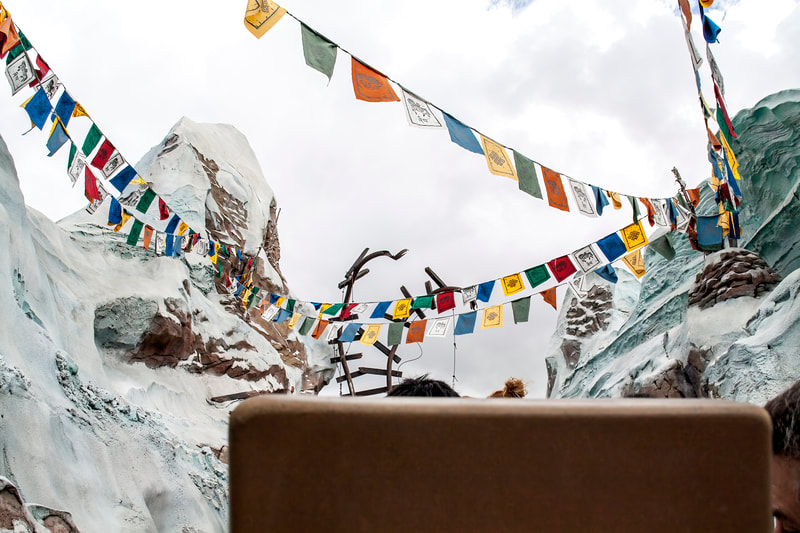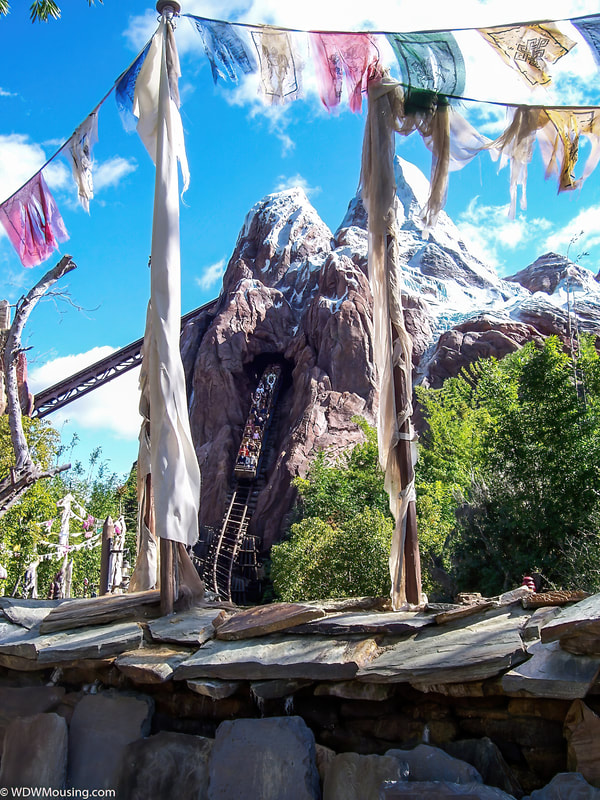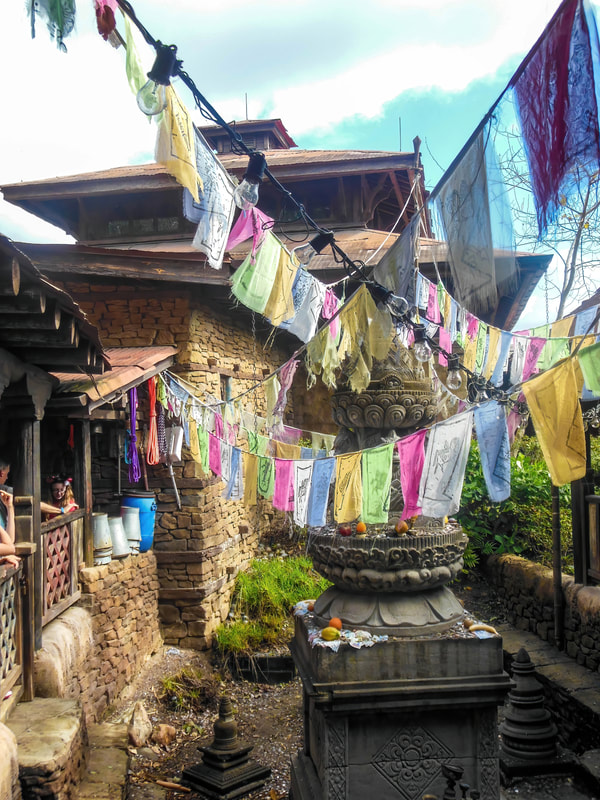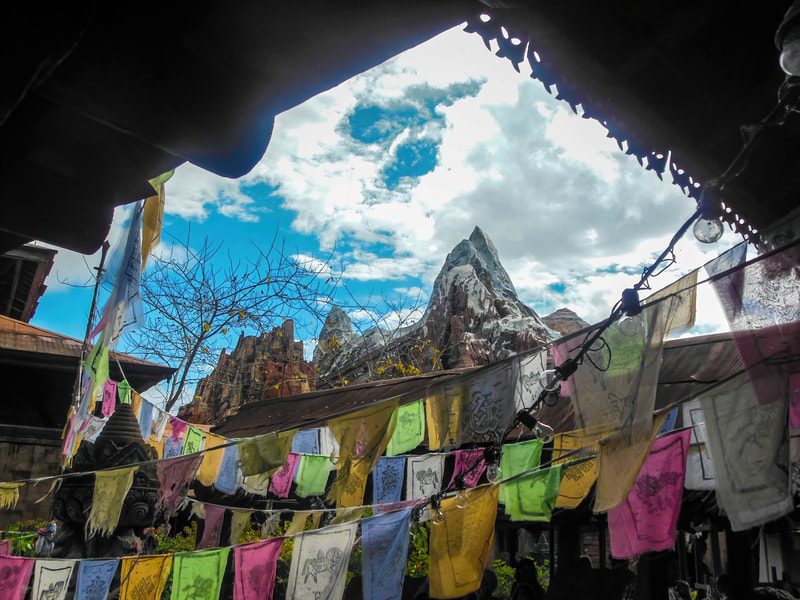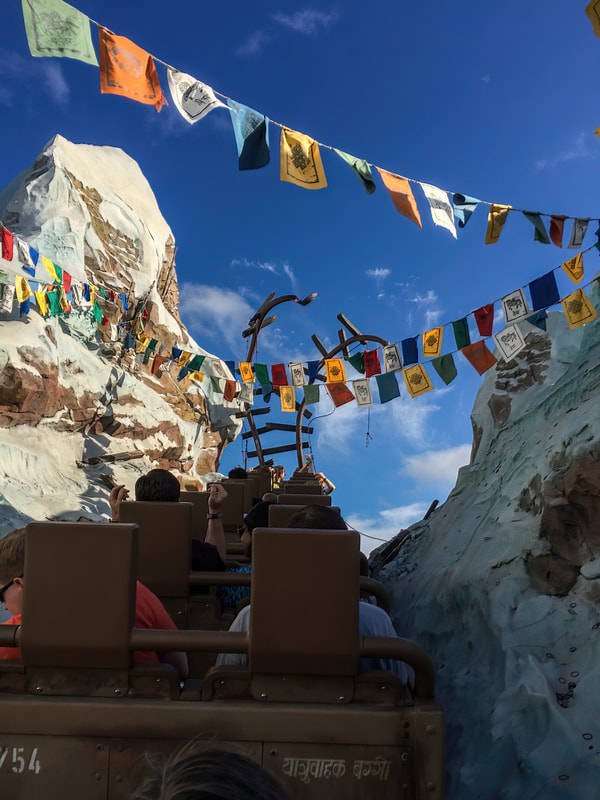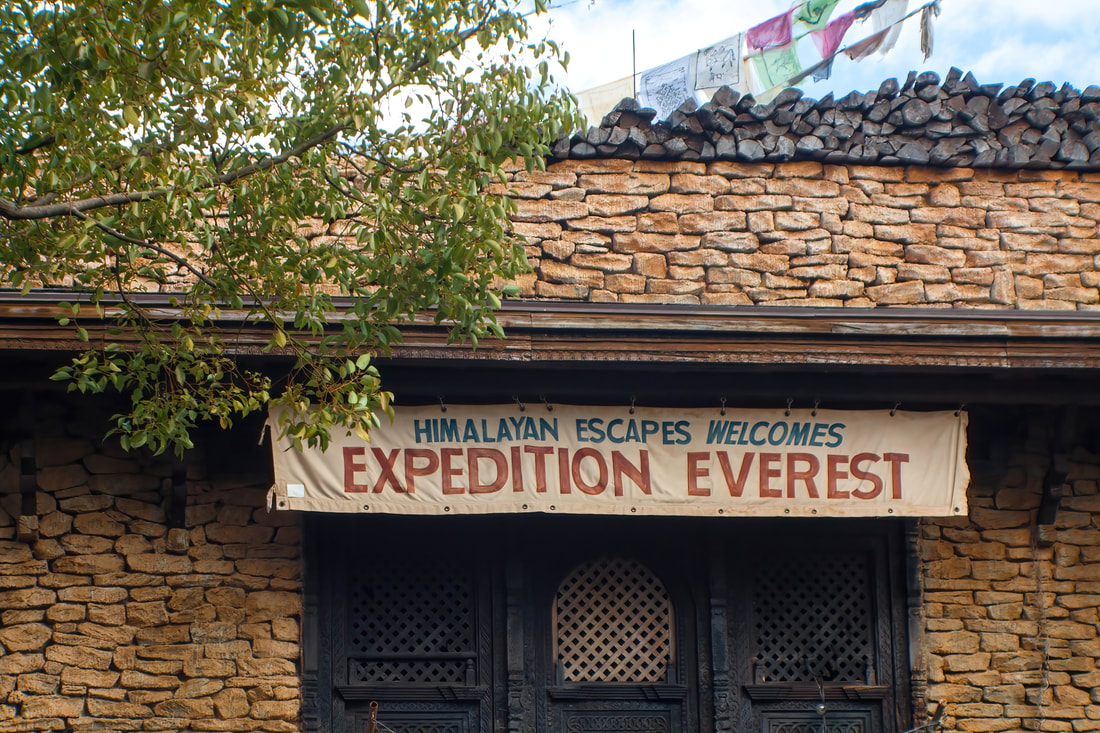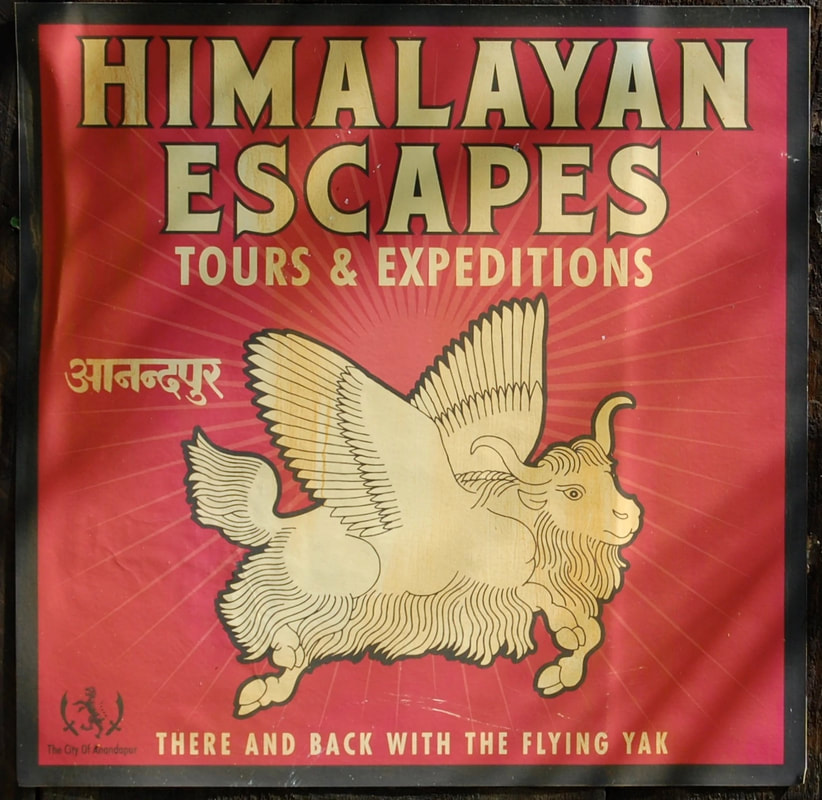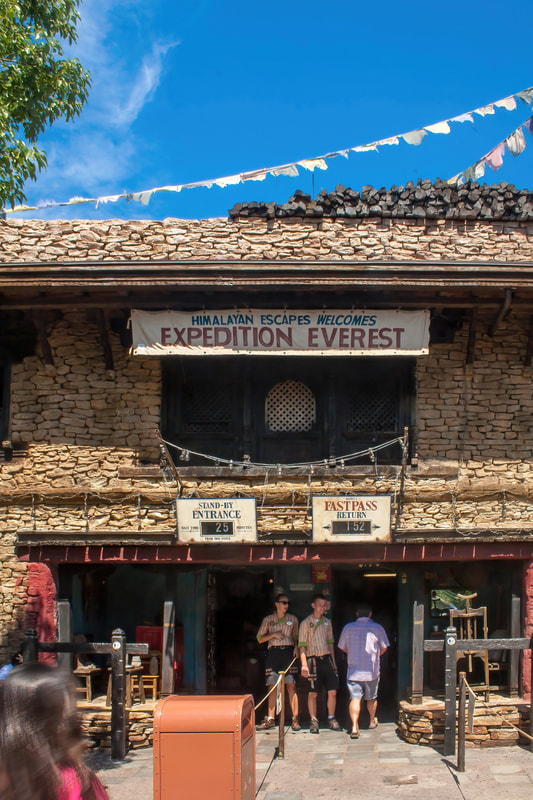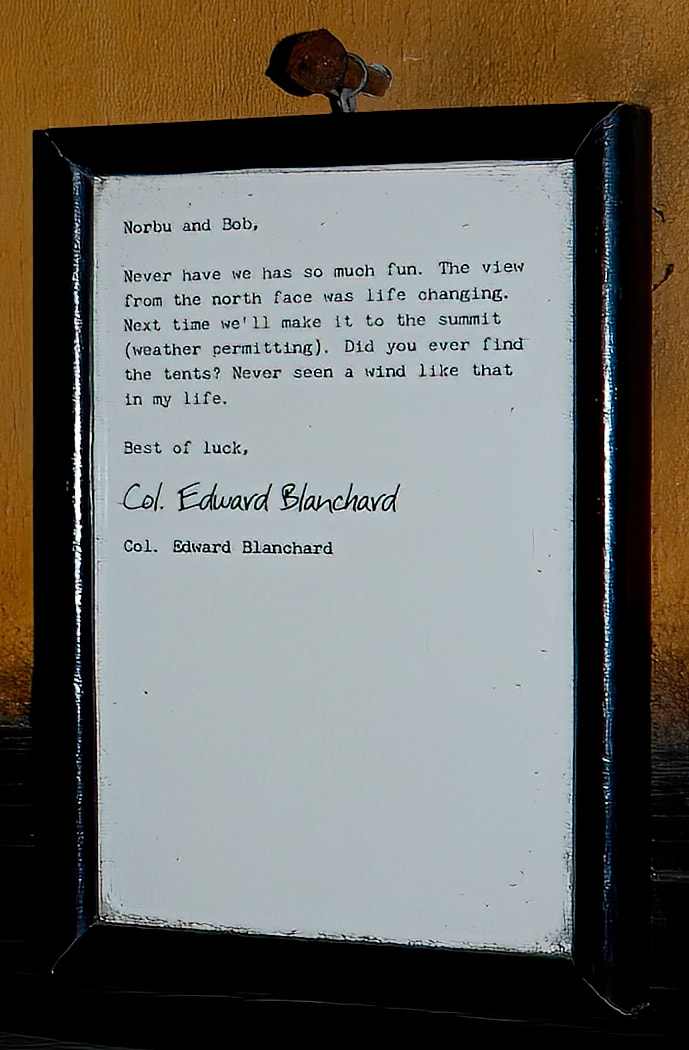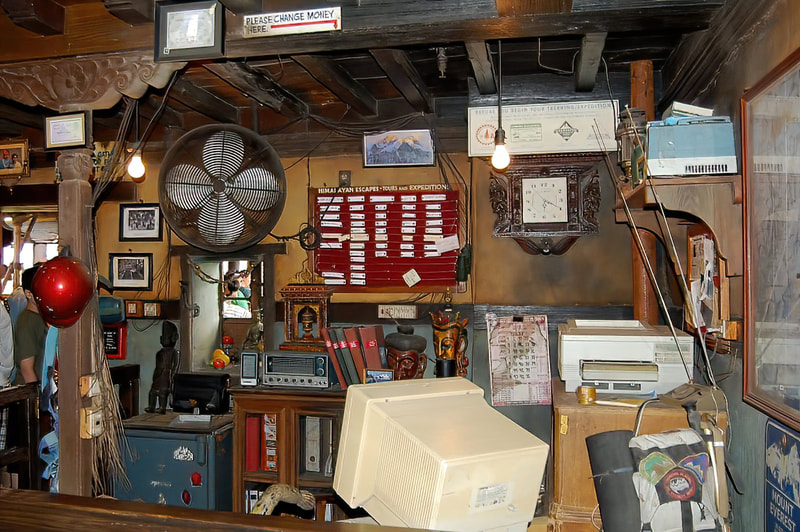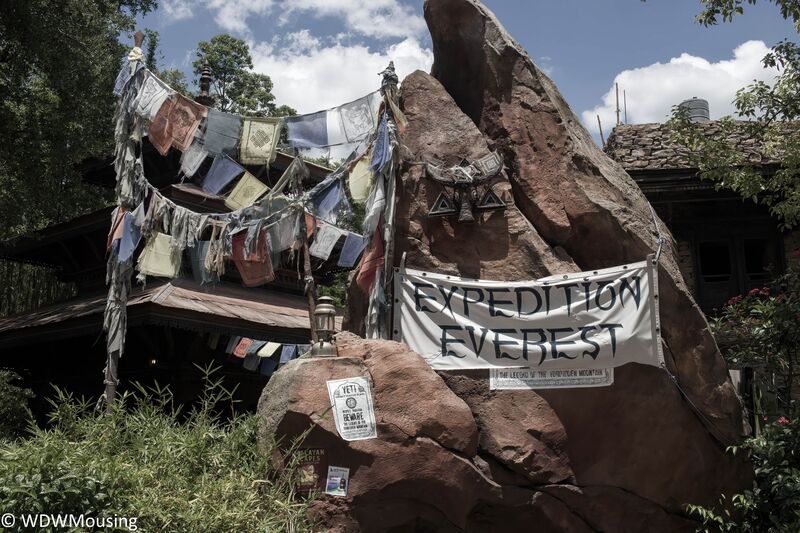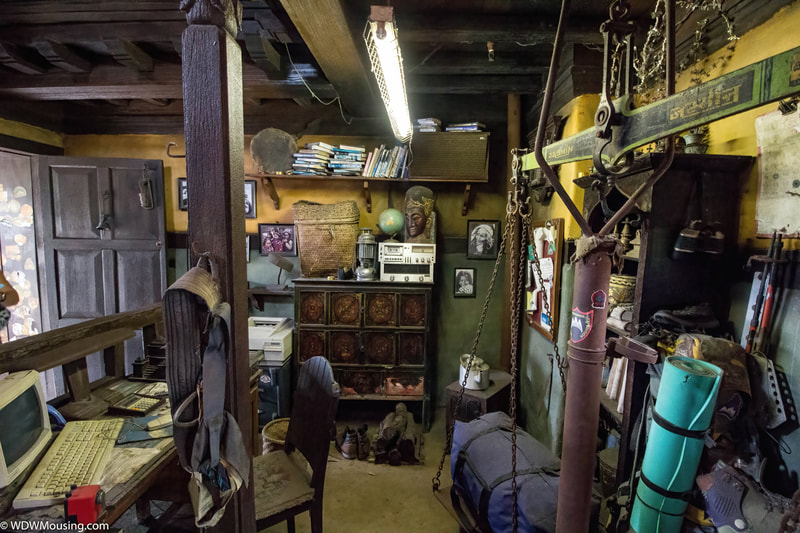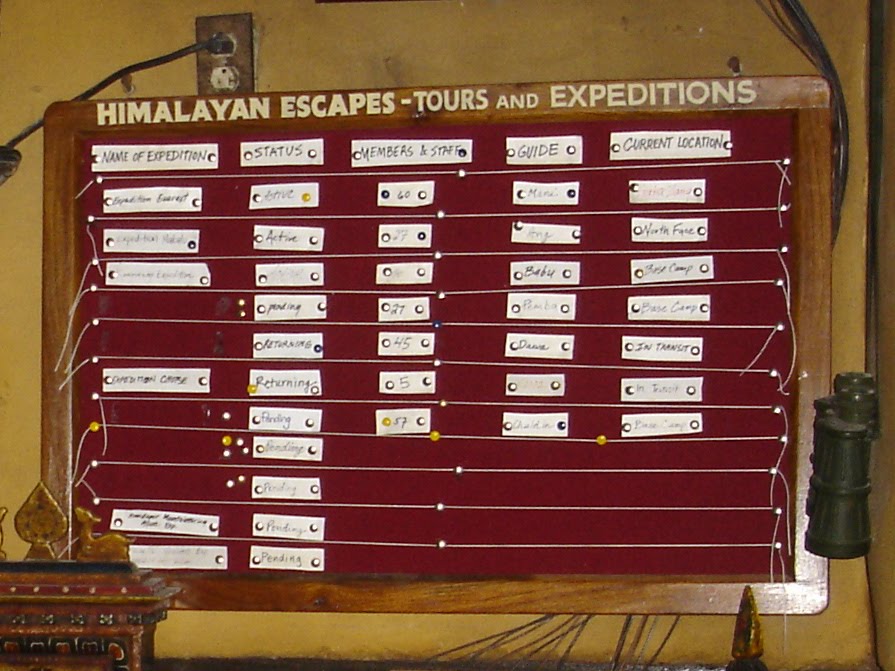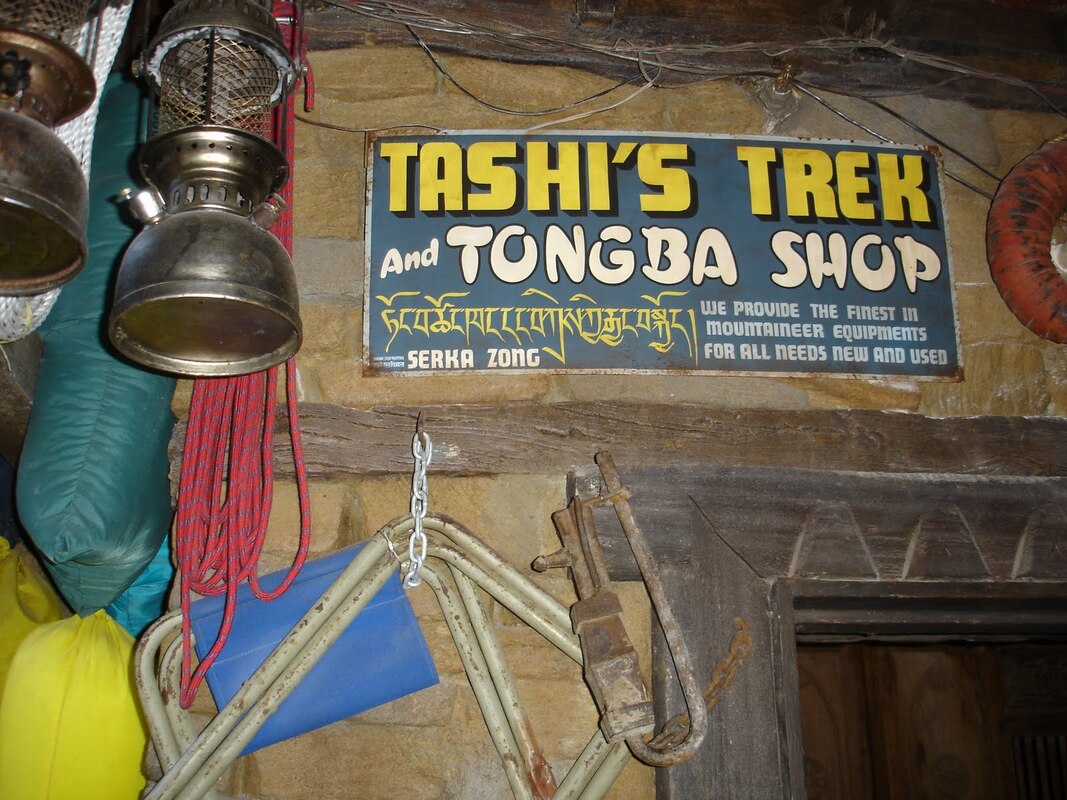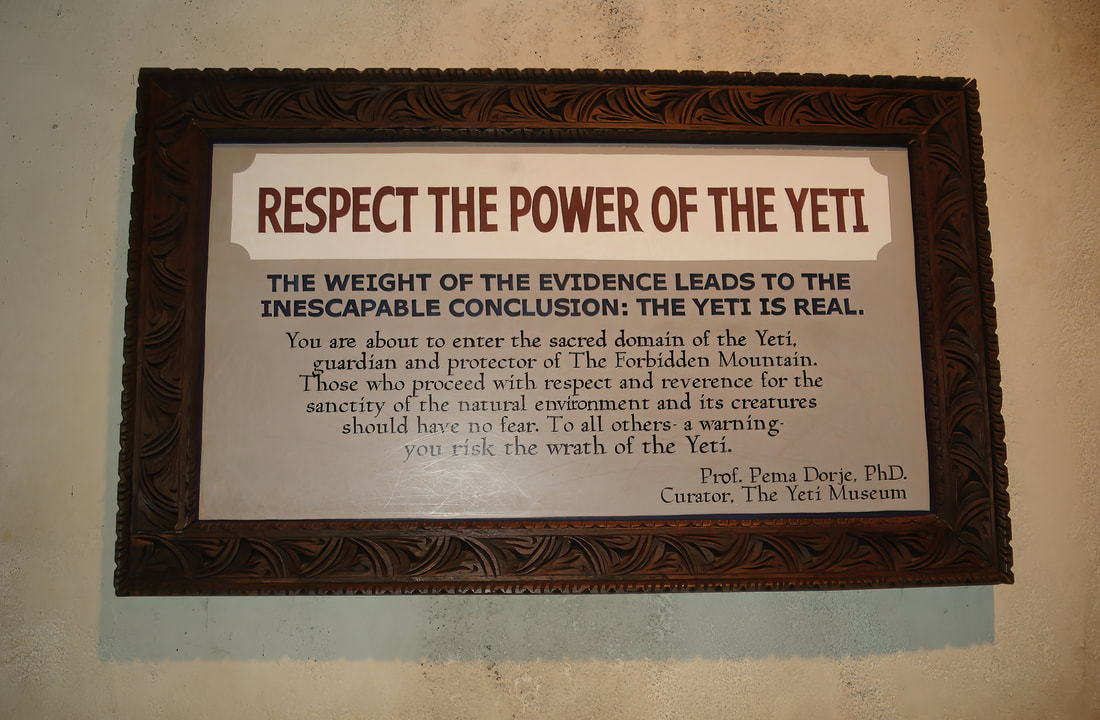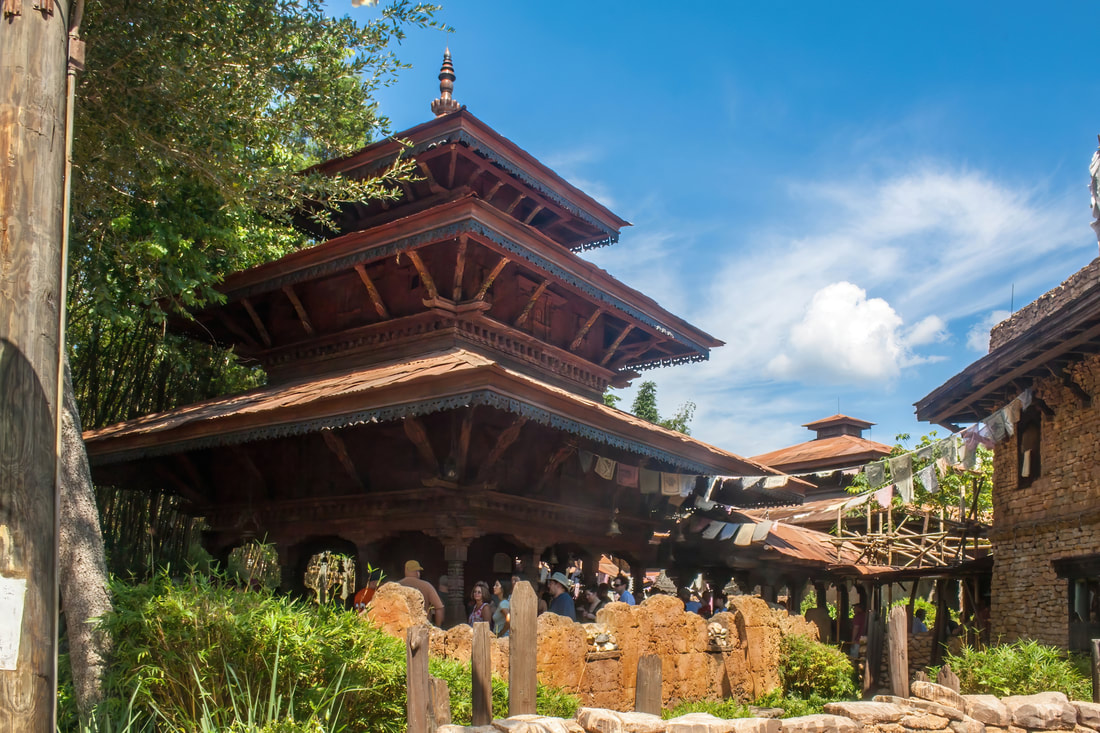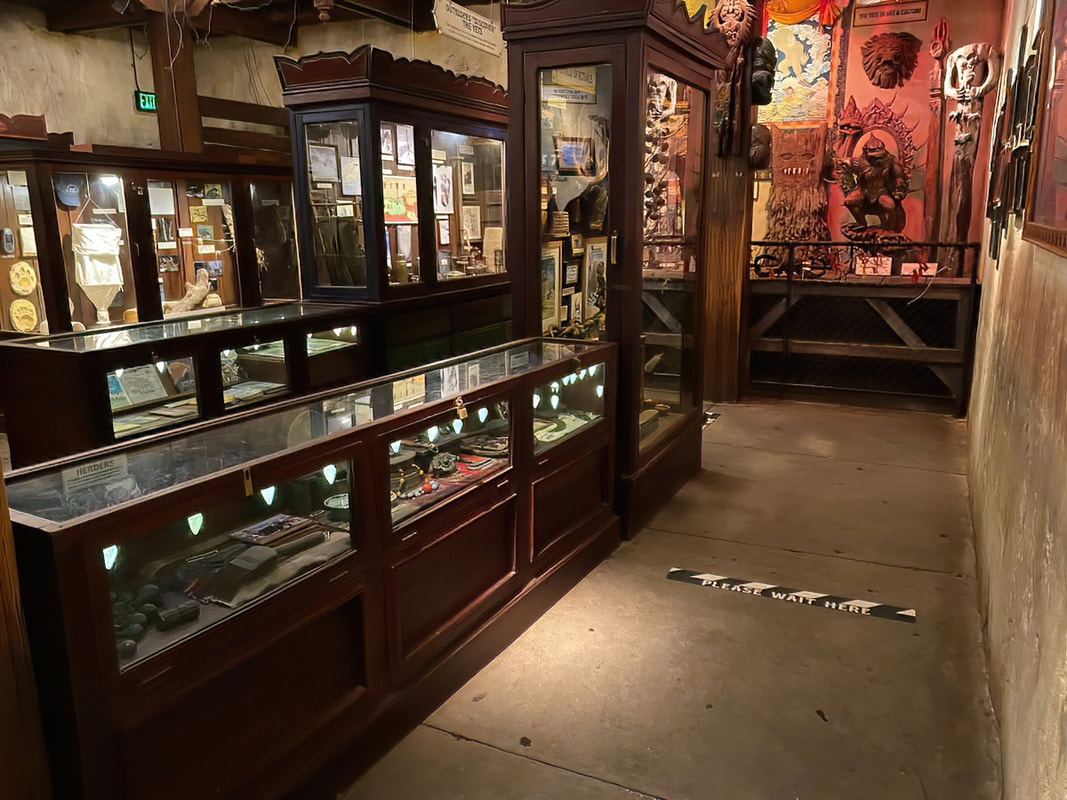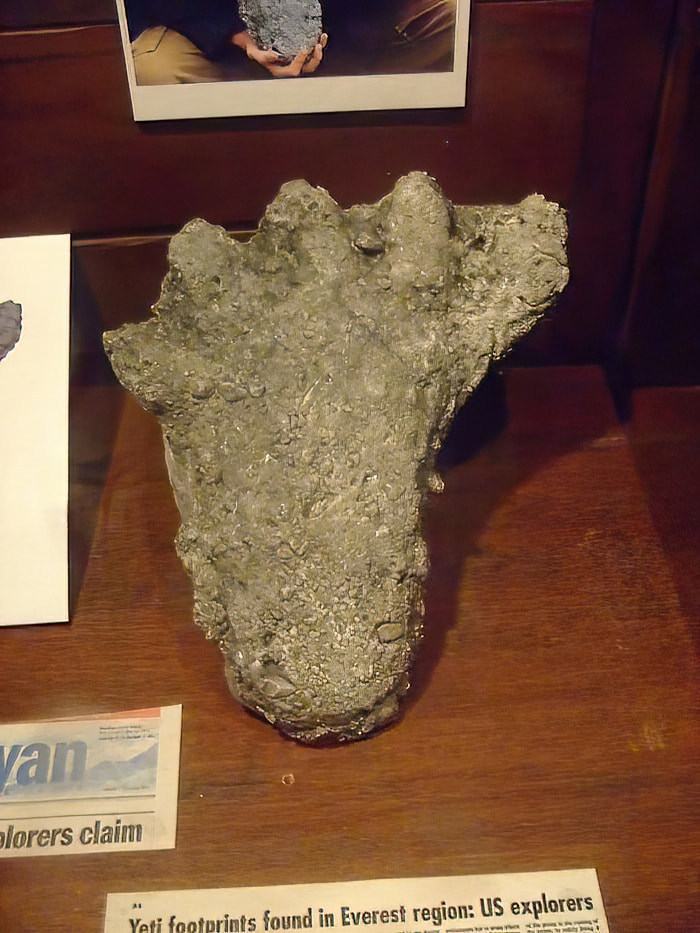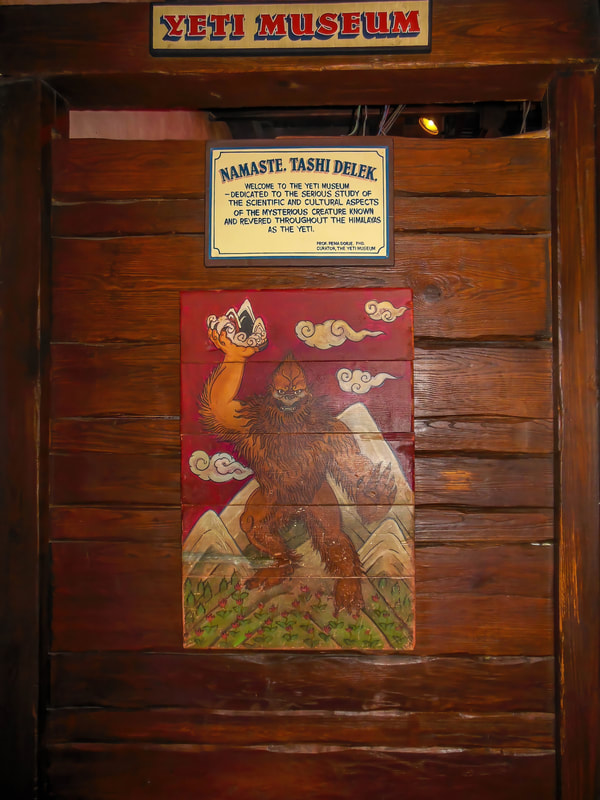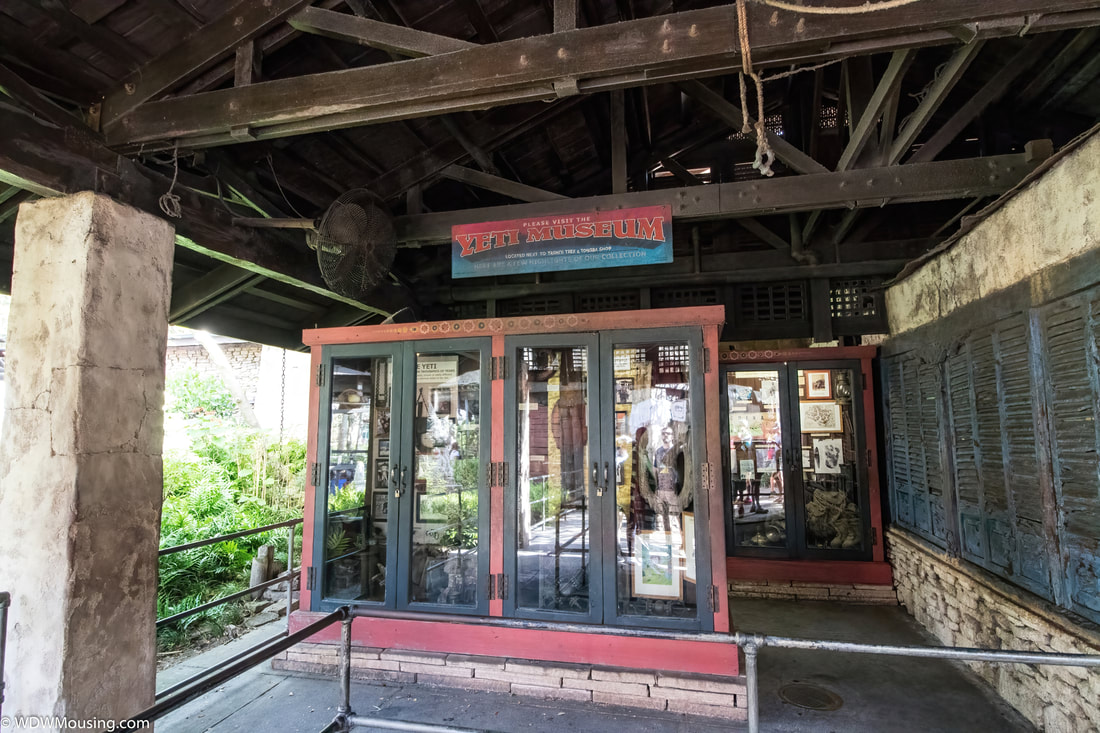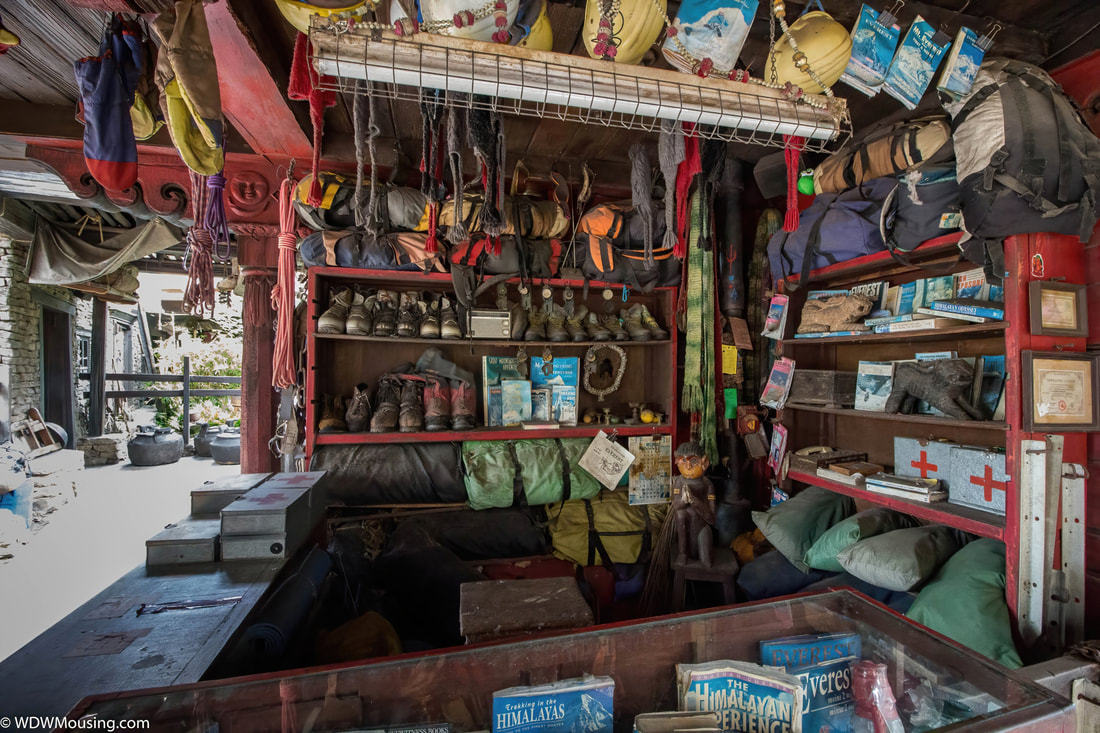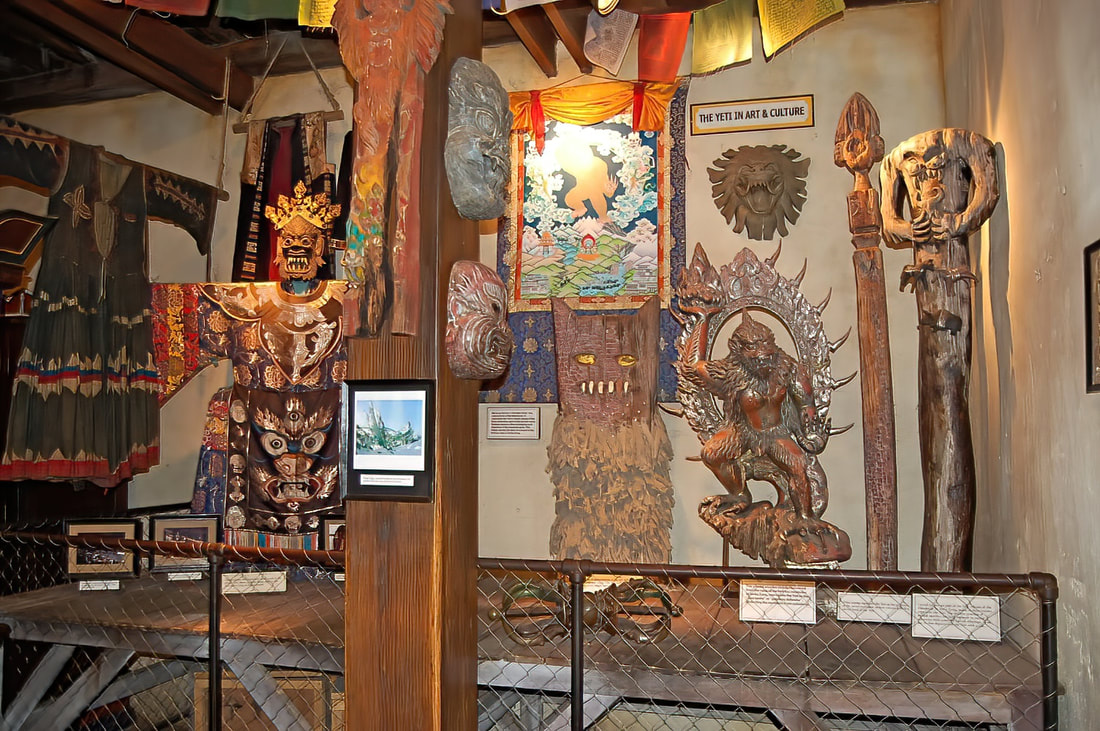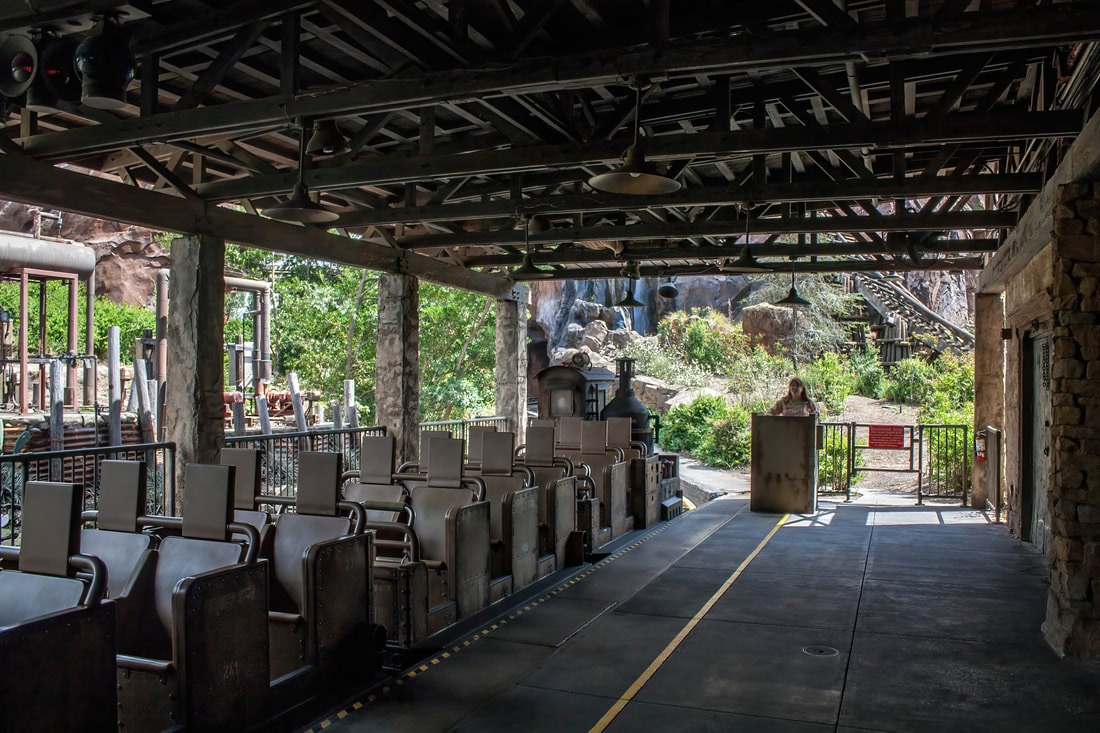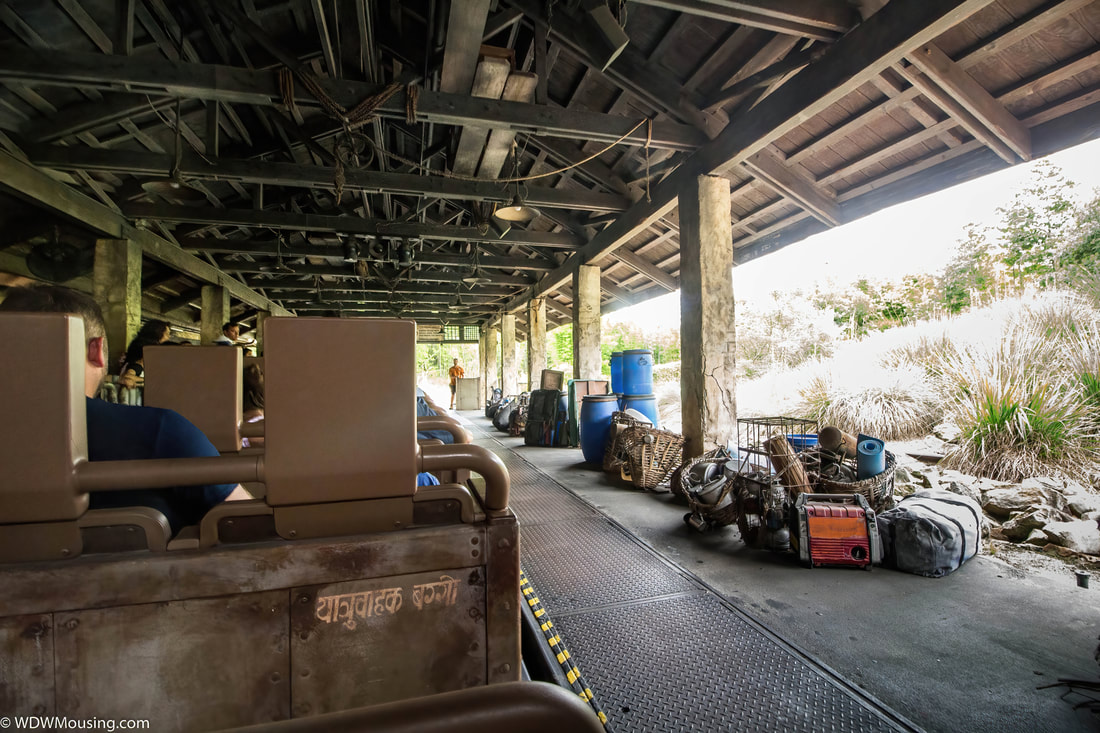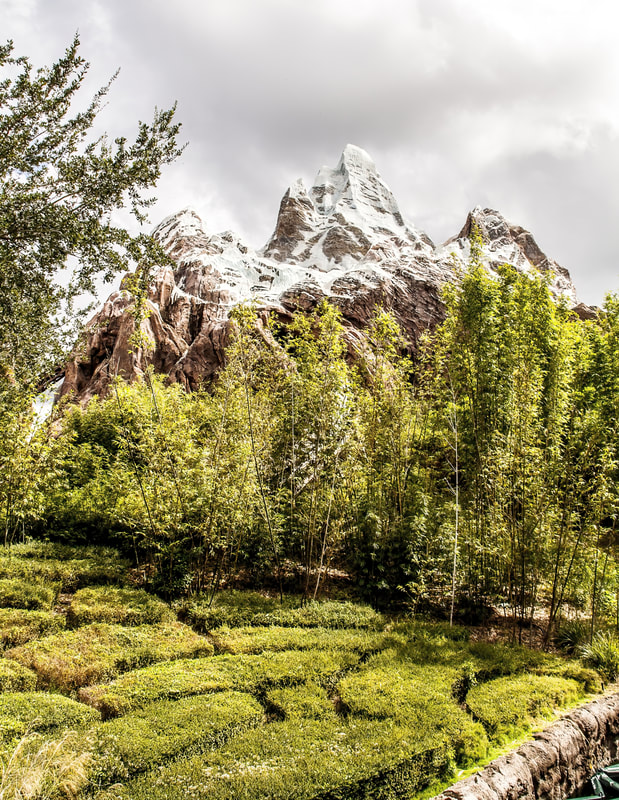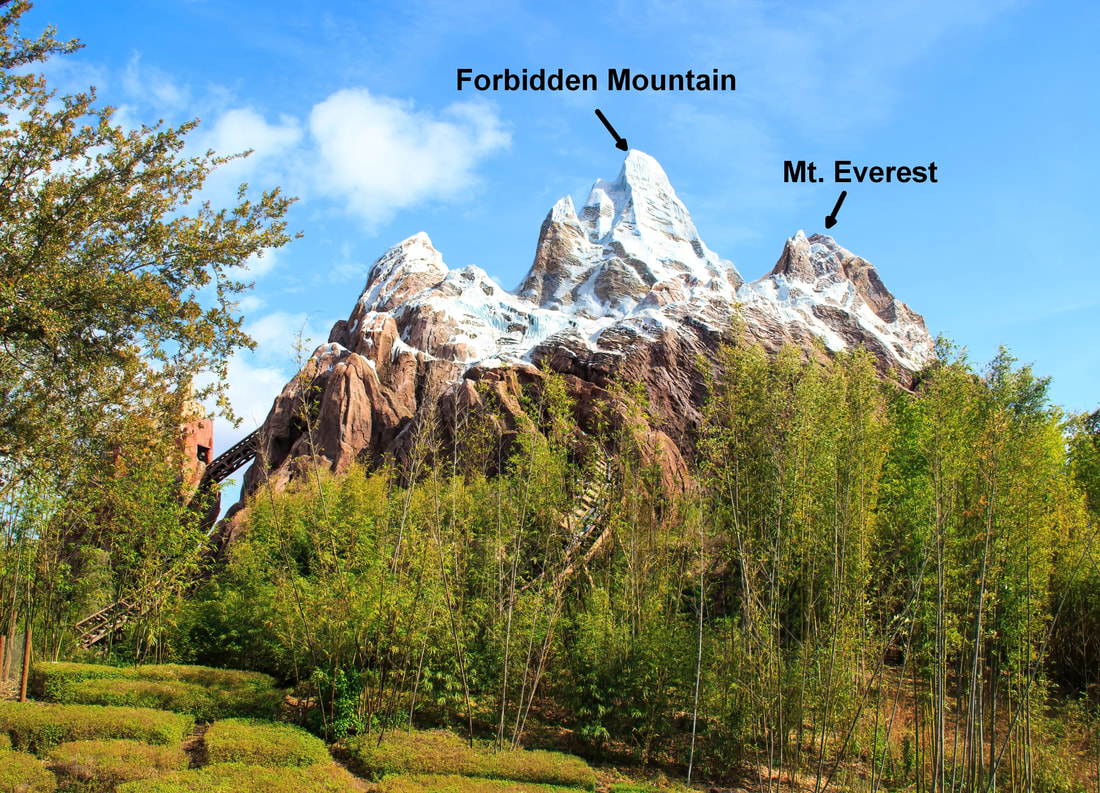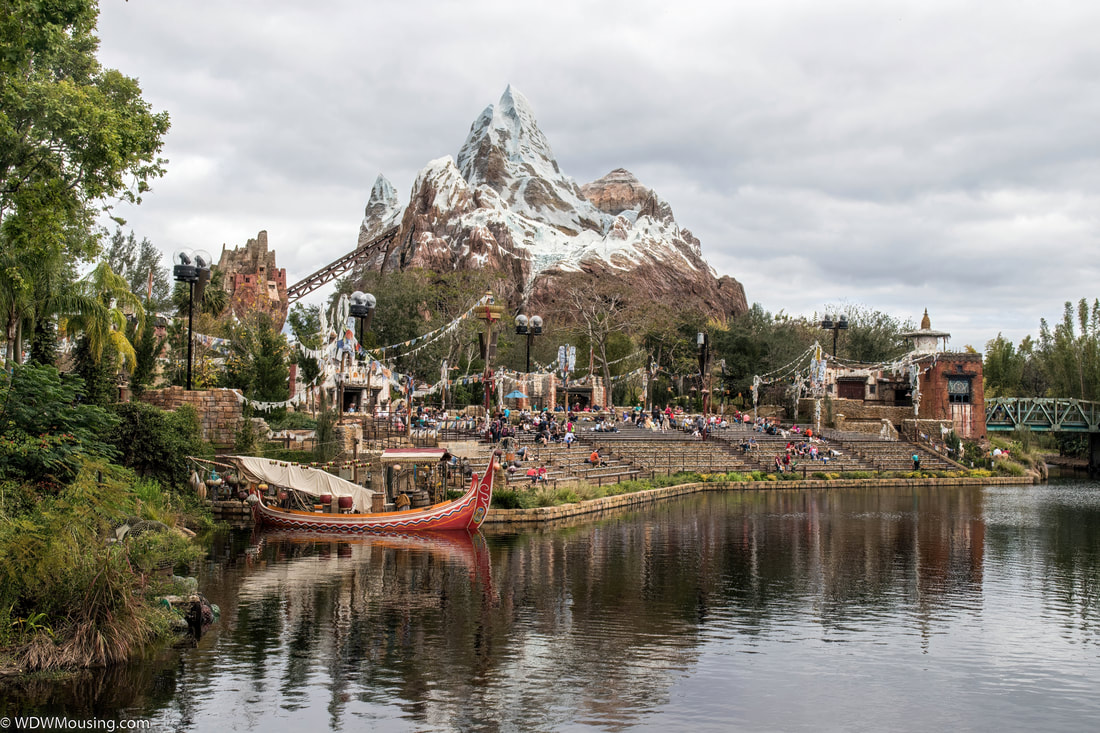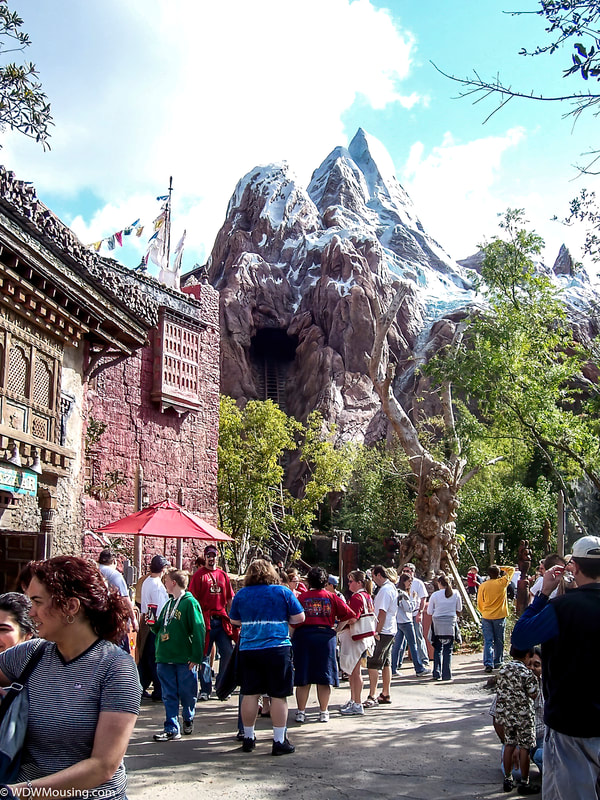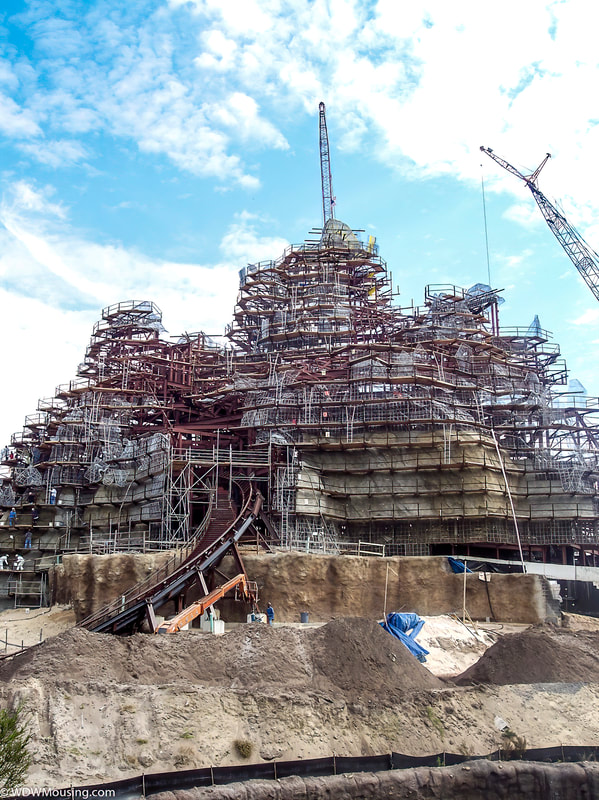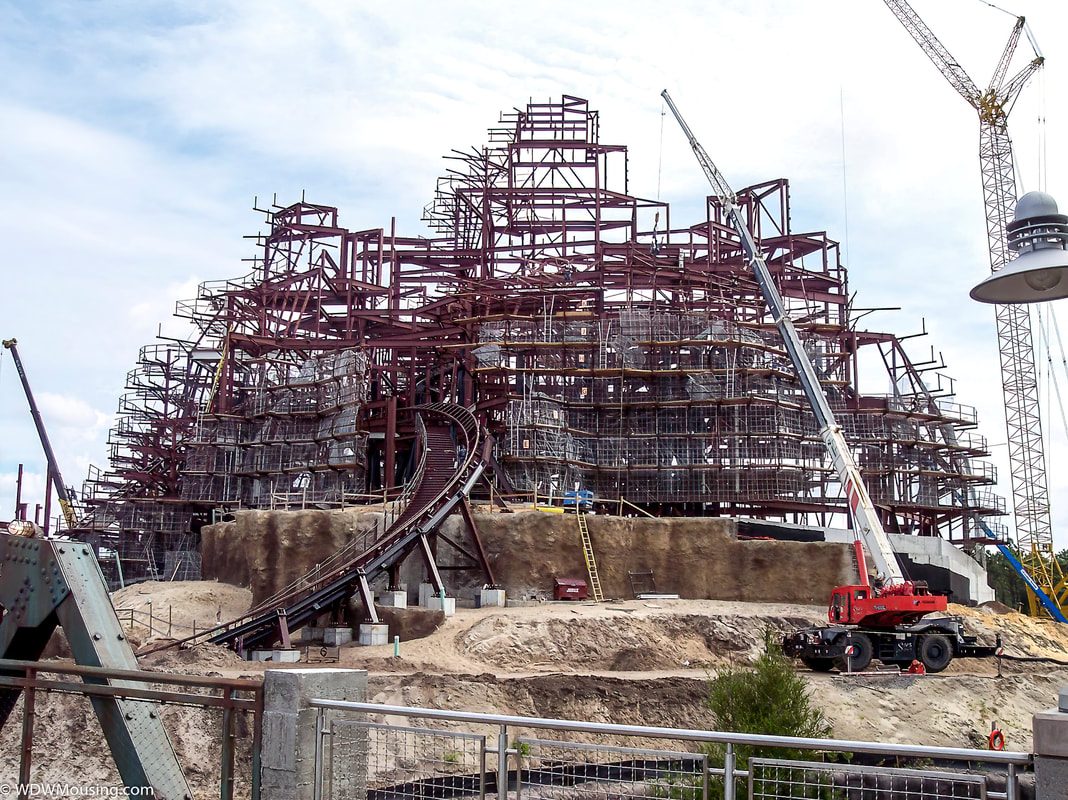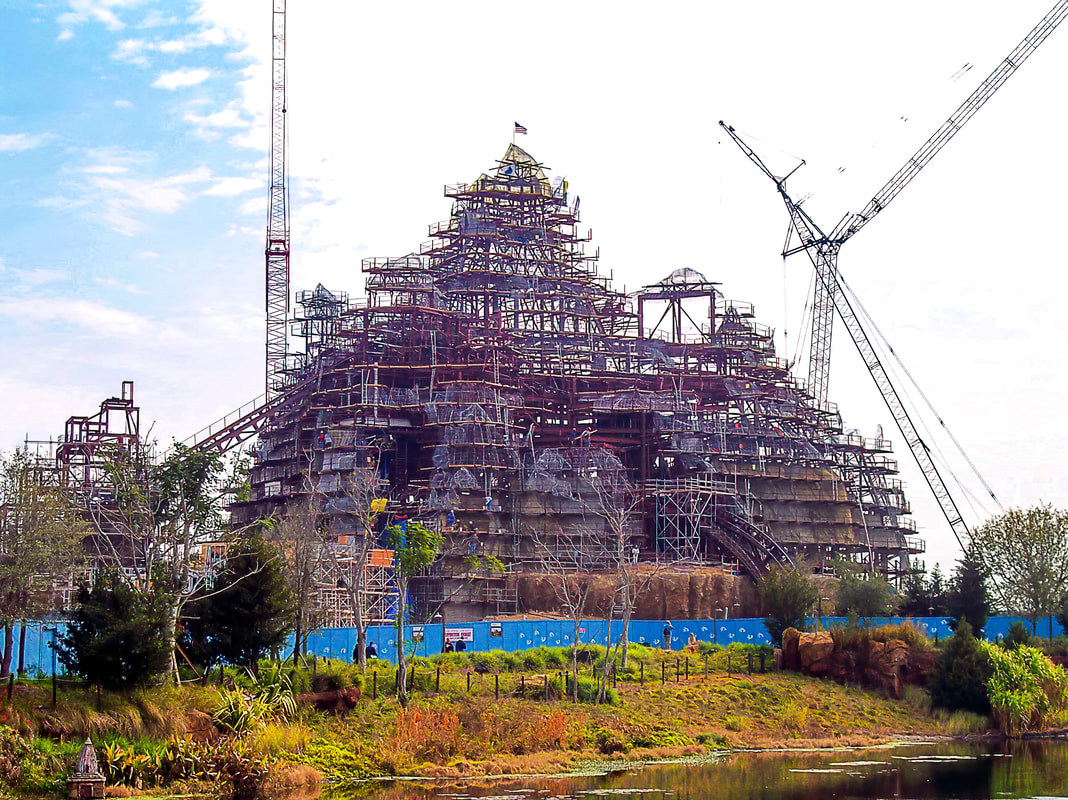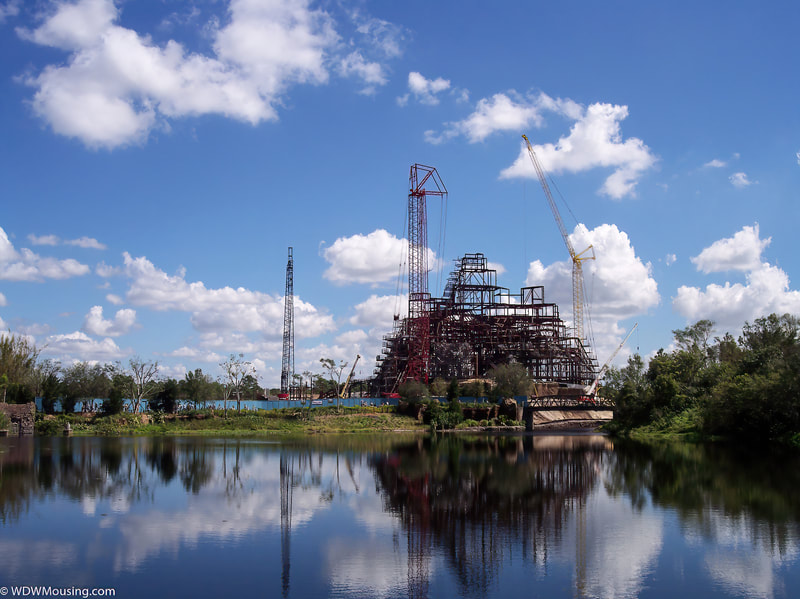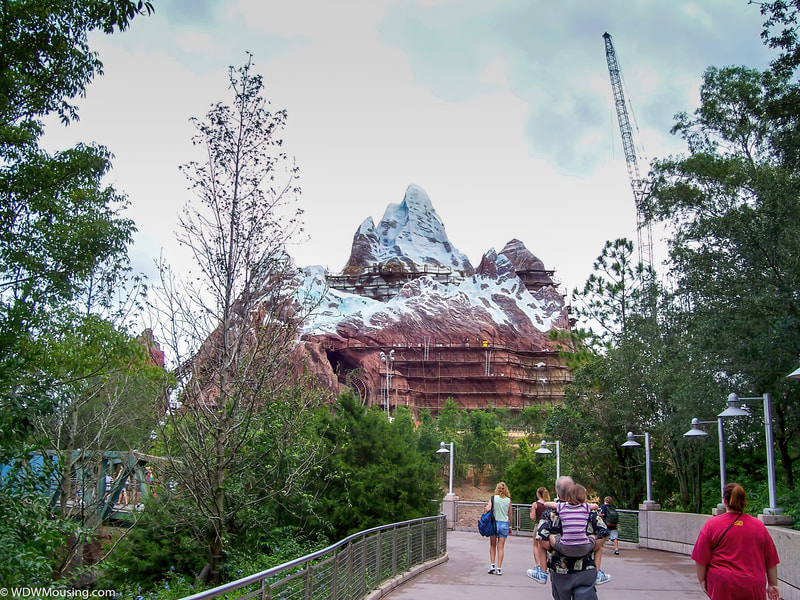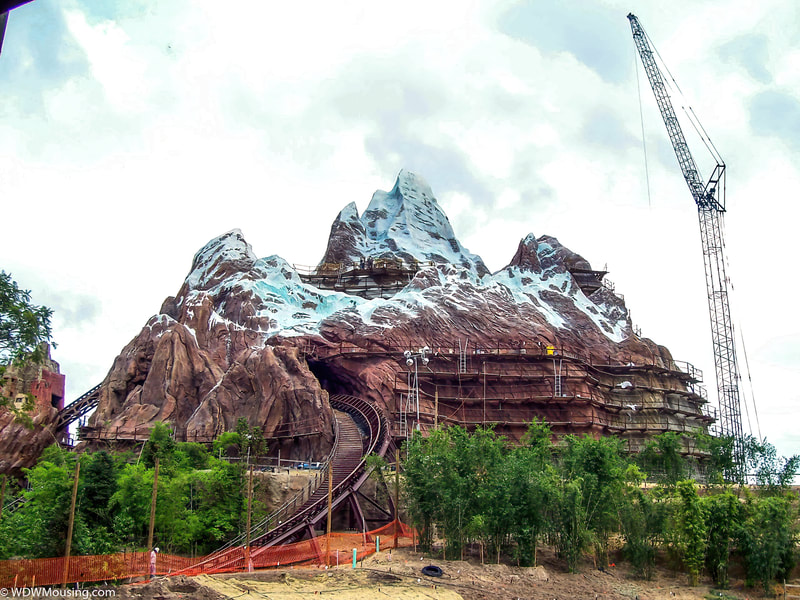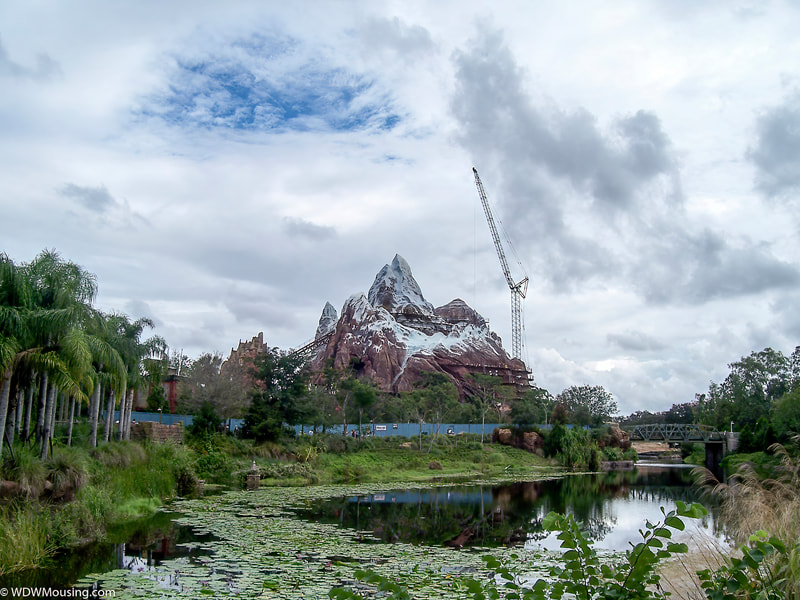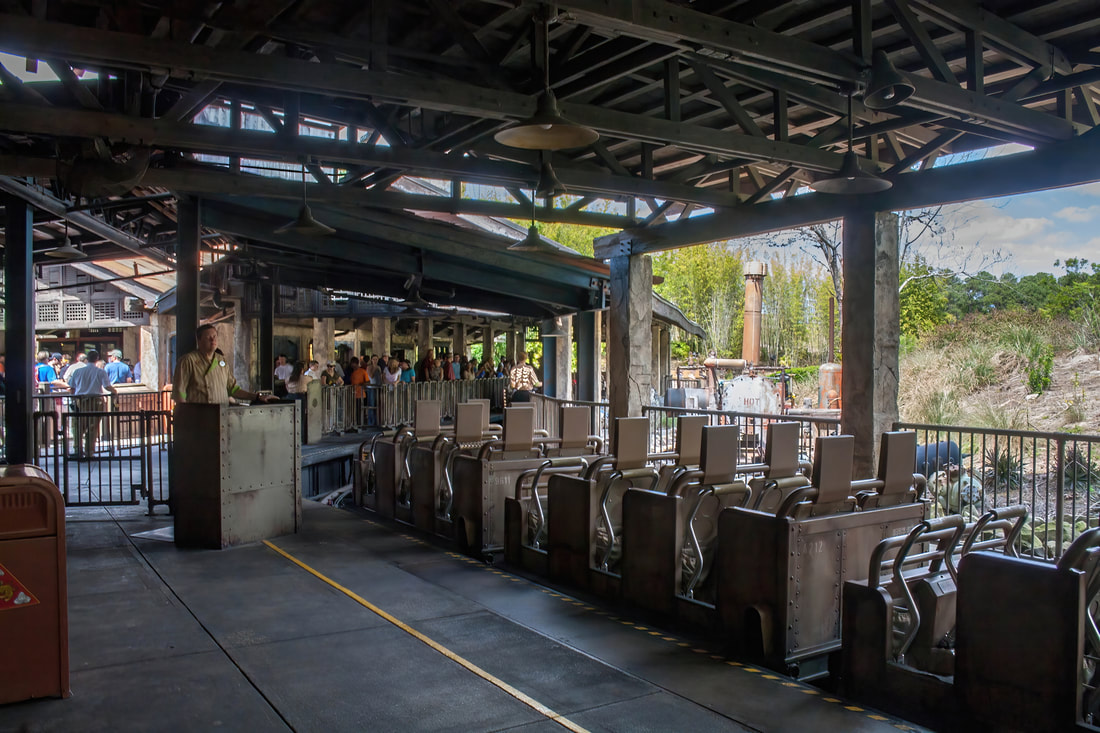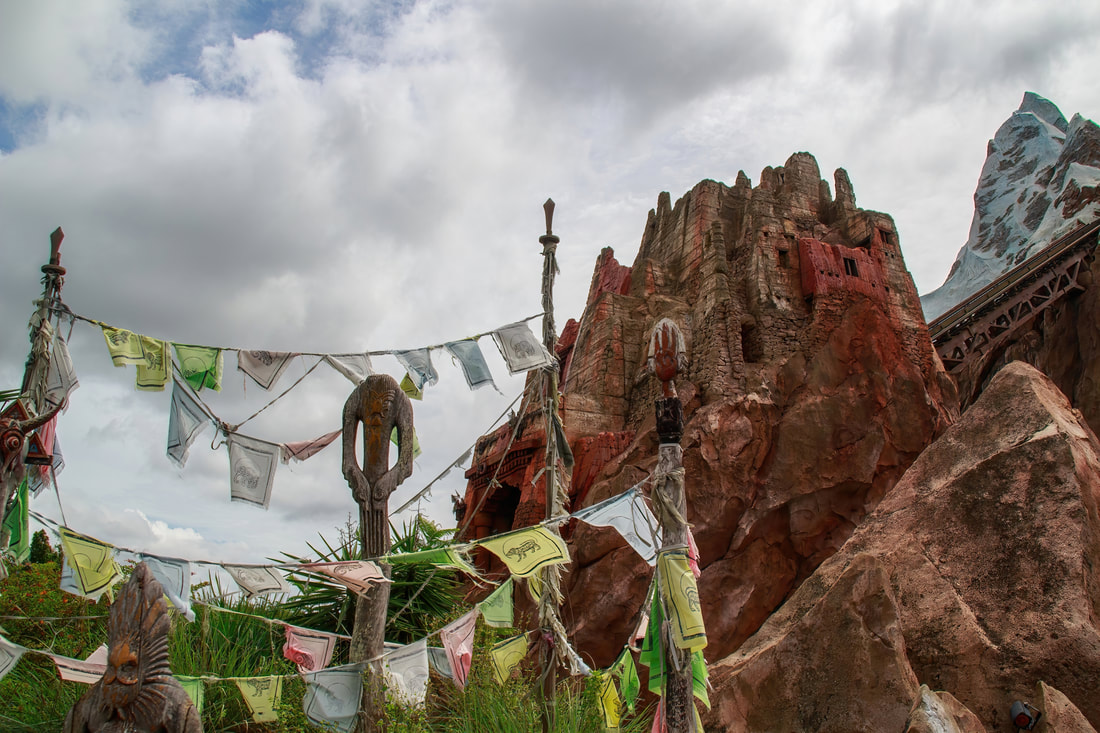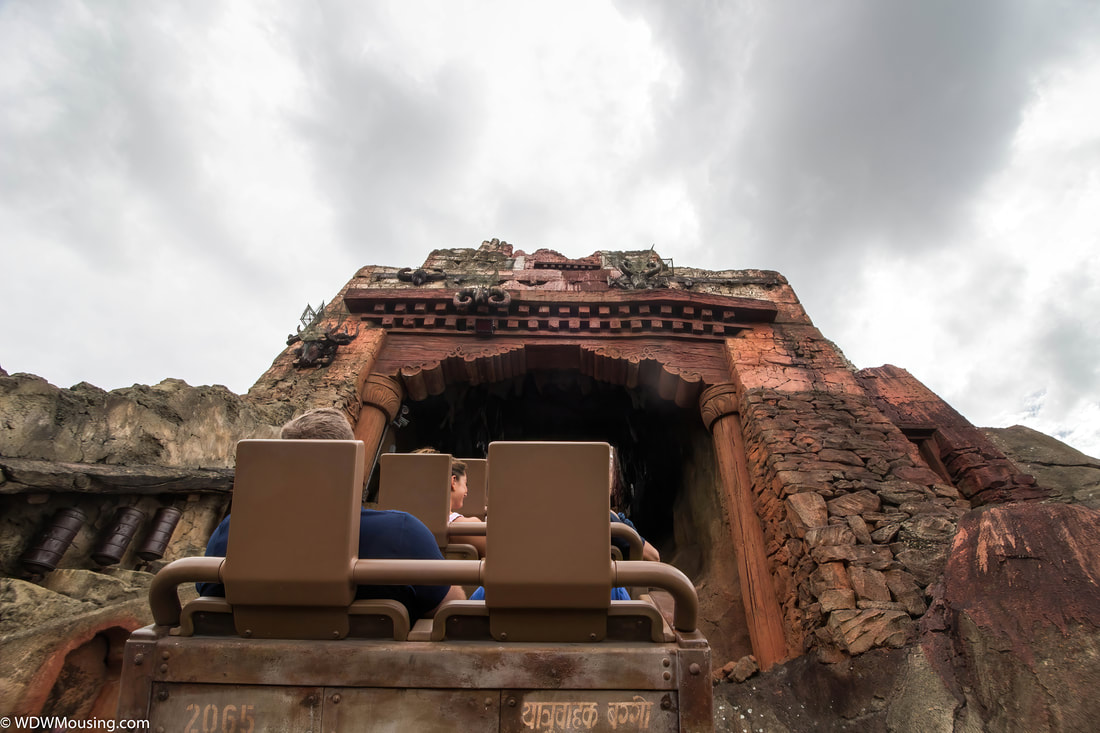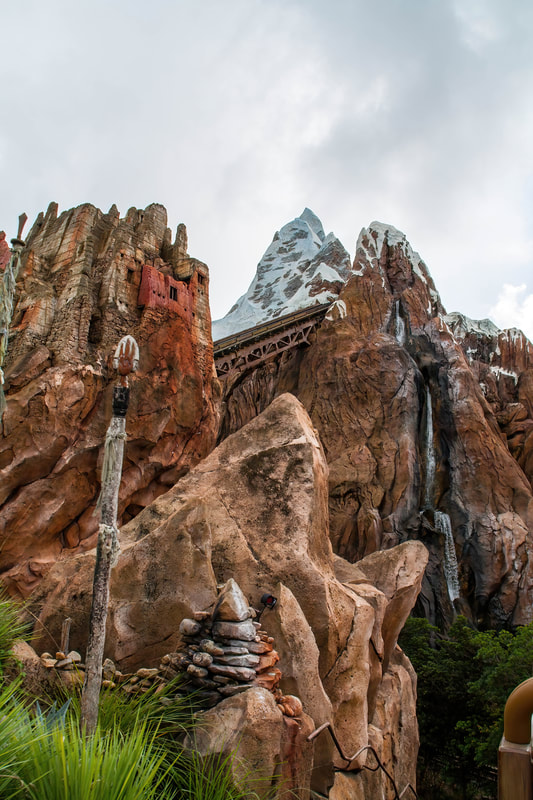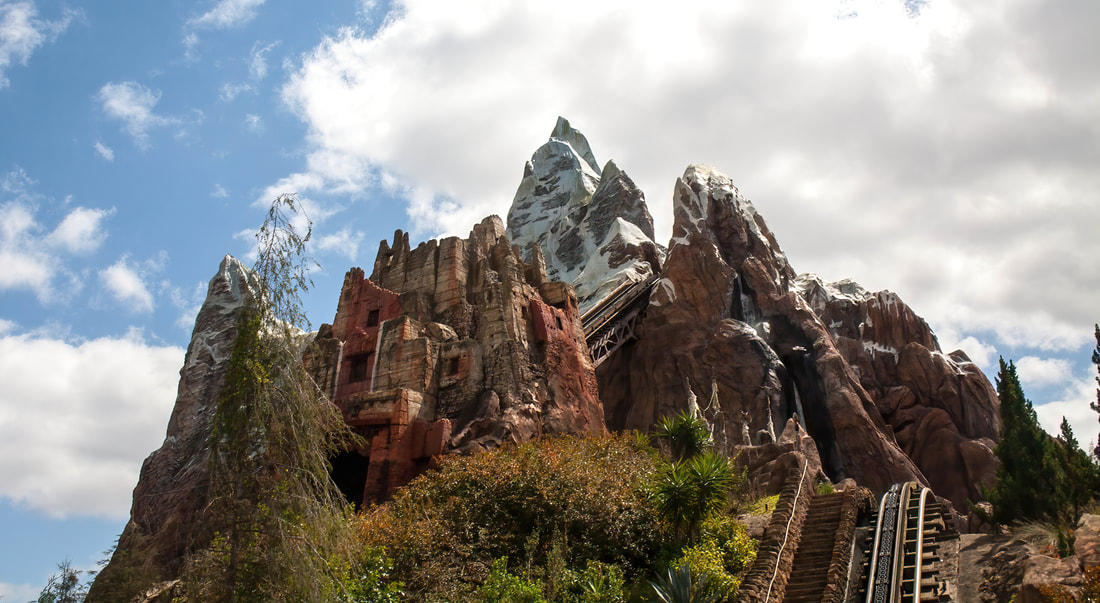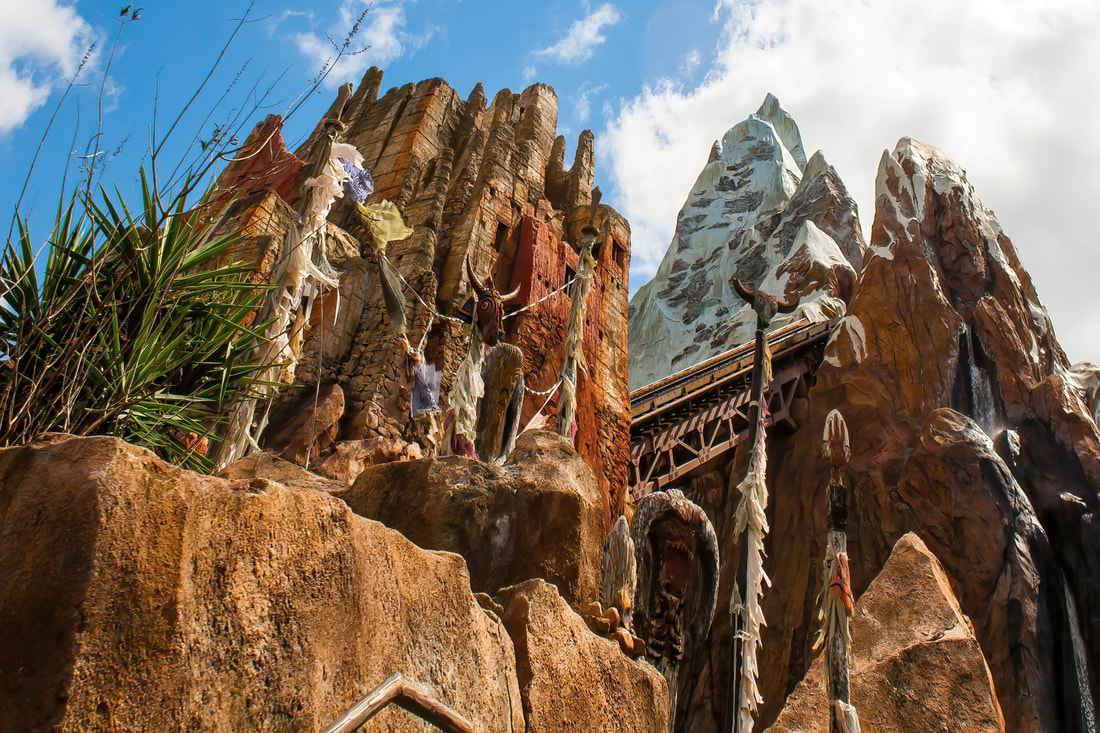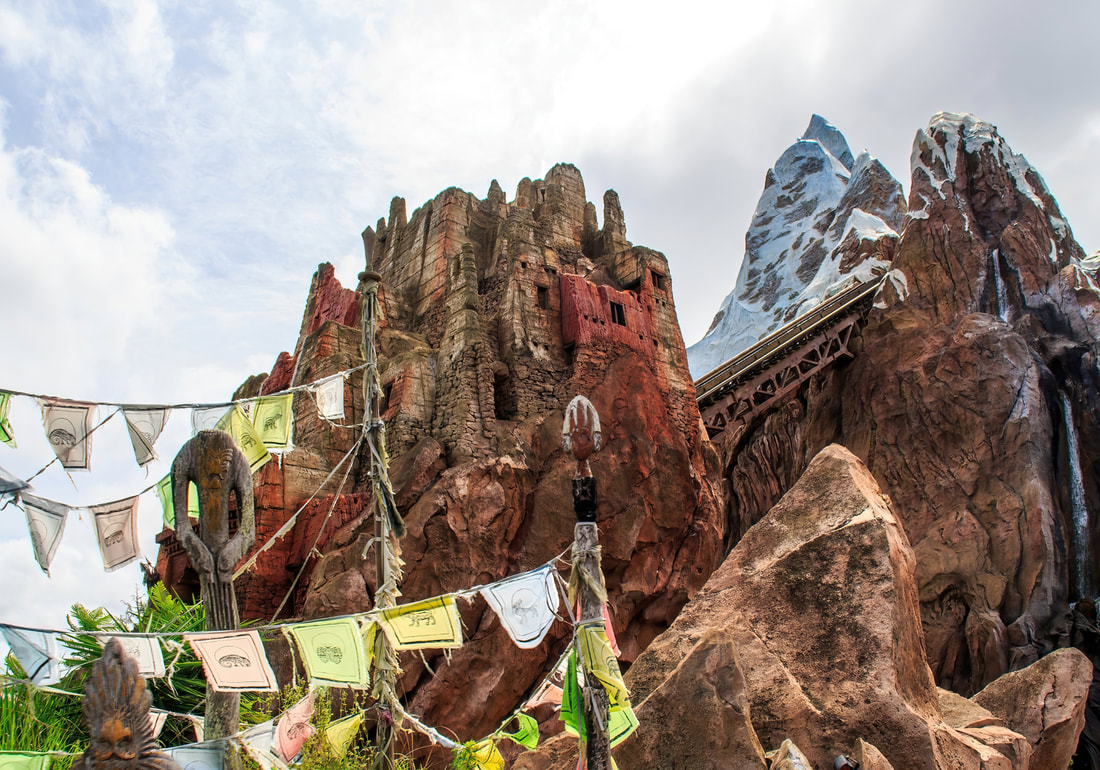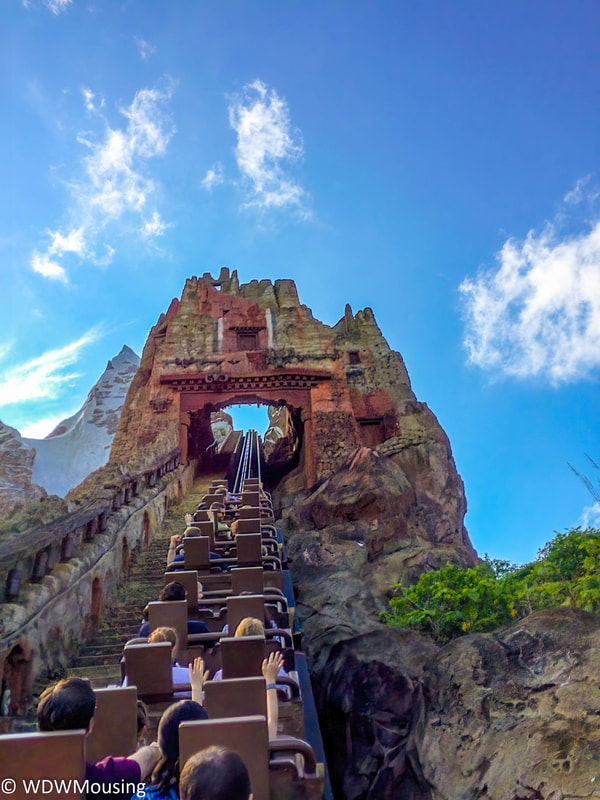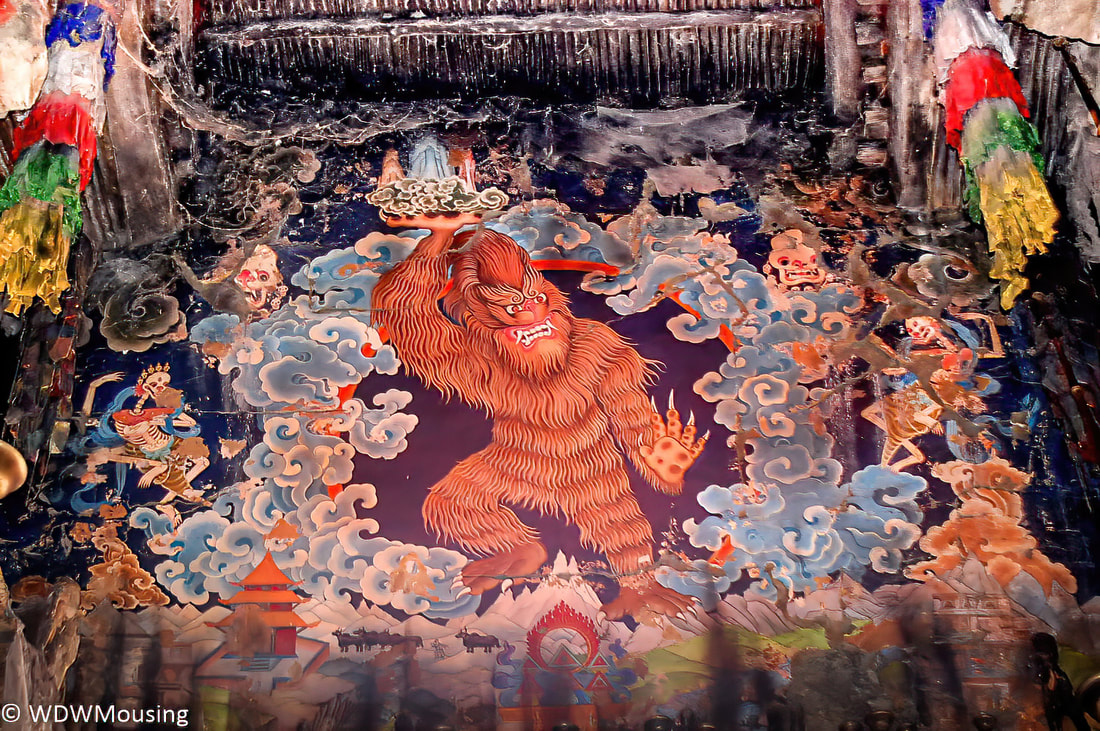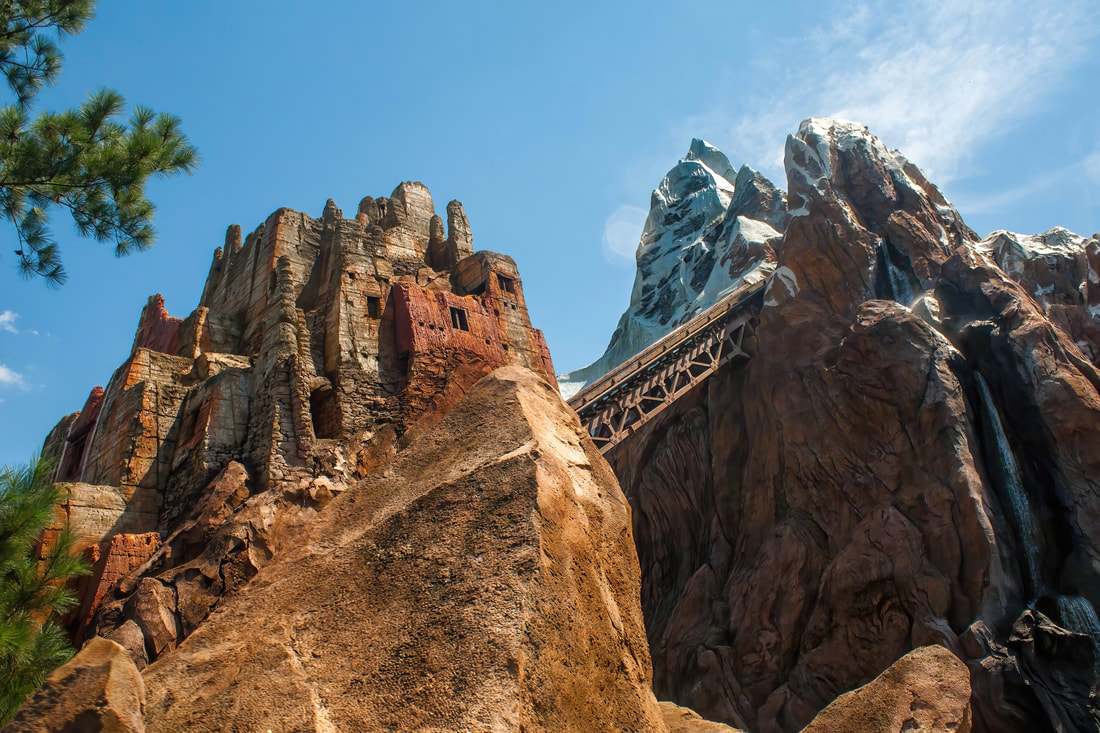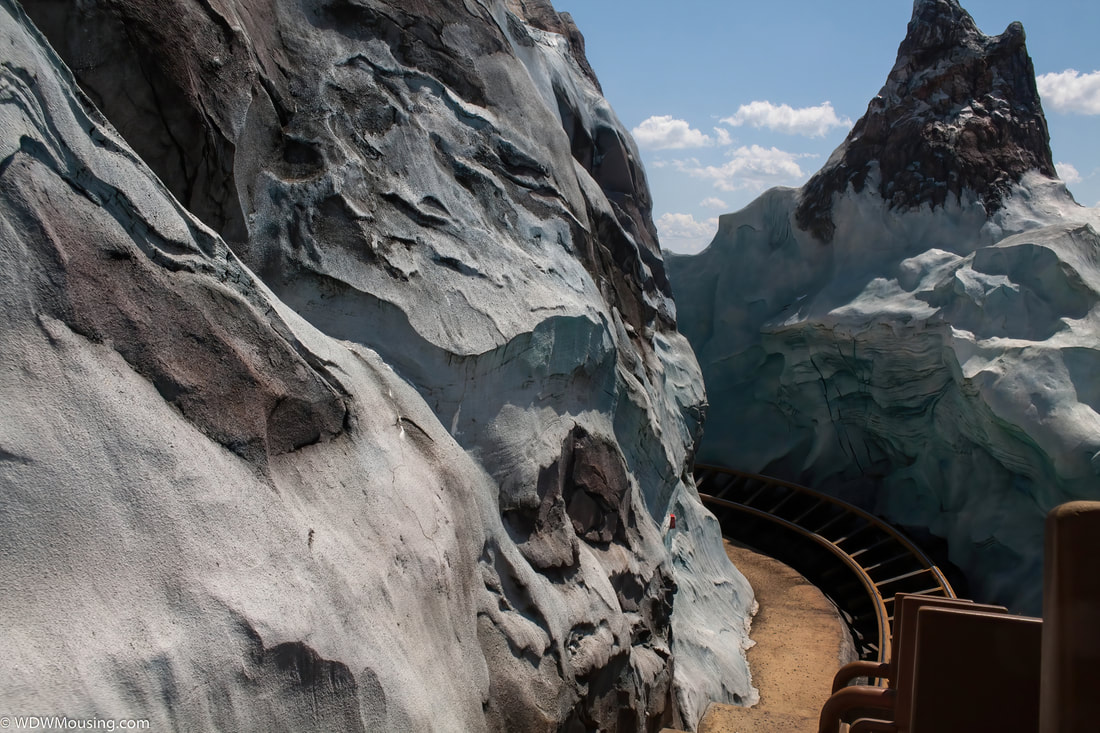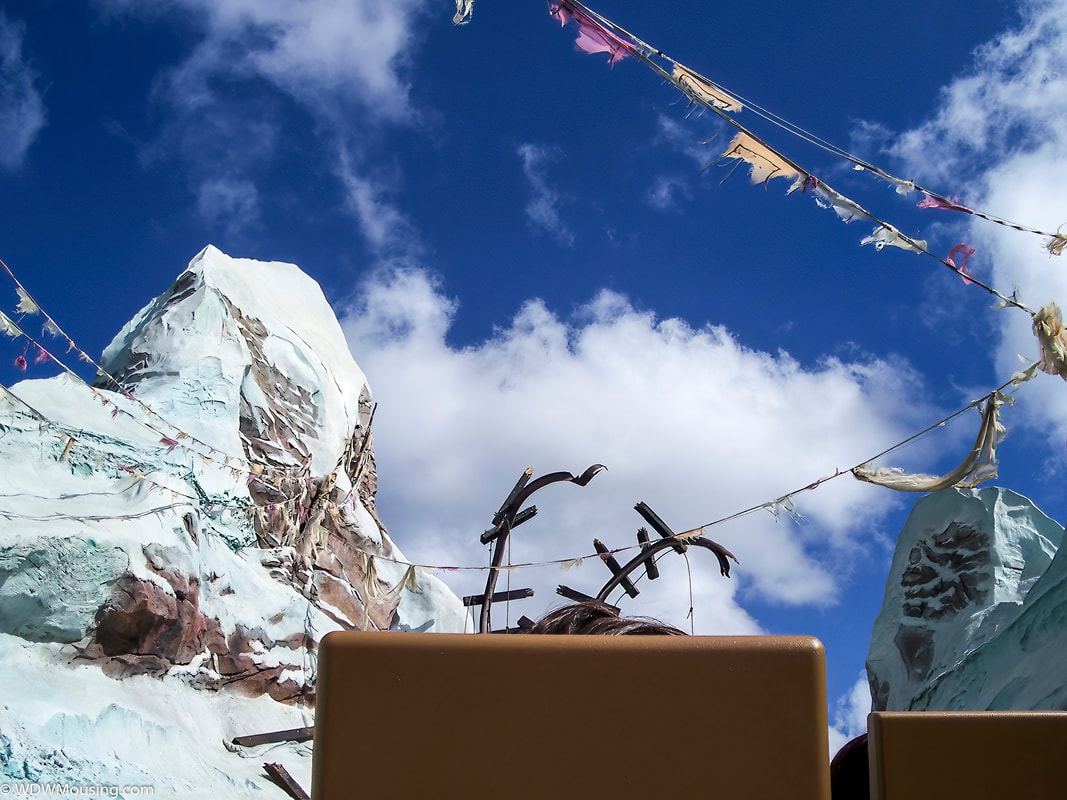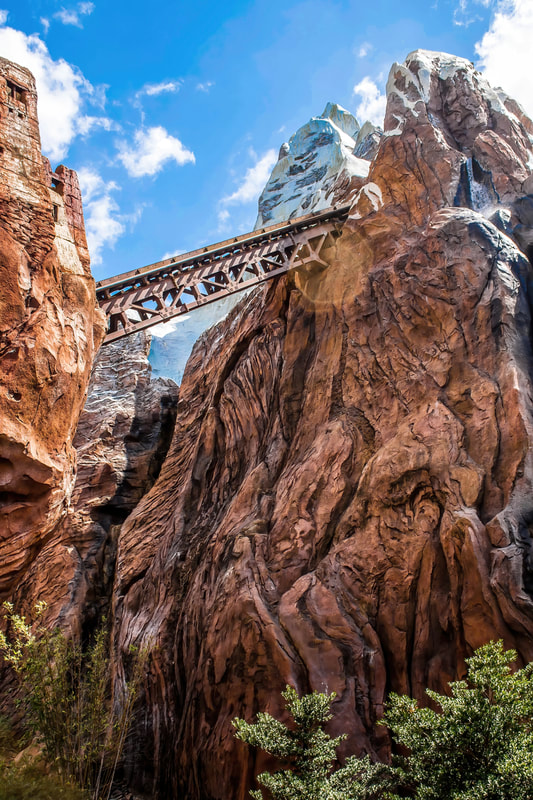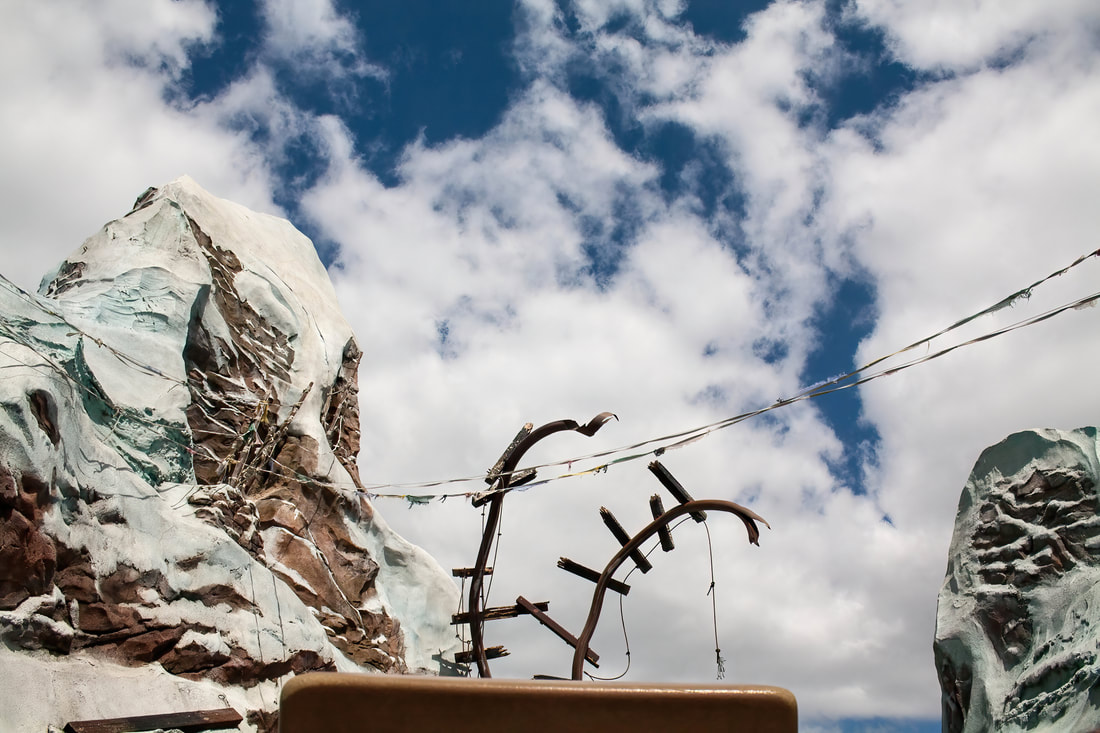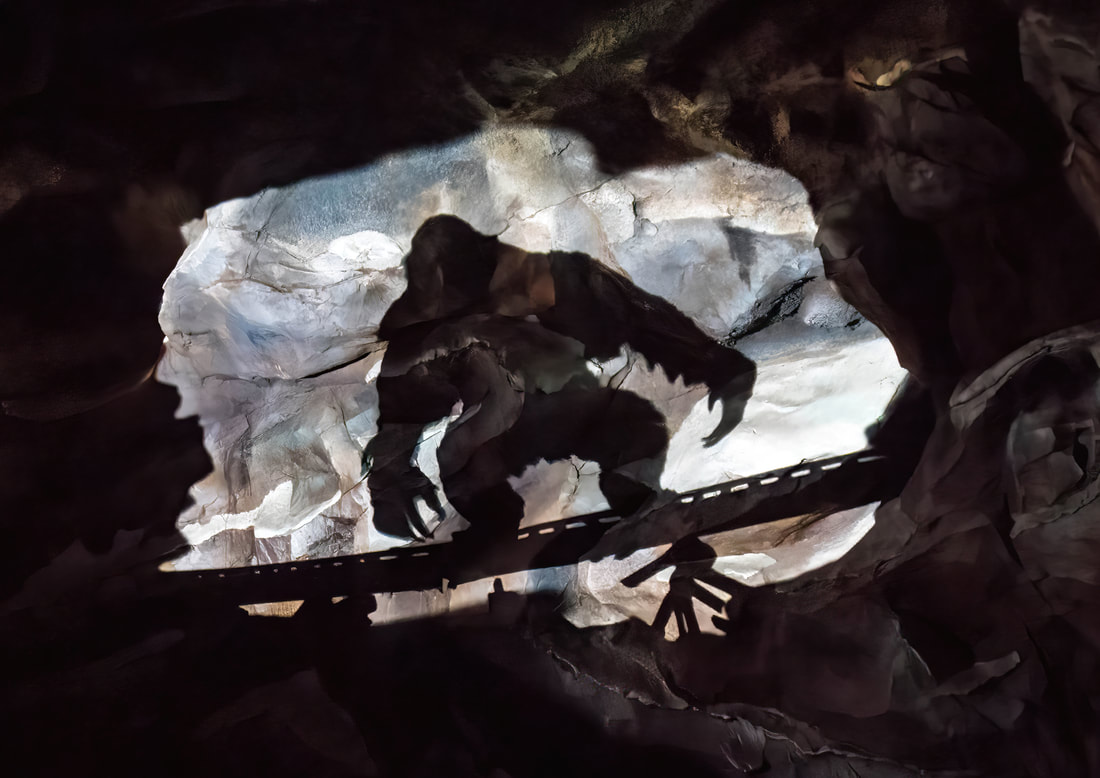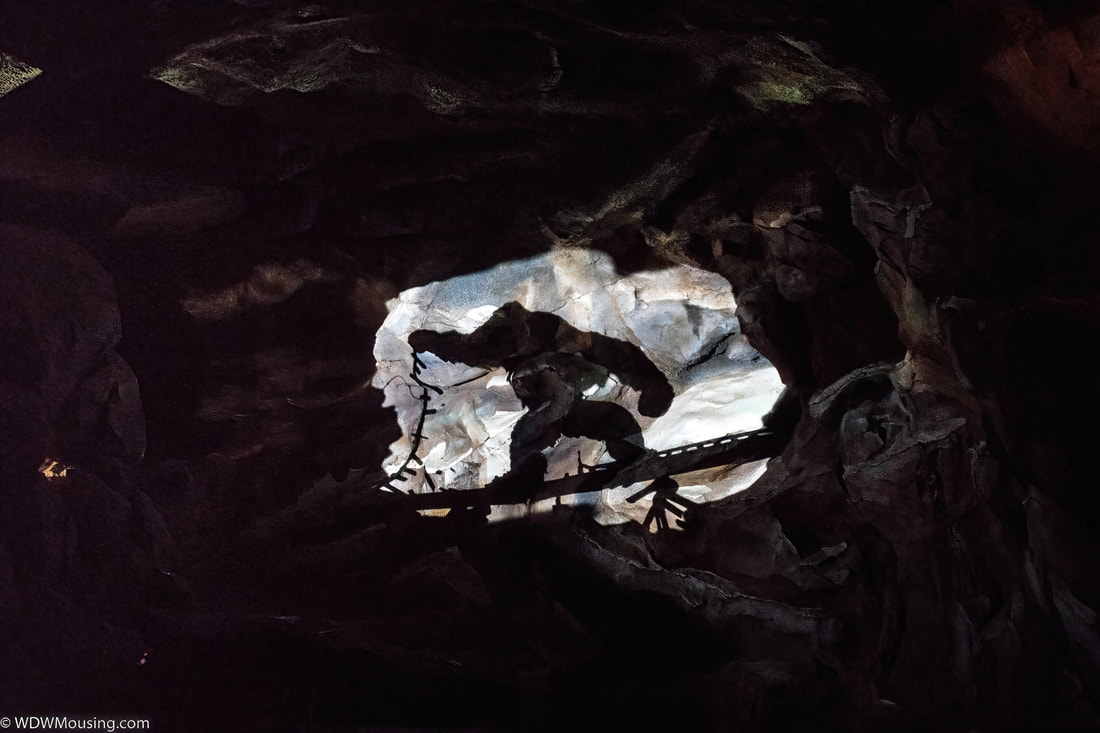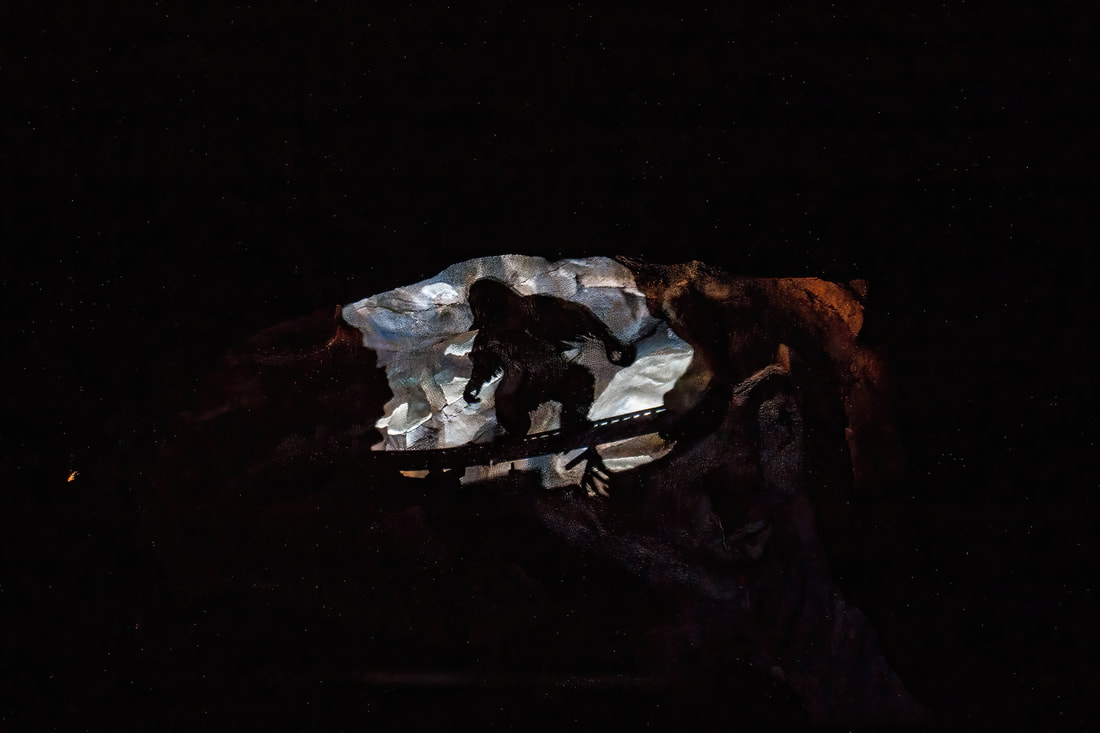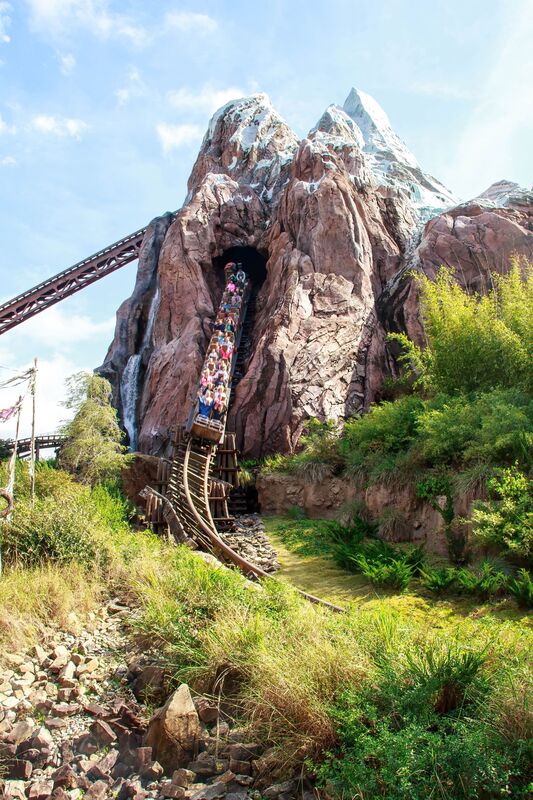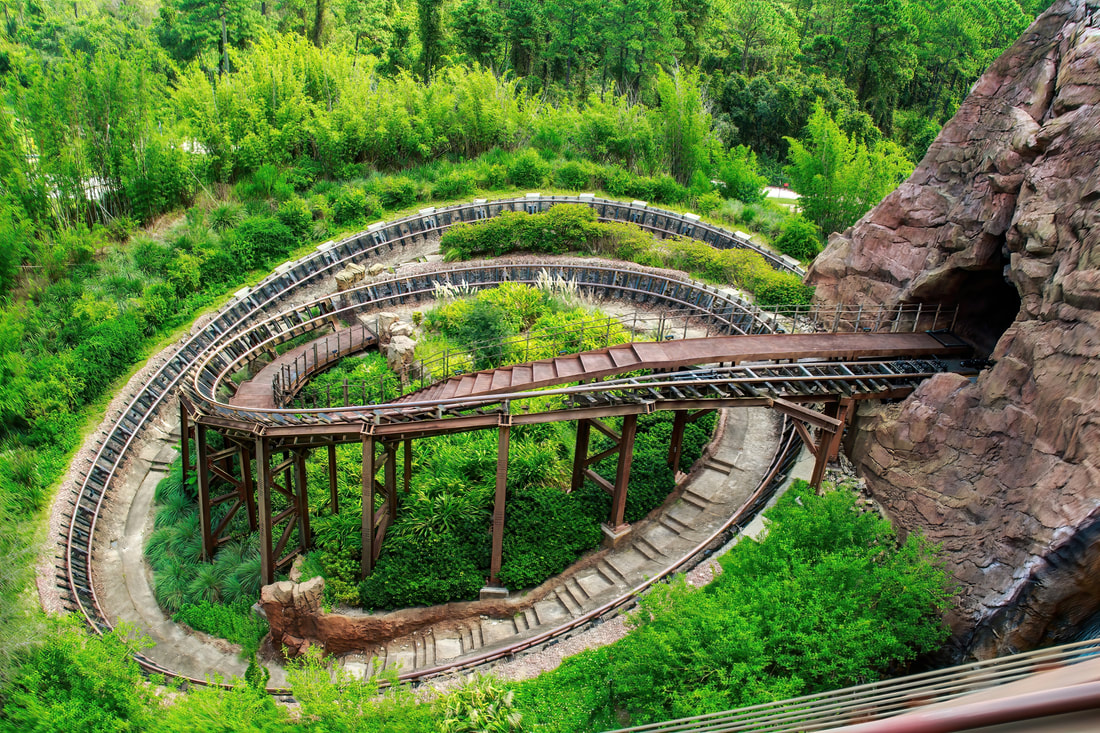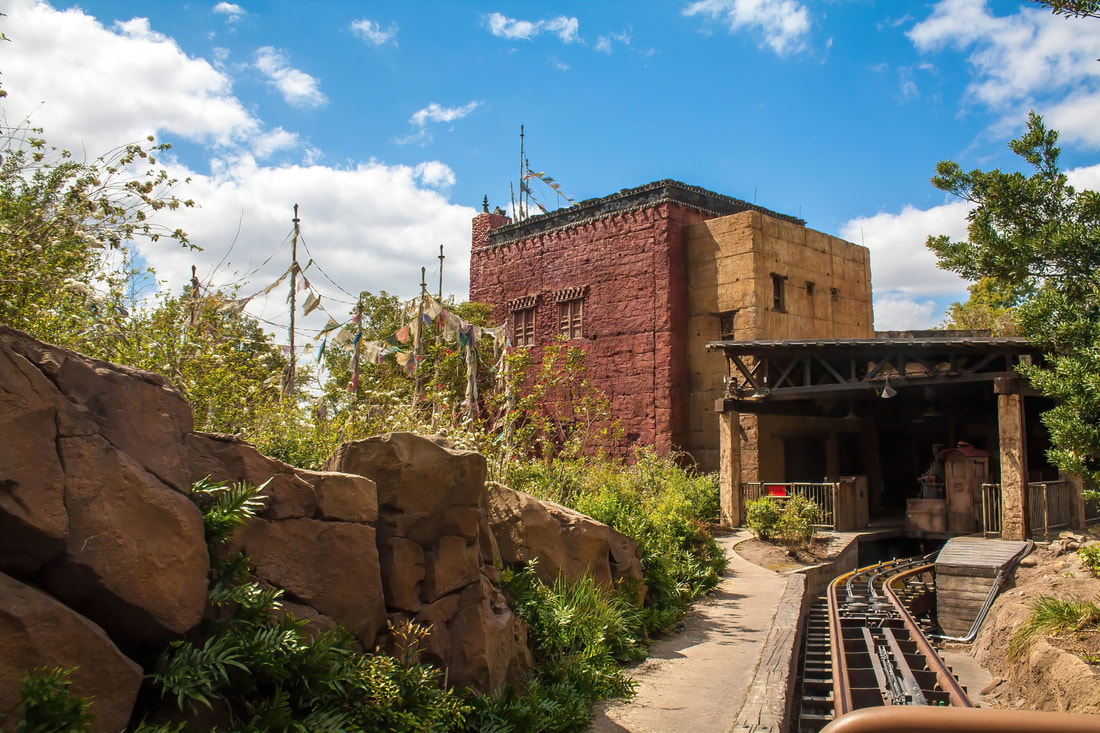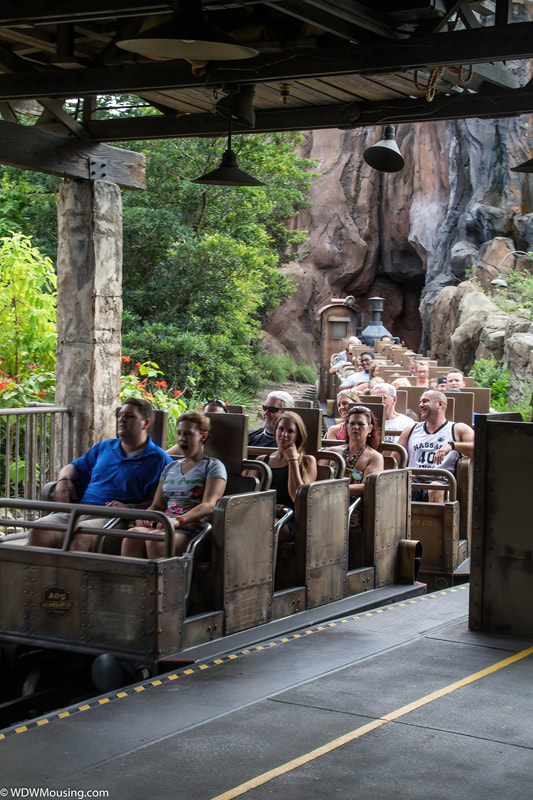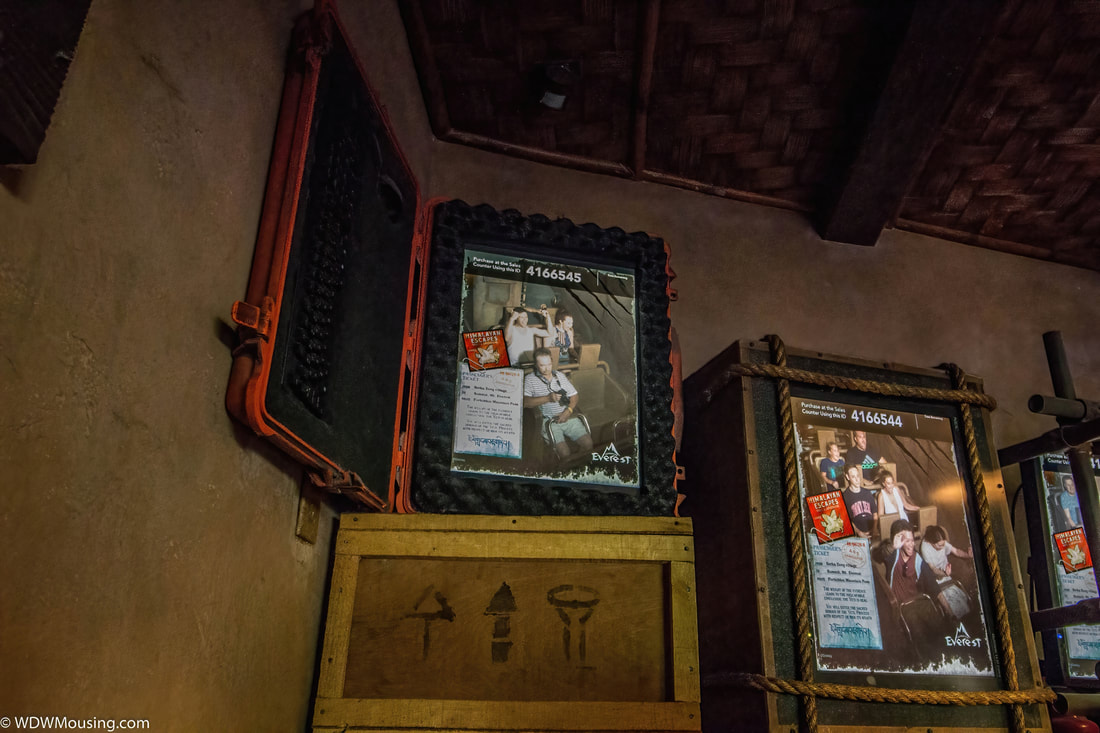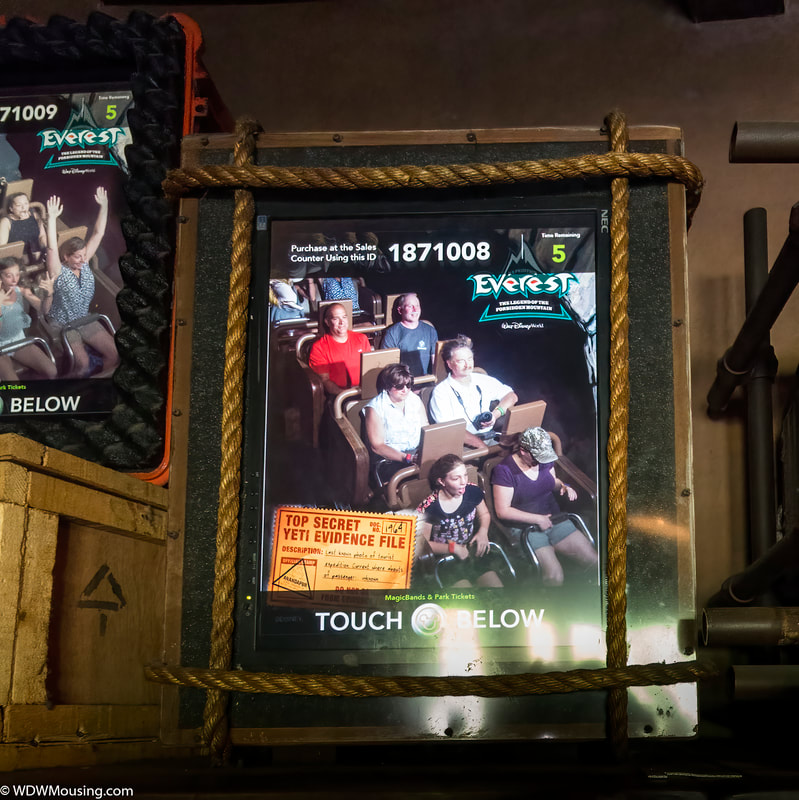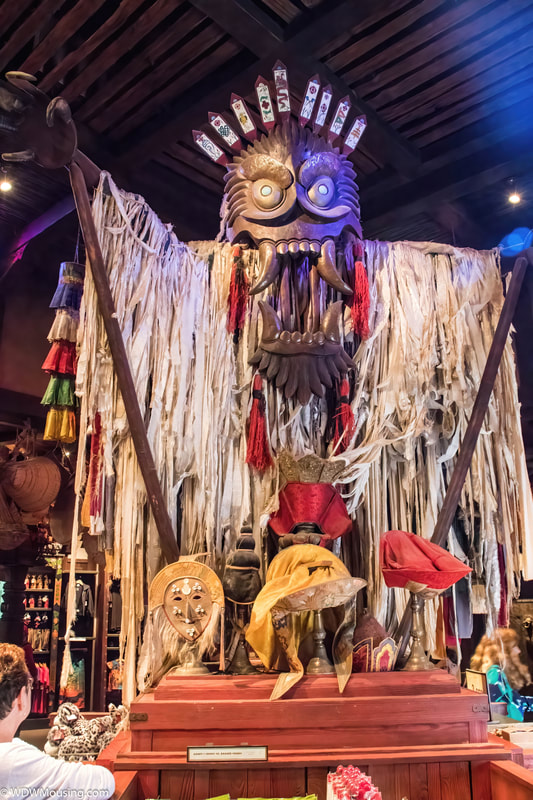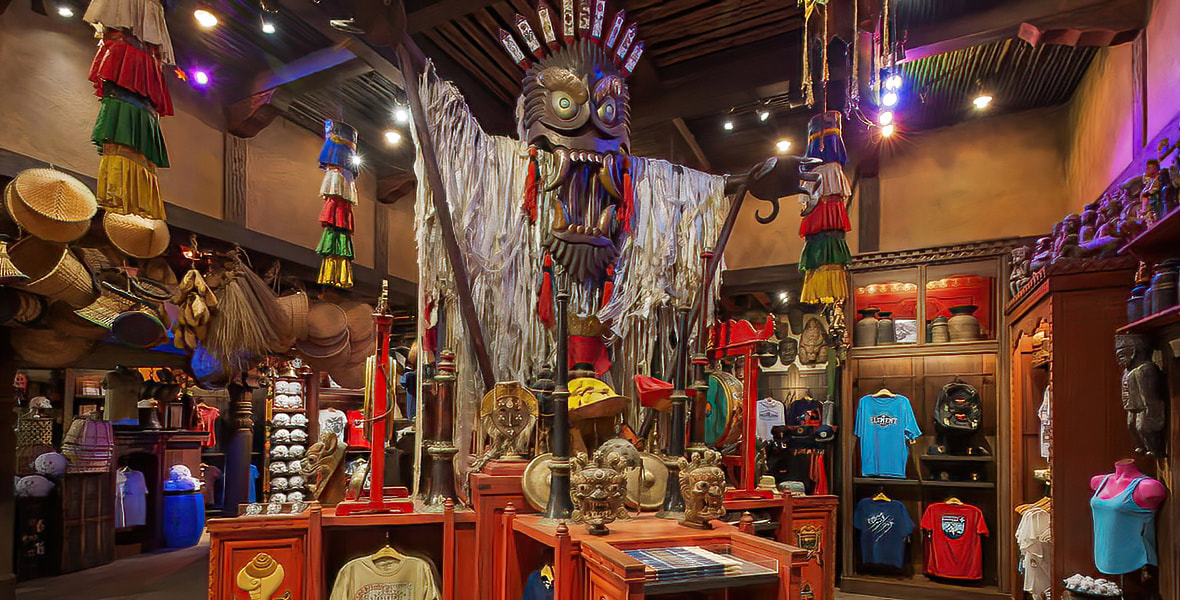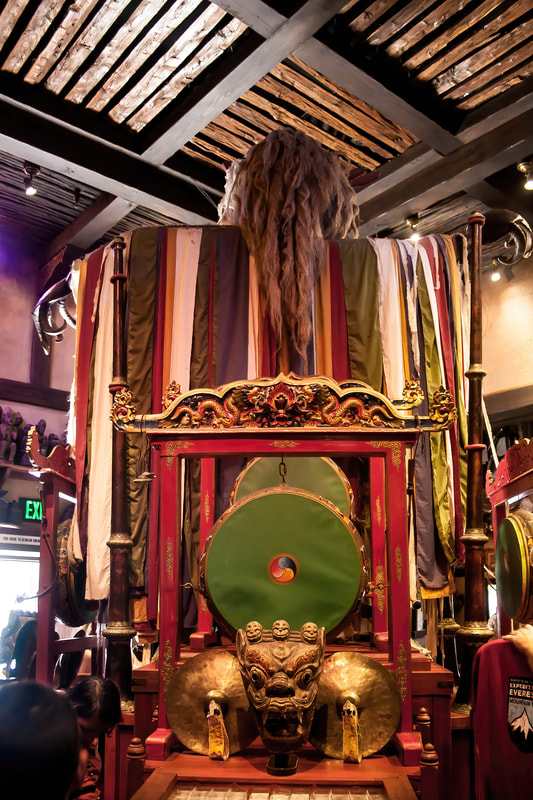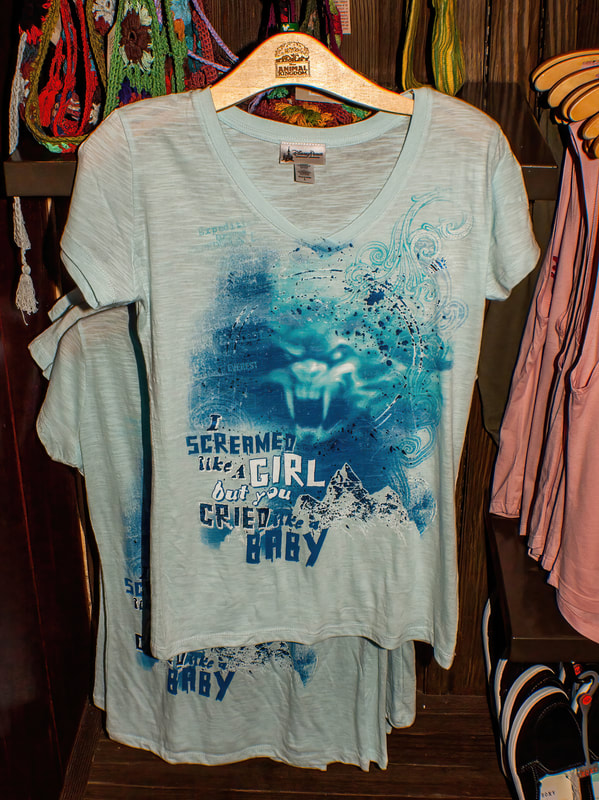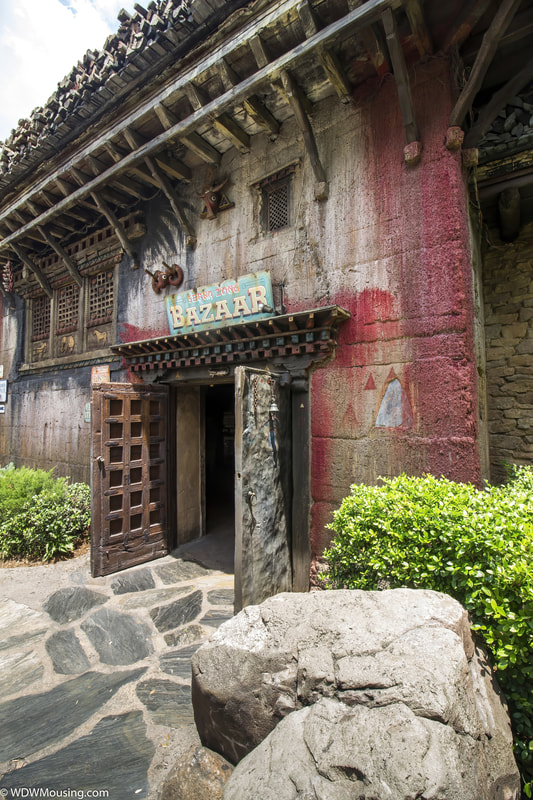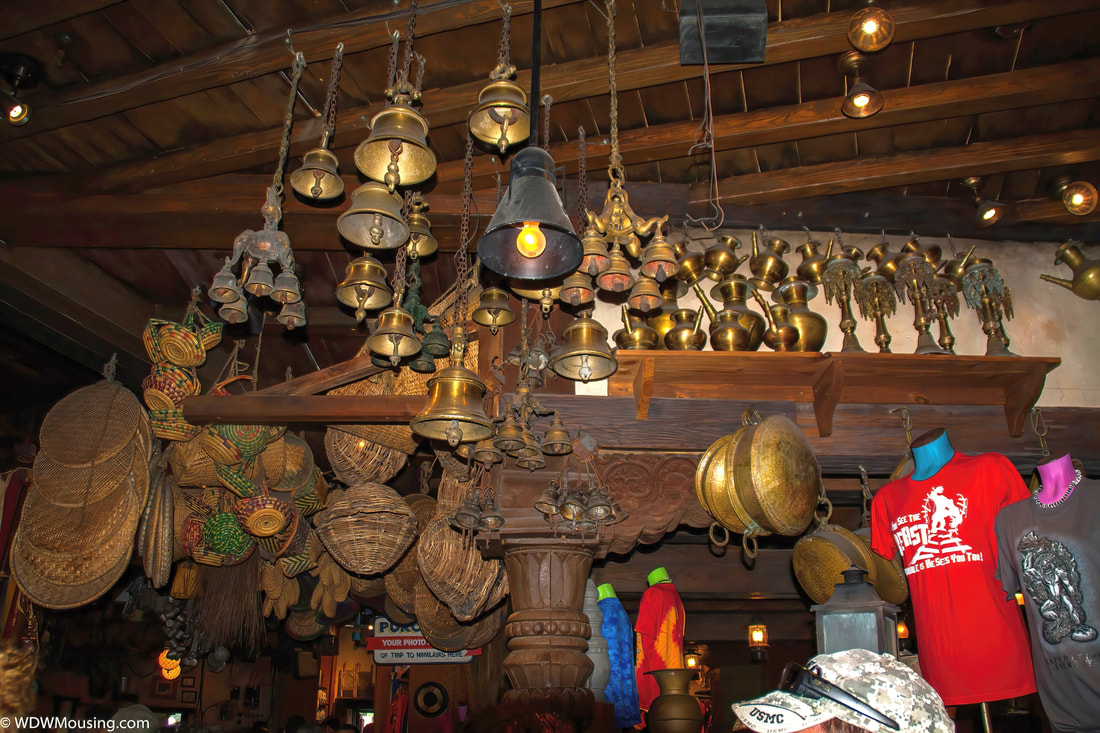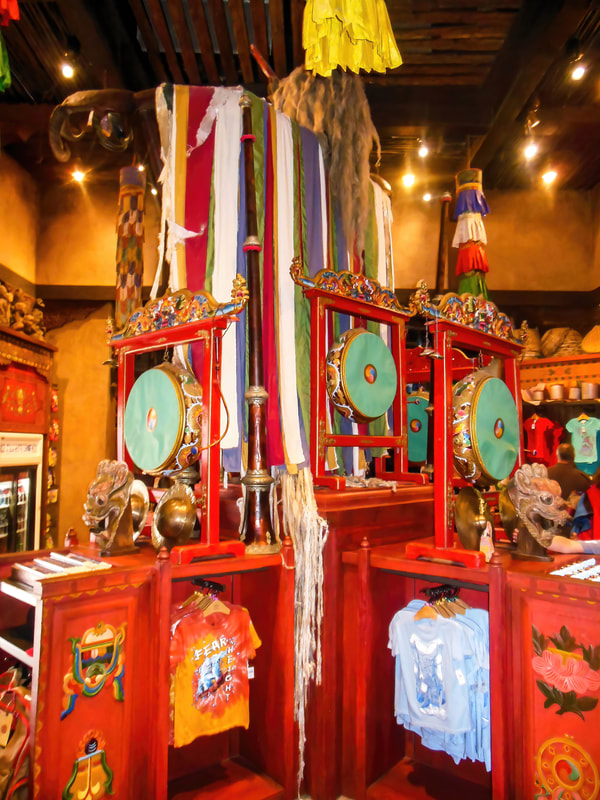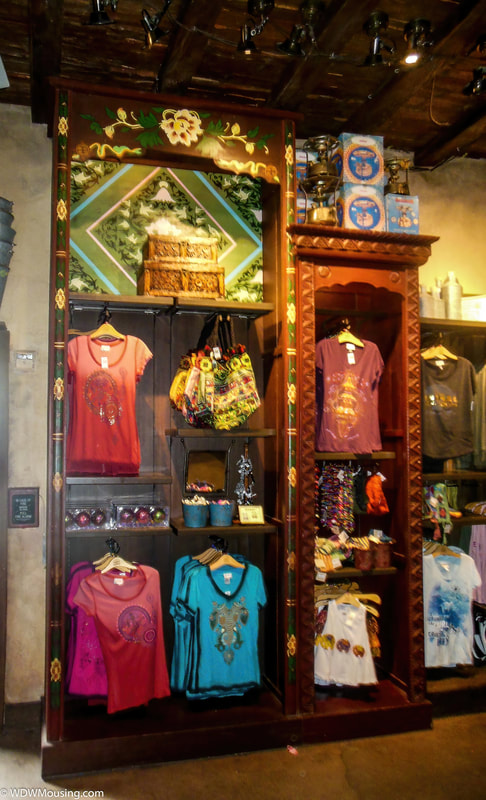Chapter 6 – Animal Kingdom – Asia
Part 1 - Expedition Everest posted July 2022
Part 1 - Expedition Everest posted July 2022
|
Introduction to Asia
Asia is one of the most popular areas in the park. It is beautifully rich in detail, history, and architecture, where you’ll feel like you’ve been transported to the Himalayas. The theming is simply spectacular in Asia. Everywhere you look Disney Imagineers have put so much thought into the details. There are used bikes placed throughout the area, and there are even bike tire treads marked into the pavement. If you take a closer look you might even spot a few animal prints in the pathways. |
There are beautiful boats tied up along the rivers edge, and colorful flags strung overhead. There are also must-eats restaurant to attractions to entertainment.
|
|
For current map of the Animal Kingdom:
|
Intro
Animal Kingdom’s Asia is home to a fictional place called Anandapur. Disney has created a whole wonderful world here in which they have set the attractions, shops and restaurants. The mythical land of Anandapur in Asia, too, is filled with little details, things that will not only delight your eyes, but enrich guests experience, helping create the illusion that you've been transported to another place and time.
As you walk through Asia, guests become aware that they are stepping into a world very different. As guests walk through Asia, they will find themself lost in the belief that they are actually traveling through a small Asian village. That’s because Imagineers made sure guests feel immersed in rich Asian culture. The Imagineers visited different villages in Asia to get a feel for what a small Asian village looks like, what it sounds like, what it feels like. The result—in part—is the beautiful Mt. Everest in the Expedition Everest attraction, a realistic-looking town, prayer flags draped across thoroughfares and a fictional village called Anandapur.
Animal Kingdom’s Asia is home to a fictional place called Anandapur. Disney has created a whole wonderful world here in which they have set the attractions, shops and restaurants. The mythical land of Anandapur in Asia, too, is filled with little details, things that will not only delight your eyes, but enrich guests experience, helping create the illusion that you've been transported to another place and time.
As you walk through Asia, guests become aware that they are stepping into a world very different. As guests walk through Asia, they will find themself lost in the belief that they are actually traveling through a small Asian village. That’s because Imagineers made sure guests feel immersed in rich Asian culture. The Imagineers visited different villages in Asia to get a feel for what a small Asian village looks like, what it sounds like, what it feels like. The result—in part—is the beautiful Mt. Everest in the Expedition Everest attraction, a realistic-looking town, prayer flags draped across thoroughfares and a fictional village called Anandapur.
Resource:
- https://www.disneyfanatic.com/why-animal-kingdom-is-even-better-at-night/?utm_source=DisneyFanatic.com+Update&utm_campaign=56eeae96f9-DisneyFanatic_com_Daily_Update_2018-11-02&utm_medium=email&utm_term=0_dfa82c1081-56eeae96f9-123911141&mc_cid=56eeae96f9&mc_eid=8c68a8a24d
- https://disneytips.com/10-favorite-things-found-in-asia-at-walt-disney-worlds-animal-kingdom/?utm_source=Mickey+Tips&utm_campaign=81c9164eae-MT+Email_COPY_01&utm_medium=email&utm_term=0_9bf0730414-81c9164eae-307144285
- https://www.disneylists.com/2017/05/dlsl-10-things-we-love-about-asia-in-animal-kingdom-at-disney-world/?utm_source=DisneyList.com+Update&utm_campaign=f3903f58a2-DisneyLists_com_Update_7_17_18&utm_medium=email&utm_term=0_e09735652c-f3903f58a2-283624153
Bridge over to Asia
In the last Chapter 5 we left the Theater of the Wild where we discussed the show “Finding Nemo”. Now as the intro stated we’re venturing over to Asia. Since addition of Asia in 1999, which was the first expansion for Animal Kingdom and then in 2006 when Expedition Everest was built, a new bridge was built to connect DinoLand to Asia.
In the last Chapter 5 we left the Theater of the Wild where we discussed the show “Finding Nemo”. Now as the intro stated we’re venturing over to Asia. Since addition of Asia in 1999, which was the first expansion for Animal Kingdom and then in 2006 when Expedition Everest was built, a new bridge was built to connect DinoLand to Asia.
View of the Lake used for the Rivers of Lights Show.
|
Serka Zong
As guests cross the bridge, they’ll enter the village of Serka Zong. Serka Zong, also known as Zerka Dzong is a fictional village from Expedition Everest. The Walt Disney Company rarely does anything halfheartedly. So when they decided to create a new Himalayas-themed ride at the Animal Kingdom, they not only built the ride (Expedition Everest), they also built a small village around it. The village is called "Serka Zong" (Fortress of the Chasm). A lot of research went into designing Expedition Everest and Serka Zong, including months-long trips to the Himalayas by Disney Imagineers, scientists from Conservation International, and video crews from Discovery Communications. As Imagineer Joe Rohde says in one of the Discovery specials, |
"Anybody can go buy some roller coaster and stick some fake rocks around it and call it 'Amazing Adventure of the Himalayas.' That's not what we do."
As the Backstory goes
Serka Zong is found on the outskirts of the Asian kingdom of Anandapur within the Bhotanta Himal district. Serka Zong was located at the base of the Himalayas, namely the Forbidden Mountain. There are no major roads or active railways that are documented to connect the village to the other municipalities of the kingdom.
Serka Zong is found on the outskirts of the Asian kingdom of Anandapur within the Bhotanta Himal district. Serka Zong was located at the base of the Himalayas, namely the Forbidden Mountain. There are no major roads or active railways that are documented to connect the village to the other municipalities of the kingdom.
|
It is unknown when the village of Serka Zong was established. Some of the most ancient residents known of the region would have been the monks who built and operated the Yeti Temple. In 1922, the Royal Anandapur Tea Company built a tea train in the Southeast Asian village of Serka Zong to reach distant markets. As guests walk through the village of Serka Zong, they’ll notice a lot of the buildings that were once ran by the Royal Anandapur Tea Company. The Anandapur Rail Services utilized the route throughout the 1920s and 1930s.
Serka Zong, which was once home to a prosperous tea plantation with steam trains transporting the region’s tea to nearby Anandapur. However, beginning in 1933, the railway experienced difficulties in operating. Some blamed it on Western treks to Mount Everest, taking the train through the Forbidden Mountains and train was forced to close down in 1934. |
The activity, as the locals say, it provoked the wrath of the Yeti, resulting in the train line's closure. The tea trade ended abruptly, and various monuments were constructed that pay homage to a legendary beast, the Yeti, in hopes of keeping this guardian of the mountain pacified.
In 2005, Entrepreneurs’ Norbu and Bob started a new operation—Himalayan Escapes: Tours and Expeditions. The company refurbished the old Anandapur Rail Services track as a way to reach Everest base camp. The Himalayan Escapes Tour & Expeditions Company wanted to arrange the Expedition Everest trek. Norbu and Bob transformed most of the buildings and refurbished all of the tea trains, opened Himalayan Escape. In addition, they changed some of the train tracks at the base of the mountain to carry trekkers to the base camps at Mount Everest.
Instead of a twenty-eight-day trek, staying at different tea shops, explorers took one thirty-hour train ride and they would reach the base camp. To do so, of course, they needed to go through the Forbidden Mountains, which is said to be guarded by the infamous Yeti.
Despite warnings from the locals, they successfully rebuilt the train, opening it up to tourists though this would only lead to the yeti tearing up the recently active tracks as a means of attacking guests.
Research:
Instead of a twenty-eight-day trek, staying at different tea shops, explorers took one thirty-hour train ride and they would reach the base camp. To do so, of course, they needed to go through the Forbidden Mountains, which is said to be guarded by the infamous Yeti.
Despite warnings from the locals, they successfully rebuilt the train, opening it up to tourists though this would only lead to the yeti tearing up the recently active tracks as a means of attacking guests.
Research:
As guests travel through Serka Zong there several features and details guests should note:
- All of the buildings in Serka Zong were made using "rammed earth" bricks, which are created by mixing water, dirt and straw together and hammering the mixture until it becomes rigid.
- Throughout the village of Serka Zong, notice that many of the corners of buildings, doorways and other elements are colored red. This is considered by Himalayan locals to keep evil spirits away.
- Many of the low plantings that are around the "village of Serka Zong," are actually Tea.
Signage
Signage plays an important role in the storytelling. No place is it used with more enthusiasm and precision than in Disney’s Animal Kingdom, particularly in Asia. Touring through the Serka Zong Village, there are many signs of life that can be gathered from the assorted posting. They provide insight into governmental agencies and local laws, the history of the region, local businesses and industries, culture, mythologies, and beliefs. These signs create a visually dynamic landscape and offer more detail on what the area represents. Even, if they are ignored by guests, they have subconsciously affected the guest experience. When they engaged with them, however, that is when the magic of the storytelling becomes part of the experience.
Signage plays an important role in the storytelling. No place is it used with more enthusiasm and precision than in Disney’s Animal Kingdom, particularly in Asia. Touring through the Serka Zong Village, there are many signs of life that can be gathered from the assorted posting. They provide insight into governmental agencies and local laws, the history of the region, local businesses and industries, culture, mythologies, and beliefs. These signs create a visually dynamic landscape and offer more detail on what the area represents. Even, if they are ignored by guests, they have subconsciously affected the guest experience. When they engaged with them, however, that is when the magic of the storytelling becomes part of the experience.
click on photo to enlarge
|
Just remember if you plan to stay, make sure the Hotel has all the amenities you need. (like hot water) Searched: |
Additional details in Serka Zong:
Tibetan Prayer Wheels
Tibetan Prayer Wheels
|
There is no shortage of details in Serka Zong. As guest look around, there three red cylinders that rest nearest the rightmost door of the amphitheater. These cylinders are commonly referred to as prayer wheels, although the name is not quite accurate. They are utilized by Tibetan Buddhists with mantras, not prayers, being written and then tightly wrapped inside each of the cylinders. The process of spinning one of these prayer wheels is said to have the same beneficial means as if the mantras were recited themselves.
While the prayer wheels in Serka Zong do not spin, they are an indelible sign of the faith of the people who live within Anandapur. In fact, the temple in which the amphitheater is housed would not be complete without the inclusion of such a sacred item. More often the prayer wheels are unnoticed by guests. But with it’s addition is has added detail to this area of Animal Kingdom and a true sense of the culture that Serka Zong represents. |
Another detail to note.
Serka Zong Mani Stones
Throughout the Himalaya guests will encounter mani stones: large and small stones engraved with a short piece of writing in Tibetan, propped up against a large rock or forming an entire wall alongside part of the track.
As guests walk through Serka Zong the road is flanked by aging stone structures with intricately carved mani stones.
Serka Zong Mani Stones
Throughout the Himalaya guests will encounter mani stones: large and small stones engraved with a short piece of writing in Tibetan, propped up against a large rock or forming an entire wall alongside part of the track.
As guests walk through Serka Zong the road is flanked by aging stone structures with intricately carved mani stones.
|
The mani stones are slate tablets, intricately carved with mantras, and devotional designs sacred to the area. The engravings is the Buddhist mantra: “om mani padme hum” (a loose translation is "hail to the jewel in the lotus"). The act of writing this mantra on the stones and placing them in the landscape is a form of prayer and meditation. Typically, they are placed together on a piled stone wall that stretches out from a small Yeti Shrine, the Serka Zong mani stones offer prayers to the spirit of the mountain. In Tibet and Nepal, they are placed at the entrance to villages, near monasteries and alongside trails and rivers because these places are significant, sometimes due to longstanding pre-Buddhist beliefs in spirits that dwell in certain locations. Tibetan Buddhists walk around mani stone collections in a clockwise direction, with which the earth and universe revolve, as an act of devotion.
It is said that mani stones carry "tremendous positive energy throughout the world" as they catch in the wind. Background: |
Prayer Flags
As guests are approaching the Expedition Everest Office (attraction) they are going to come across numerous prayer flags along the way: bright rectangles of cloth strung between pole, along mountain ridges and peaks or tied to sacred places. Even on the sheer high altitude landscape, these bands of colour are stunning.
Disney Imagineers transplanted this custom from the Himalayan region, where prayer flags similar to these hung across mountain passes and the tops of buildings. Traditionally, they’re inscribed with messages for compassion, wisdom, peace and strength. Eventually the wind slowly fades them, and the prayers become part of the universe, and the prayer flags are renewed it’s thought that the good wishes are distributed.
As guests are approaching the Expedition Everest Office (attraction) they are going to come across numerous prayer flags along the way: bright rectangles of cloth strung between pole, along mountain ridges and peaks or tied to sacred places. Even on the sheer high altitude landscape, these bands of colour are stunning.
Disney Imagineers transplanted this custom from the Himalayan region, where prayer flags similar to these hung across mountain passes and the tops of buildings. Traditionally, they’re inscribed with messages for compassion, wisdom, peace and strength. Eventually the wind slowly fades them, and the prayers become part of the universe, and the prayer flags are renewed it’s thought that the good wishes are distributed.
|
They are now a common sight throughout the Himalaya.
Prayer flags come in five colours – blue for the sky, white for air/wind, red for fire, green for water and yellow for earth – and are traditionally woodblock-printed with images and texts. The center of the flag often depicts a Lungta (strong horse), a symbol of speed and transformation of bad fortune to good, bearing three jewels on its back that represent the Buddha, Buddhist teachings and the Buddhist community. Images of four sacred animals – dragon, garuda, tiger and snow lion – can appear in the corners. Covering the rest of the flag are versions of the 400 or so mantras (powerful ritual utterances) and prayers for the life and fortune of the person tying the flag. Eventually the prints fade and the prayers become part of the universe, and the prayer flags are renewed. |
click on photo to enlarge
It’s now time to take a trip with the Himalayan Escapes Tours and Expeditions Company. Maybe we’ll even go on the refurbished Anandapur Railway for the Expeditions Everest Tour.
Himalayan Escapes Tours and Expeditions
Himalayan Escapes Tours and Expeditions is a fictional company.
Himalayan Escapes Tours and Expeditions
Himalayan Escapes Tours and Expeditions is a fictional company.
History
Himalayan Escapes Tours and Expeditions is a tourism company which was founded in the kingdom of Anandapur. It was founded in 2006 by Anandapur local, "Norbu" and a British man known as, "Bob" and were affiliated in their operations with the Anandapur Mountaineering Association.
Guests who want to catch the Flying Yak to Everest Base Camp must first check in with the Himalayan Escapes Booking Office. Himalayan Escapes organizes a number of tours and expeditions in the nearby mountains, but the one departing today is among their most popular offering: Expedition Everest.
Himalayan Escapes Tours and Expeditions is a tourism company which was founded in the kingdom of Anandapur. It was founded in 2006 by Anandapur local, "Norbu" and a British man known as, "Bob" and were affiliated in their operations with the Anandapur Mountaineering Association.
Guests who want to catch the Flying Yak to Everest Base Camp must first check in with the Himalayan Escapes Booking Office. Himalayan Escapes organizes a number of tours and expeditions in the nearby mountains, but the one departing today is among their most popular offering: Expedition Everest.
click on photo to enlarge
The touring company has served individuals including the Brit Colonel Edward Blanchard and groups such as the Anandapur Polo Club and an All American Women's Expedition.
On the wall, guests will find this letter from a Colonel Edward Blanchard (fictional) to the owners of Himalayan Escapes. It's a great example of how Imagineering storytelling is revealed through details.
On the wall, guests will find this letter from a Colonel Edward Blanchard (fictional) to the owners of Himalayan Escapes. It's a great example of how Imagineering storytelling is revealed through details.
|
Around 2006, they repurposed a Royal Anandapur Tea Company base-camp at the foot-hills of the Himalayan Forbidden Mountain in the village of Serka Zong into their own base-camp. They did this due to its access to a railway passing through the Forbidden Mountain to Mt. Everest which had been closed off since 1934 due to frequent attacks from the mountain's Yeti.
Himalayan Escapes would use the railway in 2007 for their tours of the mountain-range. As guests look around the office, they’ll see a portrait of the Rajah of Anandapur and his wife, the first rupee they ever earned, old photos from their first expedition, a business license, alerts for trekkers, a map of the Himalayan region, a pack covered in patches from past trips, a computer and radio (older models, but still functional) and a safe. |
|
The whole backstory was developed for the Expedition Everest attraction during production. With a complete history for entrepreneurs Norbu, a native Anandapuri, and Bob, a Brit, and how they came together to build the business known as Himalayan Escapes. Stories like this serve as a guide for the various Imagineering disciplines involved in creating an attraction.
Part of the backstory for Expedition Everest: Legend of the Forbidden Mountain also describes that Himalayan Escapes operates a number of different tours. This part of the story is supported in details like this tour board in the Booking Office. It lists all the tours currently underway, along with their status, number of members and staff, the name of the guide and their current location. Expedition Everest is listed on the top row, with the current location being Serka Zong. Our tour is about to depart. |
Tashi’s Trek and Tongba Shop
|
When you go through the queue, there’s this room called Tashi’s Trek and Tongba Shop, and it is just such a perfect evocation of a little tea shop that you would hike into and sit and have a little snack in, if you were deep in the Himalayas. At Tashi's Trek and Tongba Shop, climbers setting out to conquer the great mountain can get whatever supplies they need. Tashi has a healthy supply of rope, boots, packs, bedrolls, first aid kits and other equipment to outfit an expedition. Those who are perhaps a bit nervous about the pending climb might also be interested in the tongba. Tongba is a traditional Nepalese alcoholic beverage, made from fermented millet (a type of grain). |
References:
- http://disneyshawn.blogspot.com/2011/04/booking-trip-with-norbu-and-bob.html https://yourfirstvisit.net/2015/10/16/a-friday-visit-with-jim-korkis-the-anandapur-reporter-at-expedition-everest/
- https://societyofexplorersandadventurers.fandom.com/wiki/Himalayan_Escapes_Tours_and_Expeditions
- http://disneyshawn.blogspot.com/2011/04/booking-trip-with-norbu-and-bob.html
- http://disneyshawn.blogspot.com/2009/10/last-shop-for-29000-feet.html?view=sidebar
- https://collider.com/disney-animal-kingdom-joe-rohde-interview/
- https://yourfirstvisit.net/2020/01/17/a-friday-visit-with-jim-korkis-expedition-everest/
Queue - Yeti Museum History
|
The Yeti Museum was opened at some point in the late 20th century or early-mid 2000s by Professor Pema Dorje, PhD while working with the organization Conservation International.
The museum worked to promote stewardship in Anandapur as a means of protecting both its wildlife and culture while using the yeti as its keystone. |
The museum would be most notably curated by Professor Pema Dorje, PhD who believed that the yeti was real and dangerous. The museum is located directly beside of a base-camp for Himalayan Escapes with Dorje expressing concern at their journeys through the Forbidden Mountain while the company ignored Dorje's warnings. Dorje also lead lectures on the village concerning the nature of the yeti.
Note: The yeti foot-cast donated to the museum by Josh Gates are in actuality bear footprints augmented by the intense wind of the Himalayas, stretching them out to resemble what humans perceive to be humanoid foot-prints. The bear print was presented by Gates to imagineer Joe Rohde as a gift for Walt Disney Imagineering in 2008.
Note: The yeti foot-cast donated to the museum by Josh Gates are in actuality bear footprints augmented by the intense wind of the Himalayas, stretching them out to resemble what humans perceive to be humanoid foot-prints. The bear print was presented by Gates to imagineer Joe Rohde as a gift for Walt Disney Imagineering in 2008.
|
Many of the items in the queue are authentic, with climbing gear being taken from the base of Mount Everest and computers and ladders being purchased from Nepalese stores Look out for cleverly-named "Ye-Tea", a special blend produced by the Royal Anandpur Tea Company, on show in a cabinet in Tashi's Trek and Tongba Shop. |
Coca-Cola has spread across the world, and there's evidence of this in Expedition Everest. Nepalese coke bottles are visible throughout the queue line. |
Professor Pema Dorje
|
Affiliation
Conservation International Yeti Museum Associated attraction Expedition Everest Occupation Curator of the Yeti Museum Professor Pema Dorje, PhD is a character from Expedition Everest. Background Pema Dorje was the eldest son of a sherpa from the village of Serka Zong, Anandapur in the 20th century. Pema's family emigrated to Anandapur during the 1950s. After attending university in India and Nepal, Professor Pema Dorje, PhD was a conservationist and cryptozoologist who lived in the kingdom of Anandapur during the late 20th-early 21st centuries. Pema attended the Royal Anandapur University where he received a masters in anthropology, and a PhD in Conservational Science. From his position, Dr. Pema became affiliated with the organization Conservation International along with its president, primatologist Russel Mittermeier.
Dorje later moved back to Serka Zong in the kingdom's Bhotanta Himal district at the base of the Himalayas. |
Along the foothills of the Forbidden Mountain, Dr. Dorje established the Yeti Museum which was a historical and cryptozoological institute that aimed at studying the legendary cryptid known as the Yeti. An additional motive behind the museum was to promote stewardship in Anandapur as a means of protecting both its wildlife and culture while using the yeti as its keystone.
In the March of 2005, Dorje discovered a foot-print left by the yeti which he put up in the museum. The professor also held lectures in Serka Zong to promote his views on conservation and the real existence of the yeti.
Dorje's plans were however challenged in 2005 by the company Himalayan Escapes Tours and Expeditions which shared the building with the Yeti Museum. Using an abandoned railway left by the Royal Anandapur Tea Company, Himalayan Escapes' proprietors Norbu and Bob lead tours through the Forbidden Mountain to Mount Everest. Dorje knew that this was dangerous and warned locals and potential clients about this, only to be gaslit by Norbu and Bob.
Notes:
In the March of 2005, Dorje discovered a foot-print left by the yeti which he put up in the museum. The professor also held lectures in Serka Zong to promote his views on conservation and the real existence of the yeti.
Dorje's plans were however challenged in 2005 by the company Himalayan Escapes Tours and Expeditions which shared the building with the Yeti Museum. Using an abandoned railway left by the Royal Anandapur Tea Company, Himalayan Escapes' proprietors Norbu and Bob lead tours through the Forbidden Mountain to Mount Everest. Dorje knew that this was dangerous and warned locals and potential clients about this, only to be gaslit by Norbu and Bob.
Notes:
- Pema Dorje was inspired by real-world Tibetan doctor, Dr. Pema Dorjee.
- Conservation International is a real-world organization and its president Russell A. Mittermeier, PhD (1949-present) is a real person.
References:
- http://www.scoutingny.com/what-happened-to-tomorrowland-plus-a-quick-trip-to-mount-everest/
- http://disneyshawn.blogspot.com/2011/05/yeti-museum.html
- http://www.mainstgazette.com/2009/11/legend-of-yeti.html
- https://www.onlywdworld.com/2011/01/checking-out-signs-in-disneys-animal.html
- https://www.flickr.com/photos/ddindy/49466435937
- https://schmirfle.blogspot.com/2016/09/the-wilderness-explorers-handbook.html
- https://www.drepung.org/Changing/classes/Pema-Dorjee-2009.htm
- https://societyofexplorersandadventurers.fandom.com/wiki/Professor_Pema_Dorje
Expedition Everest Background
Finally, we’ll board one of the trains to begin the journey up the Forbidden Mountain.
Finally, we’ll board one of the trains to begin the journey up the Forbidden Mountain.
The Big Mountain isn’t Everest
Imagineers based Expedition Everest’s facade on the Himalayas. Although Mount Everest is seen in the background of the superstructure, the fictional “Forbidden Mountain” serves as the main peak.
Everest is the mountain on the right. It was the Imagineers desire to create a mountain “range” and decided to put Everest further back to add to the illusion of distance and majesty. And in Tibet, there is another range of mountains in front of Everest. So, actuality it would be correct to see other peaks in the foreground of the mountains in the Animal Kingdom.
Imagineers based Expedition Everest’s facade on the Himalayas. Although Mount Everest is seen in the background of the superstructure, the fictional “Forbidden Mountain” serves as the main peak.
Everest is the mountain on the right. It was the Imagineers desire to create a mountain “range” and decided to put Everest further back to add to the illusion of distance and majesty. And in Tibet, there is another range of mountains in front of Everest. So, actuality it would be correct to see other peaks in the foreground of the mountains in the Animal Kingdom.
Expedition Everest
The towering Expedition Everest at Animal Kingdom is one of the most thrilling roller coasters every created by Disney's Imagineers. Expedition Everest – Legend of the Forbidden Mountain is a high speed, thrilling roller coaster attraction. It's also stunningly detailed, and packed with little details.
Dominating the Asia area of the park, Expedition Everest was opened in 2006.
The ride's storyline revolves around guests embarking on expedition to climb Mount Everest. However, in order to reach the mountain, they must first head to a base camp on the Forbidden Mountain. Legend says that the mountain is guarded by the mysterious Yeti and that he doesn't take too kindly to intruders.
The journey begins even before guests board the ride as the queue sets the mood. The highly detailed queue includes information about the upcoming expedition from the “Himalayan Escapes” travel agency, a beautiful temple as well as an amazing “Yeti Museum” featuring artifacts from actual expeditions past.
Guests will board an old train in the village of Serka Zong and begin your adventure in search of the Yeti through the Himalayas and Mount Everest. Expedition Everest reaches a top speed of 50 MPH and travels forwards and backwards, but does not have any inversions.
The towering Expedition Everest at Animal Kingdom is one of the most thrilling roller coasters every created by Disney's Imagineers. Expedition Everest – Legend of the Forbidden Mountain is a high speed, thrilling roller coaster attraction. It's also stunningly detailed, and packed with little details.
Dominating the Asia area of the park, Expedition Everest was opened in 2006.
The ride's storyline revolves around guests embarking on expedition to climb Mount Everest. However, in order to reach the mountain, they must first head to a base camp on the Forbidden Mountain. Legend says that the mountain is guarded by the mysterious Yeti and that he doesn't take too kindly to intruders.
The journey begins even before guests board the ride as the queue sets the mood. The highly detailed queue includes information about the upcoming expedition from the “Himalayan Escapes” travel agency, a beautiful temple as well as an amazing “Yeti Museum” featuring artifacts from actual expeditions past.
Guests will board an old train in the village of Serka Zong and begin your adventure in search of the Yeti through the Himalayas and Mount Everest. Expedition Everest reaches a top speed of 50 MPH and travels forwards and backwards, but does not have any inversions.
Info:
Construction of Forbidden Mountain
It took 1,800 tons of steel, 2,000 gallons of paint and stain, 4,424 ft of steel, and about 10,000 tons of concrete to create Expedition Everest mountains and the buildings of the Serka Zong village.
But the construction process was a bit more complicated that. The Disney Imagineer designed the Mountains and Vekoma was the company that provided a brand new, state-of-the-art track system.
The rails are visible on the outside of the track as opposed to inside, giving the ride a smoother feel and a more ‘train track-like’ look. This is the first Disney ride to feature a track that switches from forward to backward to forward movement.
If you want to learn more about the making of Expedition Everest check out these videos:
Research:
Note: Vekoma Rides Manufacturing BV is a Dutch designer of manufacturer of amusement rides, best known for its thrill rides and roller coasters. The company has manufactured rides installed at amusement parks and theme parks all over the globe, including at multiple Disney Parks, under contract from Walt Disney Imagineering. They currently working on the new Tron attraction in the Magic Kingdom, Walt Disney World.
Doc:
It took 1,800 tons of steel, 2,000 gallons of paint and stain, 4,424 ft of steel, and about 10,000 tons of concrete to create Expedition Everest mountains and the buildings of the Serka Zong village.
But the construction process was a bit more complicated that. The Disney Imagineer designed the Mountains and Vekoma was the company that provided a brand new, state-of-the-art track system.
The rails are visible on the outside of the track as opposed to inside, giving the ride a smoother feel and a more ‘train track-like’ look. This is the first Disney ride to feature a track that switches from forward to backward to forward movement.
If you want to learn more about the making of Expedition Everest check out these videos:
Research:
Note: Vekoma Rides Manufacturing BV is a Dutch designer of manufacturer of amusement rides, best known for its thrill rides and roller coasters. The company has manufactured rides installed at amusement parks and theme parks all over the globe, including at multiple Disney Parks, under contract from Walt Disney Imagineering. They currently working on the new Tron attraction in the Magic Kingdom, Walt Disney World.
Doc:
The ride track and the mountain itself are two completely different feats of construction- the two are completely independent of the other. The track and mountain never touch and were both built with superstructures that are not dependent on the other.
click on photo to enlarge
Two key sequences in Expedition Everest see the trains switch from travelling forwards to backwards, and vice-versa. This achieved by using two track switches, which weigh 200,000 pounds each. Computers are used to trigger the switches, which rotate into the required position within six seconds.
Ride
The queue for the Expedition Everest ride starts at the office of the fictional “Himalayan Escapes” travel agency, progressing to a replica temple with little holy figures.
The riders board the roller coaster in the model village of Serka Zong, to begin a speedy route through the Himalayas to the base camp of Mount Everest.
The queue for the Expedition Everest ride starts at the office of the fictional “Himalayan Escapes” travel agency, progressing to a replica temple with little holy figures.
The riders board the roller coaster in the model village of Serka Zong, to begin a speedy route through the Himalayas to the base camp of Mount Everest.
The train departs the station to the right and climbs a small lift leading to a short drop, then circles around to the 118-foot (36 m) lift hill, carrying the riders into the mountain.
On the way up the Forbidden Mountain, it passes through a ransacked temple with murals of the yeti, warning the riders that the mountain is its territory.
Yeti Temple
The yeti temple refers to a ruined temple on the mountain face of the Forbidden Mountain in the Himalayan village of Serka Zong, Anandapur. The temple was constructed on a large rock plateau adjacent to the Forbidden Mountain. The temple pays tribute to the Yeti, the great beast who is said to be the protector of the forbidden mountain. For unknown reasons the temple was left in ruins and now the Himalayan Escapes Tours steam train-track runs through it.
Yeti Temple
The yeti temple refers to a ruined temple on the mountain face of the Forbidden Mountain in the Himalayan village of Serka Zong, Anandapur. The temple was constructed on a large rock plateau adjacent to the Forbidden Mountain. The temple pays tribute to the Yeti, the great beast who is said to be the protector of the forbidden mountain. For unknown reasons the temple was left in ruins and now the Himalayan Escapes Tours steam train-track runs through it.
The incorporation of the Yeti into Expedition Everest provided the Animal Kingdom with its first mythological creature. Although such creatures were supposed to be featured in an area called “Beastly Kingdom,” that area never materialized due to budgetary reasons. (See Animal Kingdom Chapter 1 - Animal Kingdom – Getting There)
|
In the 1920s, the Royal Anandapur Tea Company built a tea train in the Southeast Asian village of Serka Zong to reach distant markets. This train-track passed directly through the Yeti temple, possibly to pay tribute to the great beast.
However, beginning in 1933, the railway experienced difficulties in operating. The train was forced to close down in 1934 due to operation problems including attacks from the Yeti. Around 2006 the tea train-track was acquired by the company Himalayan Escapes Tours and Expeditions for their Himalayan tours. Once again, the temple was passed through on the train's route to the forbidden mountain. Note: The mural of the yeti in the Yeti Temple is modelled after imagineer Joe Rohde. The red coloring on the temple's walls come from the belief that the color red can ward off malicious spirits.
|
A noise can also be heard during this lift hill, foreshadowing the Yeti.
When it emerges from the other side, the train suddenly hits the brakes due to the track in front of the guests being stripped apart, presumably by the yeti. To the left of the broken tracks is a secret bird animatronic sitting on a stick. The train itself is held in place by a series of rubber tires while an automatic switch rotates the piece of track directly behind the train.
The train then rolls backwards along a new route that spirals down through the mountain. It eventually comes to a halt in a large cave, where riders see the Yeti's shadow on the wall as it tears up more track. This effect distracts riders from noticing another automatic track switch in front of them.
At the top of the mountain the train curves around the main peak and goes through a cave. When it emerges, the ride draws to a halt in front of track that has been torn apart, presumably by the yeti.
At the top of the mountain the train curves around the main peak and goes through a cave. When it emerges, the ride draws to a halt in front of track that has been torn apart, presumably by the yeti.
|
The train then rolls backwards along a new route that spirals down through the mountain. It eventually comes to a halt in a large cave, where riders see the Yeti's shadow on the wall as it tears up more track. This effect distracts riders from noticing another automatic track switch in front of them.
At the top of the mountain the train curves around the main peak and goes through a cave. When it emerges, the ride draws to a halt in front of track that has been torn apart, presumably by the yeti. |
The Yeti
Guests may not be unaware that the Yeti animatronic that’s in Expedition Everest was originally much more advanced in his movements. A few months after the ride opened, the concrete foundation on which the Yeti stands cracked, and his full range of movements was put to an end. Instead, a disco-style strobe light now flashes behind him to give the impression that he is moving.
The yeti was the most ambitious audio-animatronic figure ever built by Disney's Imagineers. It stands at
22 feet tall, and originally featured movement controlled by 10 actuators. It was able to move five feet horizontally and two feet vertically in its original guise.
Guests may not be unaware that the Yeti animatronic that’s in Expedition Everest was originally much more advanced in his movements. A few months after the ride opened, the concrete foundation on which the Yeti stands cracked, and his full range of movements was put to an end. Instead, a disco-style strobe light now flashes behind him to give the impression that he is moving.
The yeti was the most ambitious audio-animatronic figure ever built by Disney's Imagineers. It stands at
22 feet tall, and originally featured movement controlled by 10 actuators. It was able to move five feet horizontally and two feet vertically in its original guise.
As the shadow moves away, the train rolls forward out of the mountain, going past the on-ride camera and plunging down the main 80-foot (24 m) drop. It enters a 250° turn and speeds back up through another cave in the mountain, where the roars of the yeti are heard once more.
The train drops through a cave, where the yeti is reaching down toward it.
On reaching the bottom of this drop, riders return to the unloading dock and depart into a gift shop.
The ride lasts 2 minutes and 50 seconds.
On reaching the bottom of this drop, riders return to the unloading dock and depart into a gift shop.
The ride lasts 2 minutes and 50 seconds.
Serka Zong Bazaar
The Serka Zong Bazaar is a market which largely sold mountaineering equipment, clothes, crafted goods and Himalayan themed souvenirs.
The town of Serka Zong has a strong belief in, and reverence toward, the Yeti. This theme pops up throughout the area, it also shows up inside the store.
The Serka Zong Bazaar is a market which largely sold mountaineering equipment, clothes, crafted goods and Himalayan themed souvenirs.
The town of Serka Zong has a strong belief in, and reverence toward, the Yeti. This theme pops up throughout the area, it also shows up inside the store.
|
Various masks and prayer idols flank the walls, adding a lot of texture to the room. In addition to the more decorative pieces there are also more utilitarian objects, like pots and pans. The dusty nature of these knick knacks is so appropriate, that it would seem weird if everything was perfectly organized and "clean."
|
Even though the merchandise is limited, this is a must do store to see the theming. There is so much to look at and explore.
Resource:
Resource:
InterConnections
Trader Sam's Enchanted Tiki Bar
The masks are located around the giant yeti costume look like they're for sale, but are for display only.
Trader Sam's Enchanted Tiki Bar
The masks are located around the giant yeti costume look like they're for sale, but are for display only.
Background Link for the Society of Explorers and Adventurers:
Note: As you may be aware by reading some of the details in these Chapters, the Imagineer have interwoven theme and backstories into the attraction at Walt Disney World. The Society of Explorers and Adventurers is just one of them.
Note: As you may be aware by reading some of the details in these Chapters, the Imagineer have interwoven theme and backstories into the attraction at Walt Disney World. The Society of Explorers and Adventurers is just one of them.
In the next Chapter, we travel further into Asia. We'll float down the Kali River. check out Amphitheater and the River of Light (which unfortunately was was short lived), see the KiteTail Show, Tour the number of Temples and Shrines, then travel down the Road to Anandapur and have Ice Cream at the Truck(it worth seeing).
|
|
Afterword:
WDWMousing.com is designed to be a tour of Walt Disney World through photos. We have been to Walt Disney World countless times over the past 25 years and accumulated a magnitude of photos in that time. This website is an intention to combine two of our favorite pastimes, Walt Disney World and photography, and provide an insightful pictorial tour. While doing so, we've done an extensive research of the internet and literary sources for background information on each area and attraction. The information is available, but most bits and pieces are scattered all over. WDWMousing doesn't intend to rewrite the stories, legends or data, but to try and collect it into one location with reference and links to the original articles and authors. And giving rightful credit. We've stumbled through quite a bit of mis-information, most of which came to life by fans because the origins were lost, forgotten or no one seems to remember. Over the past 25 years we've also lost most of the great Imagineers that helped develop, design and build the original concepts of Walt Disney World. So we believe it's extremely important to make sure that their efforts, intentions, details and creativity in making this Happiest Place on Earth isn't lost. So we ask for feedback, insights, and suggestions. Thank you WDWMousing |





